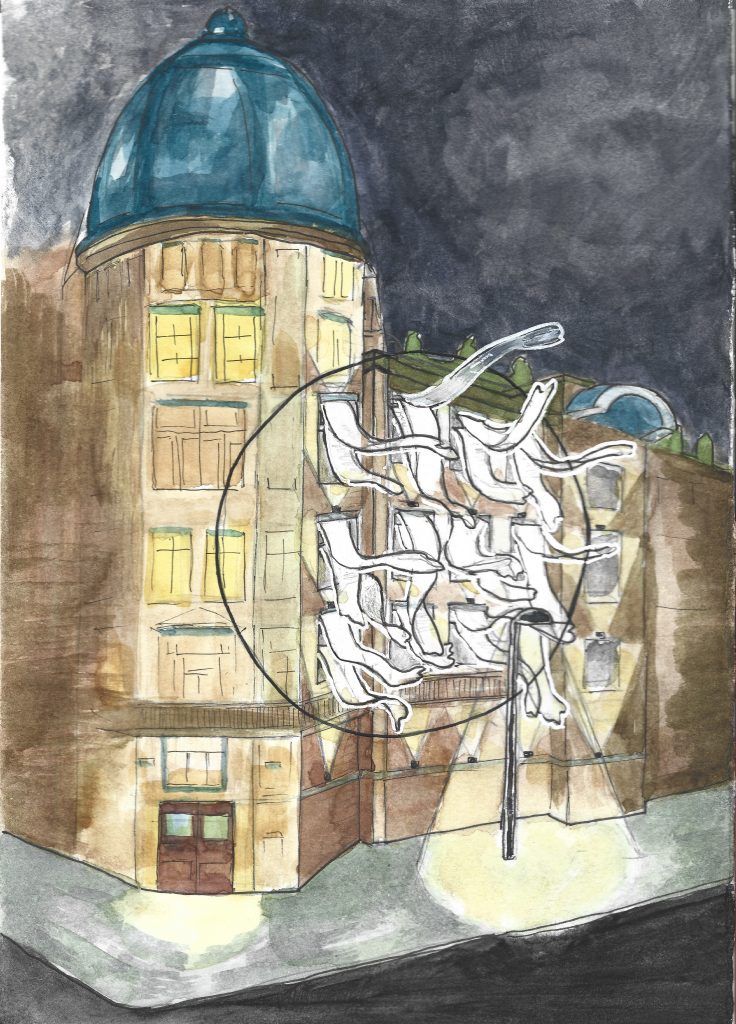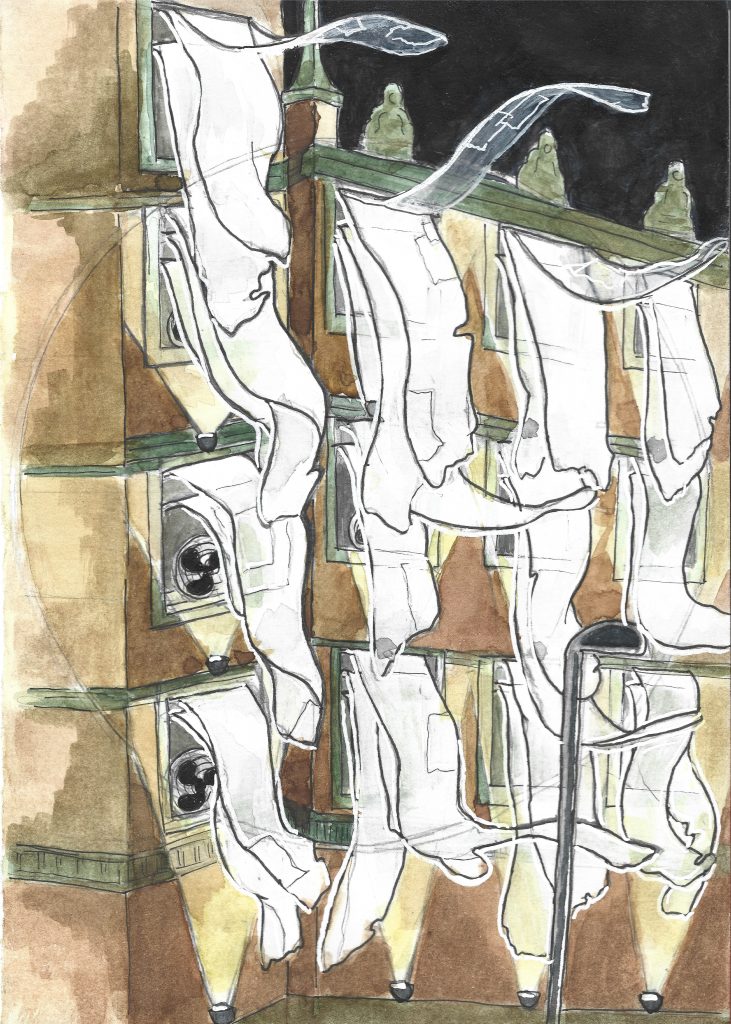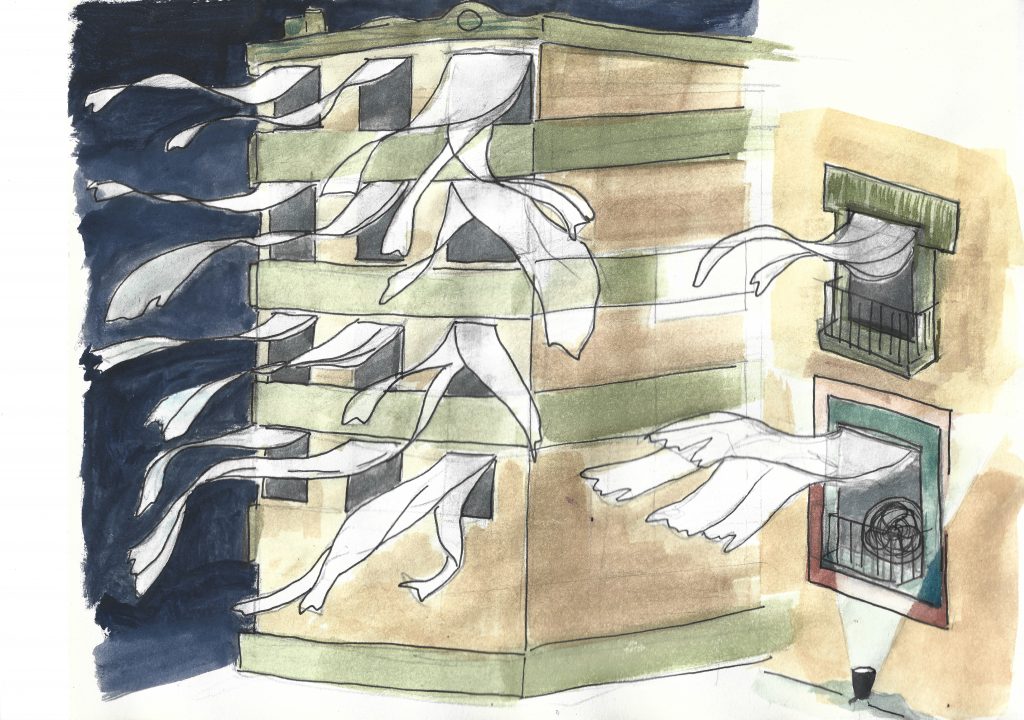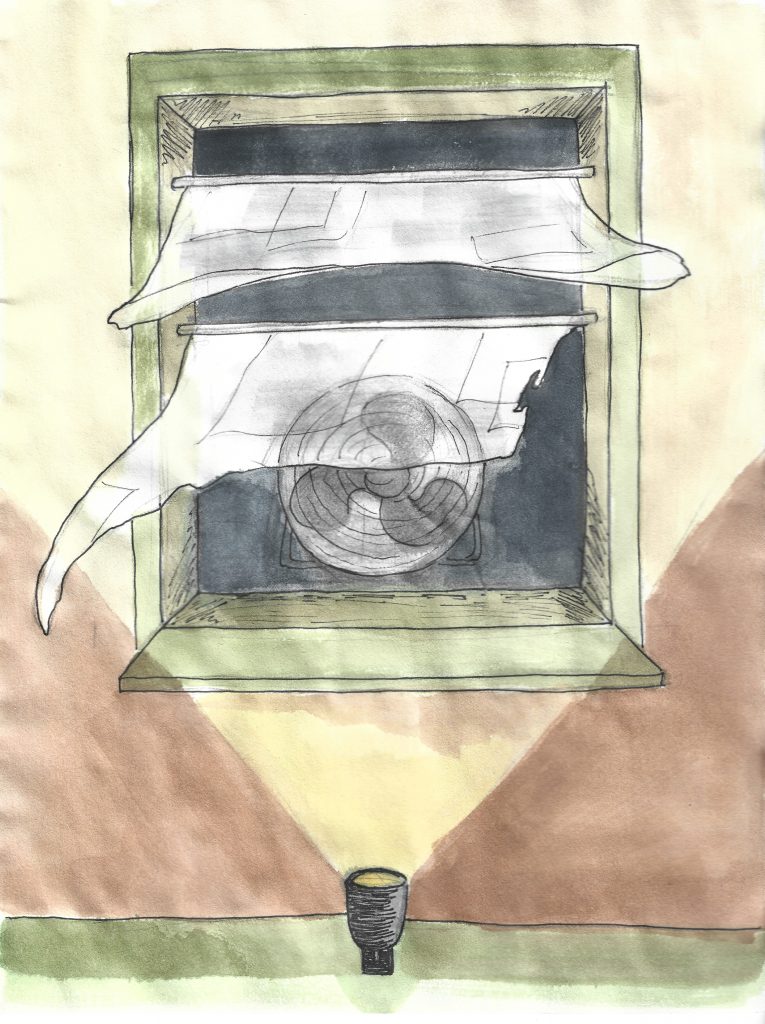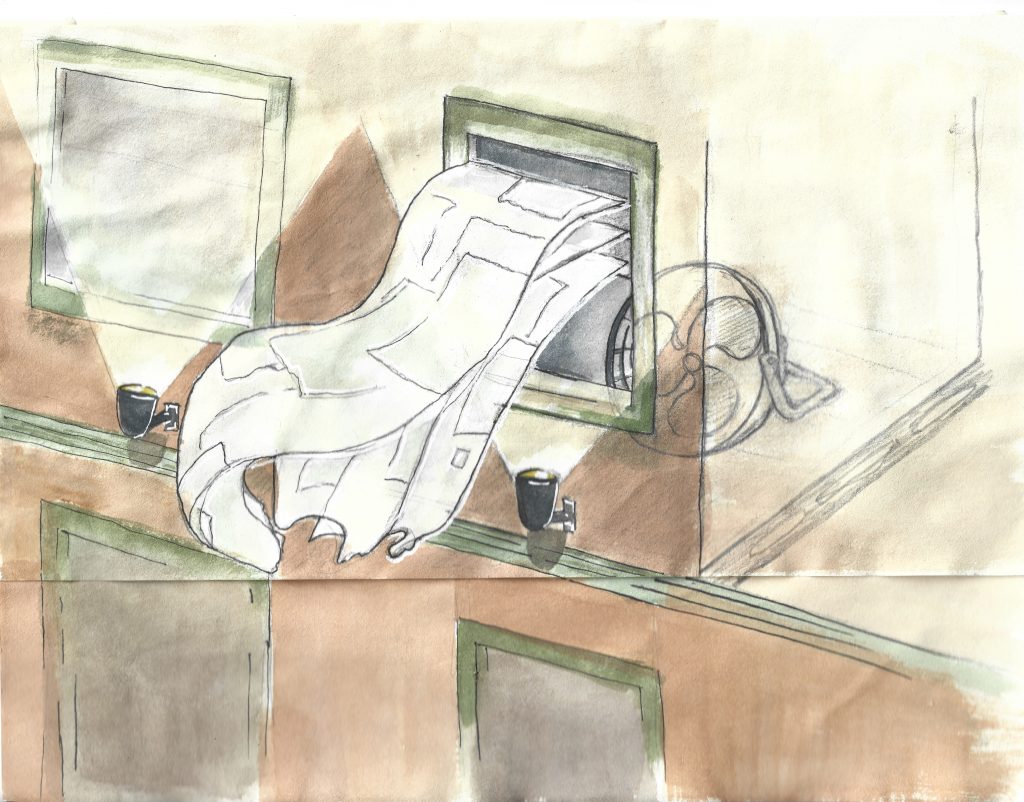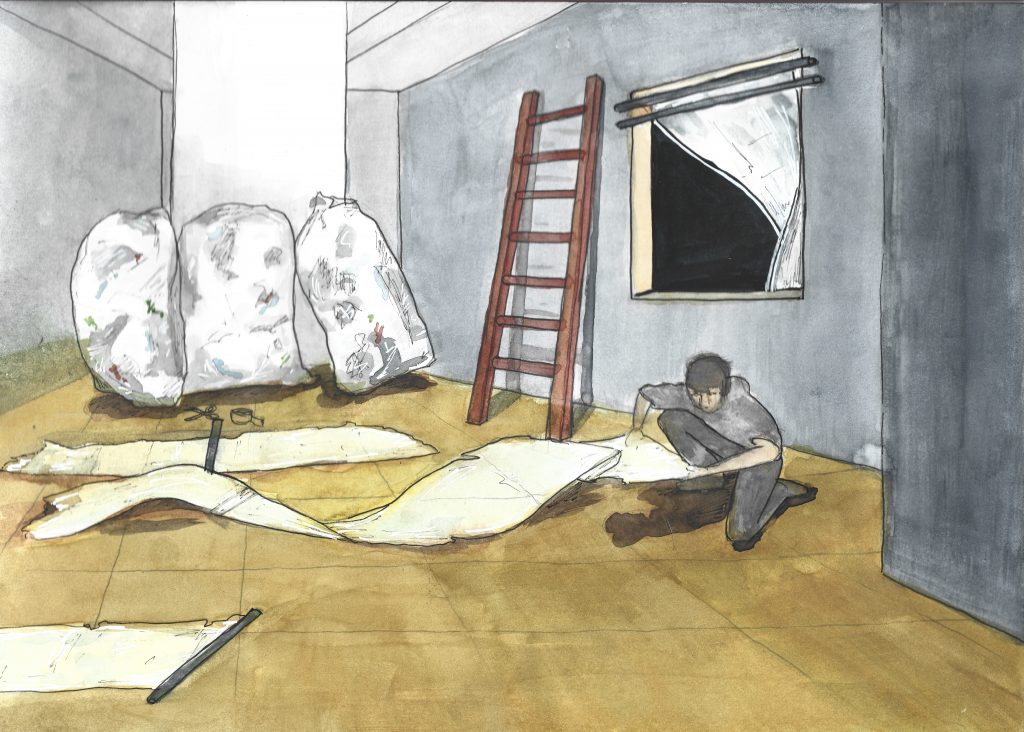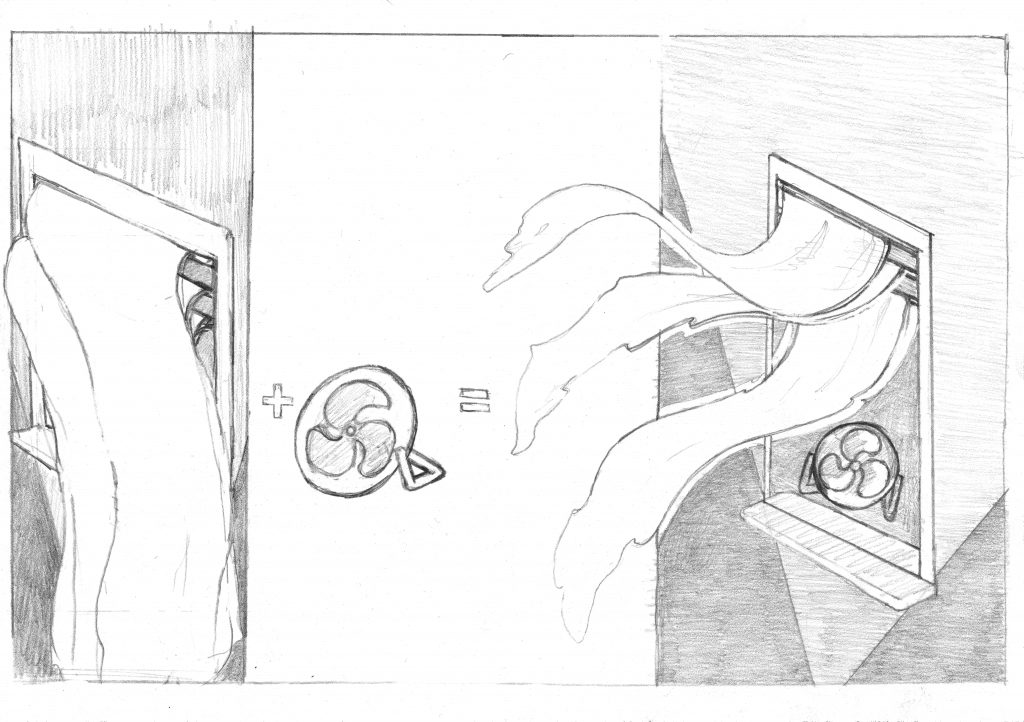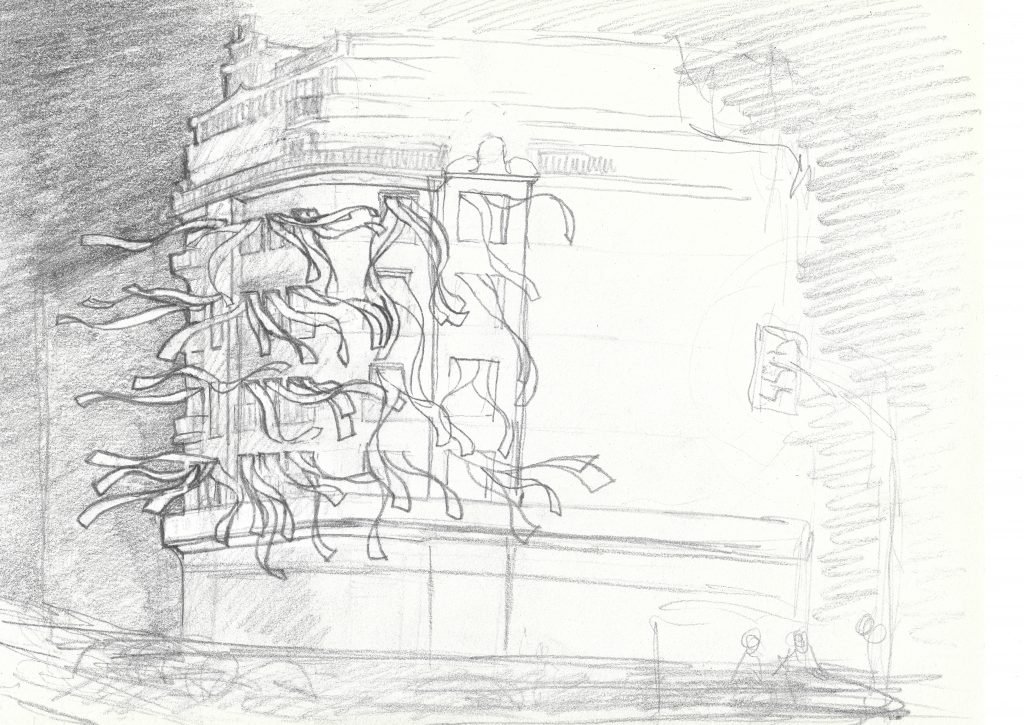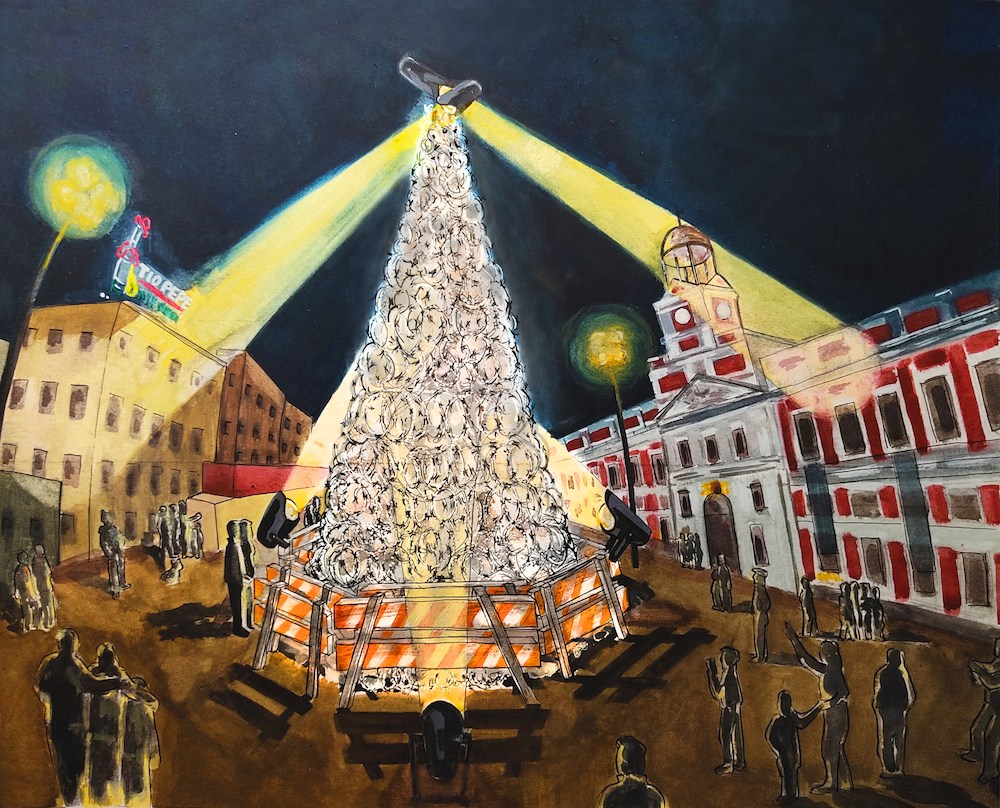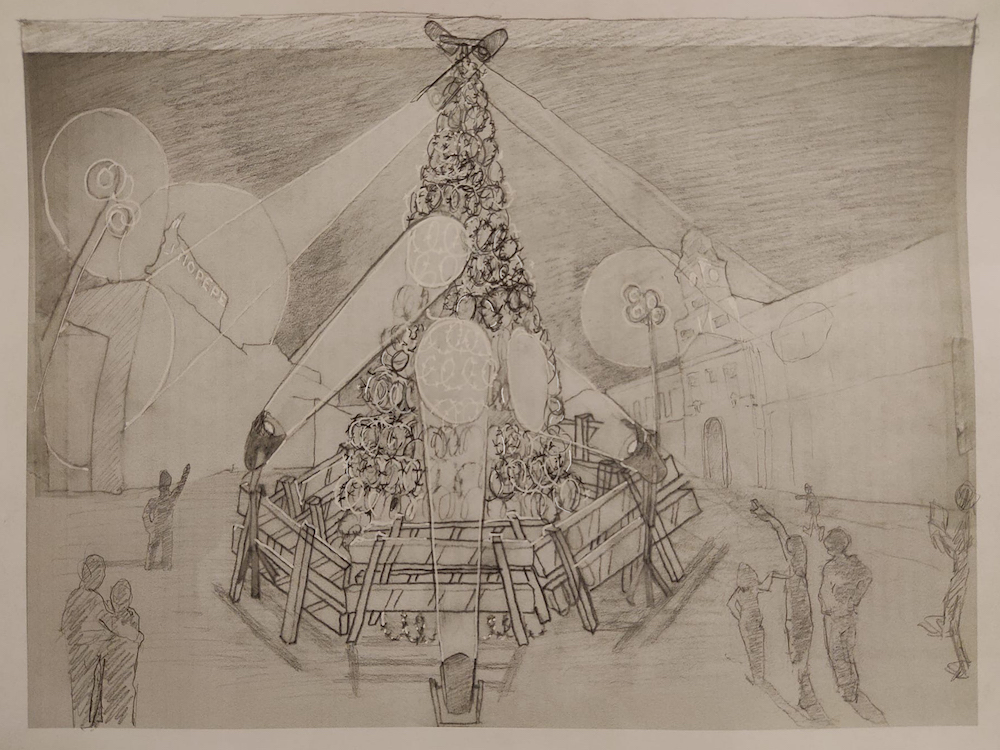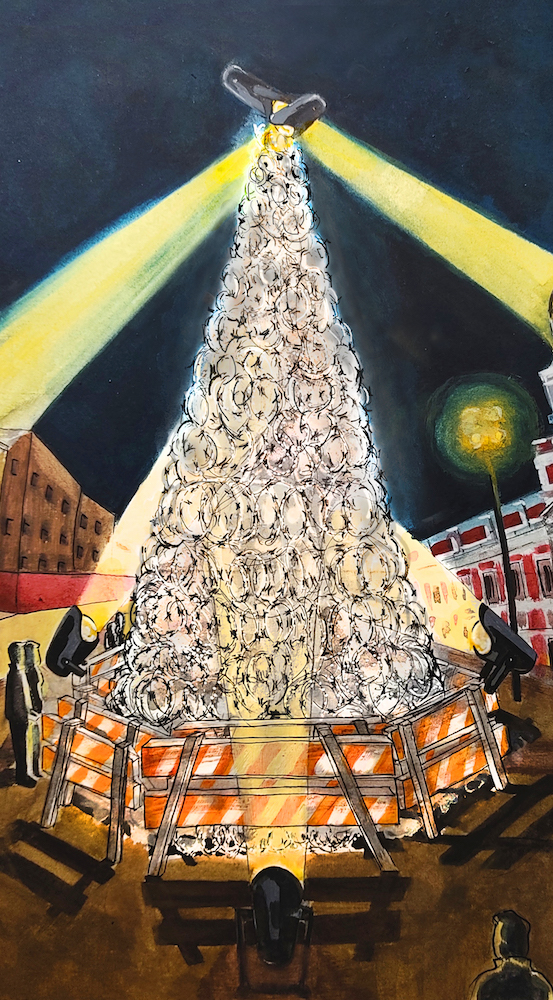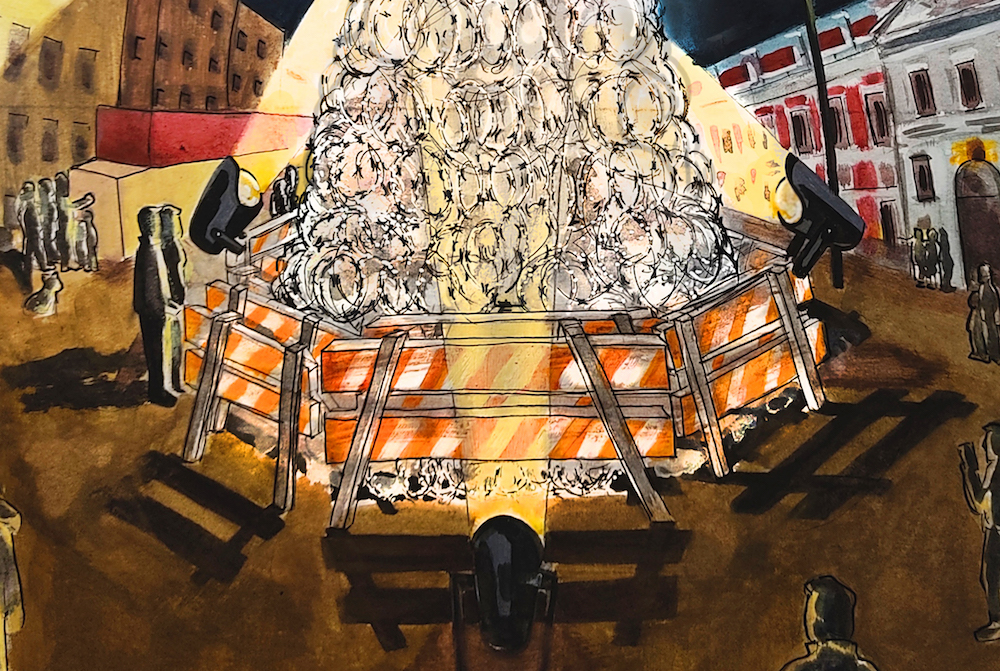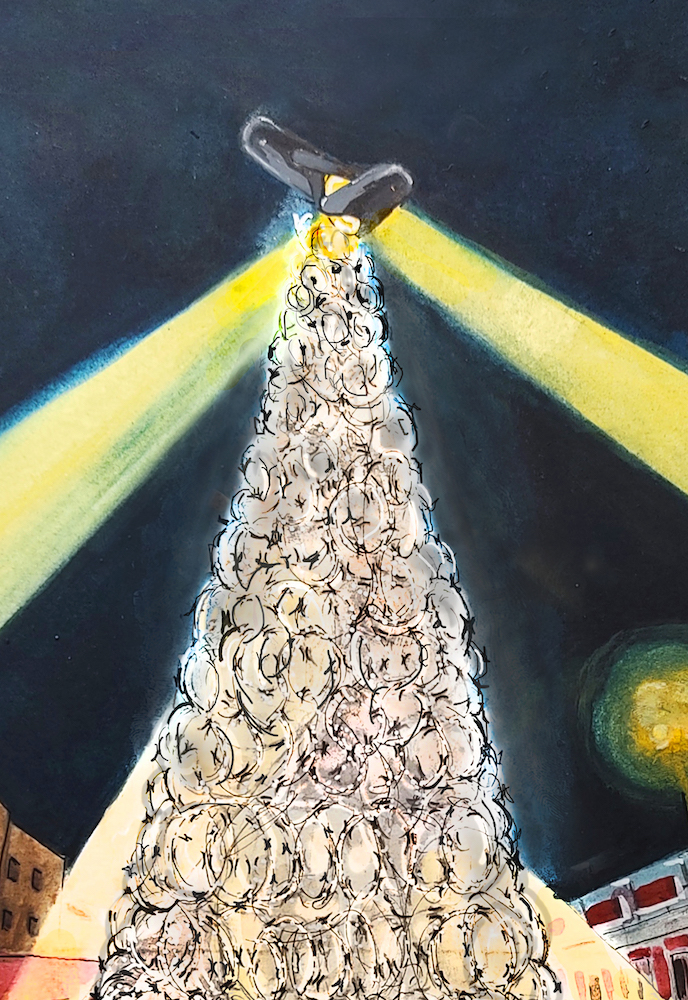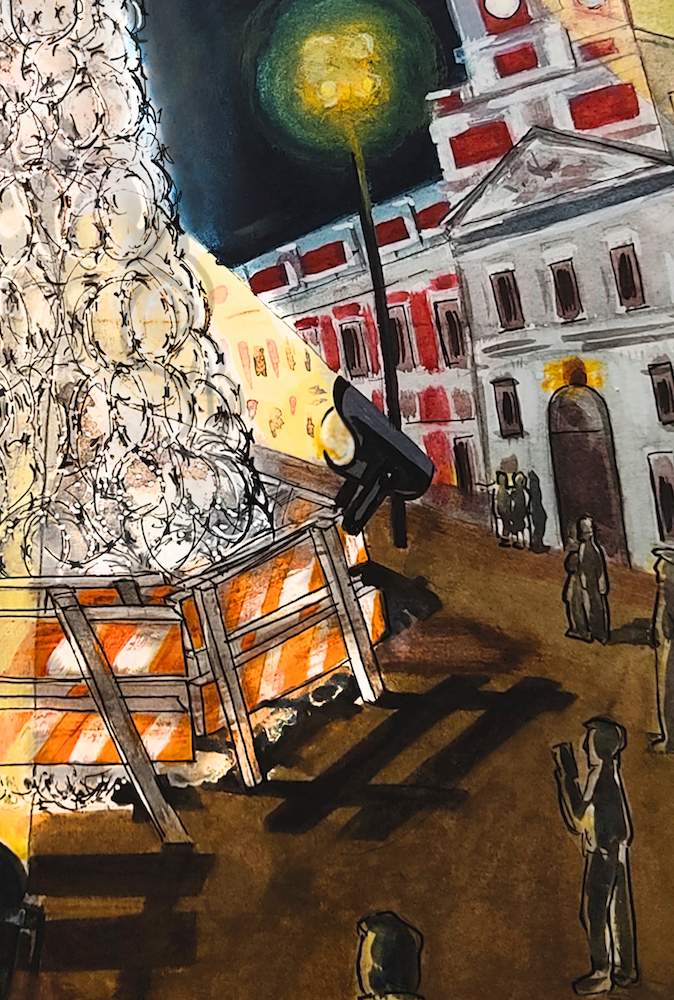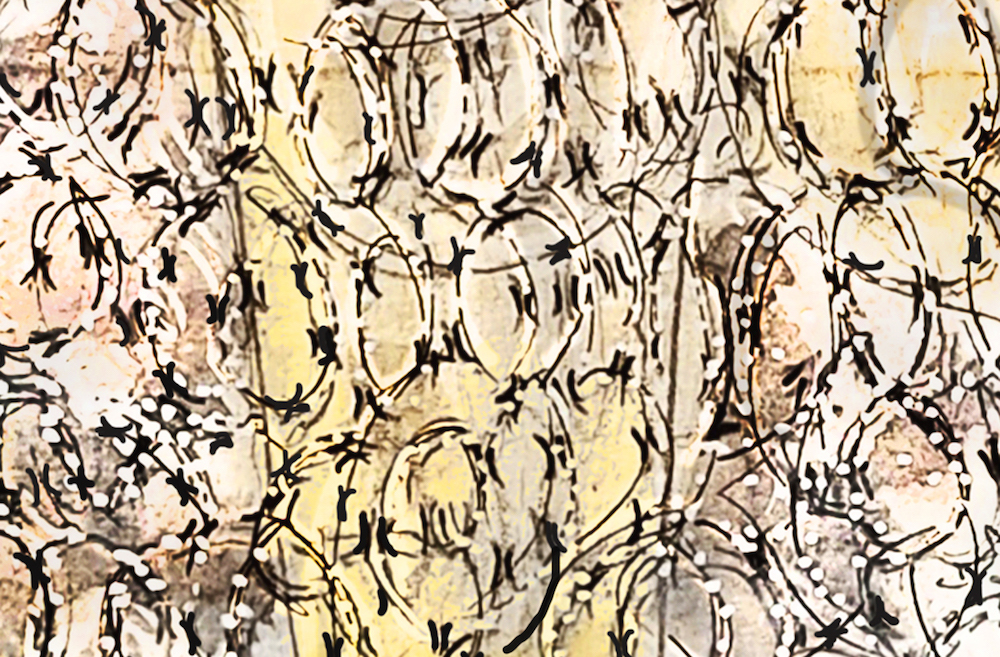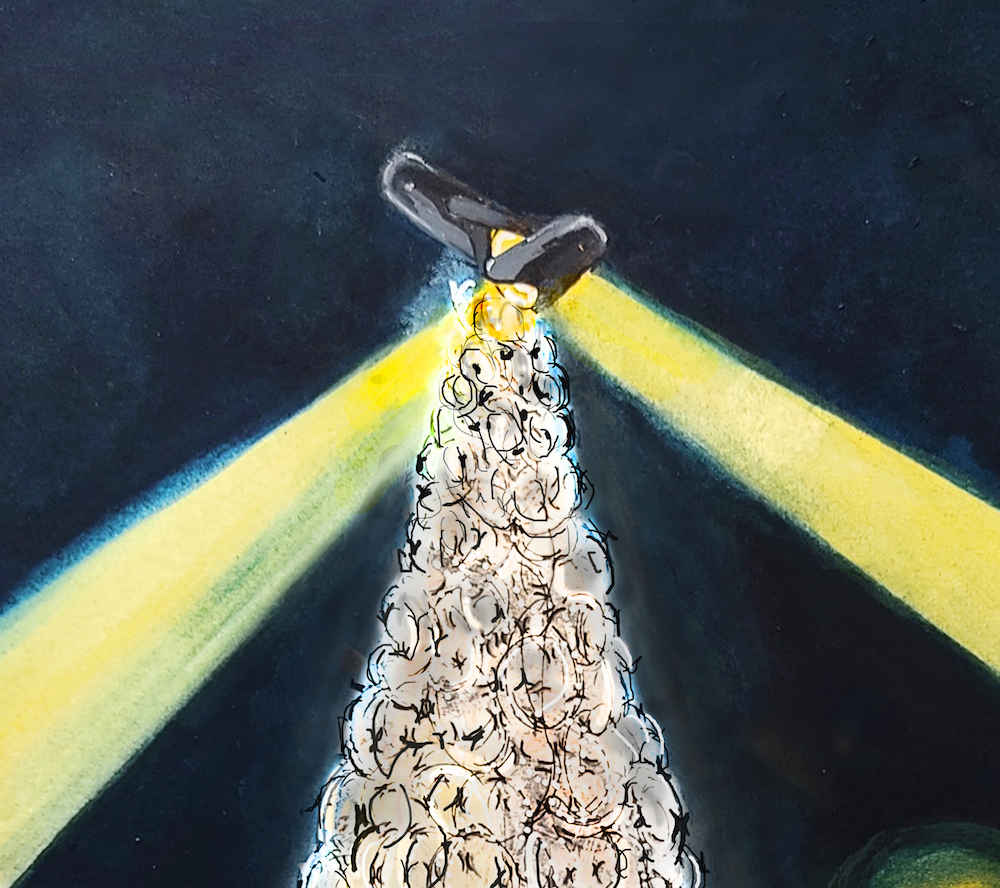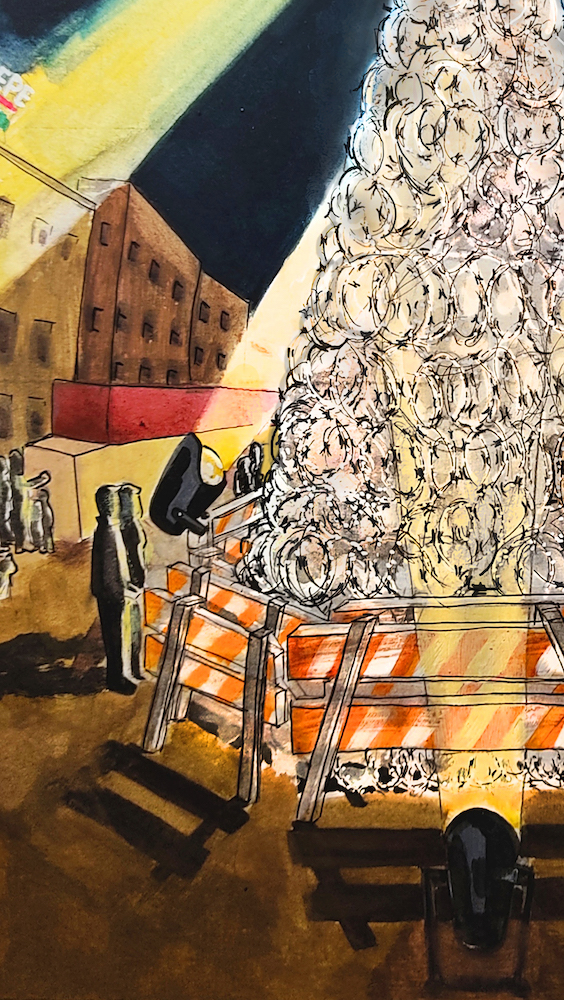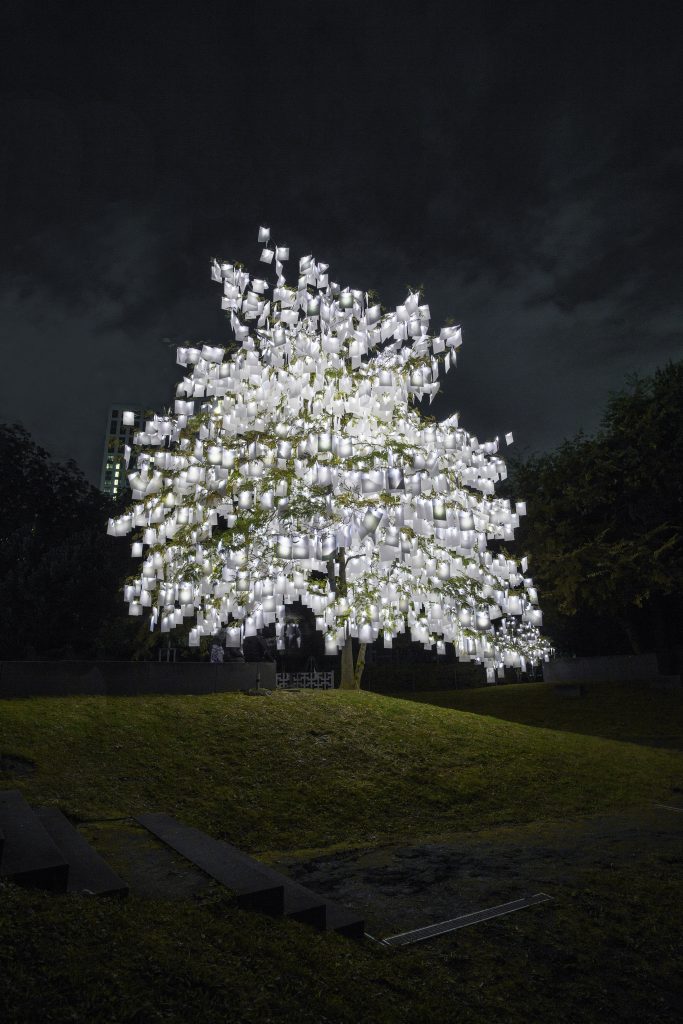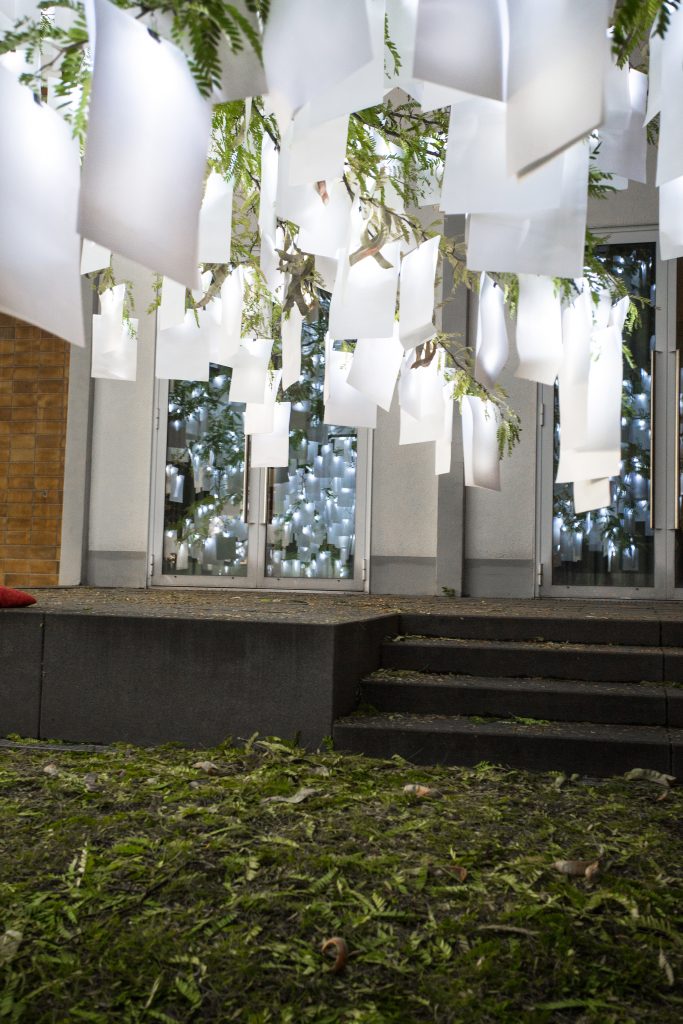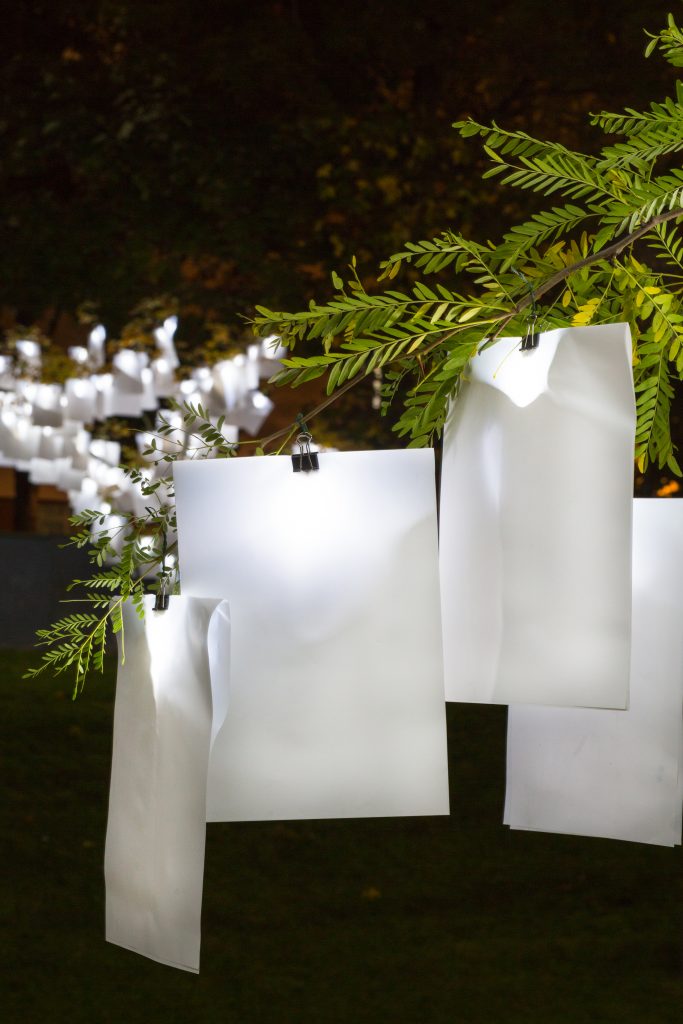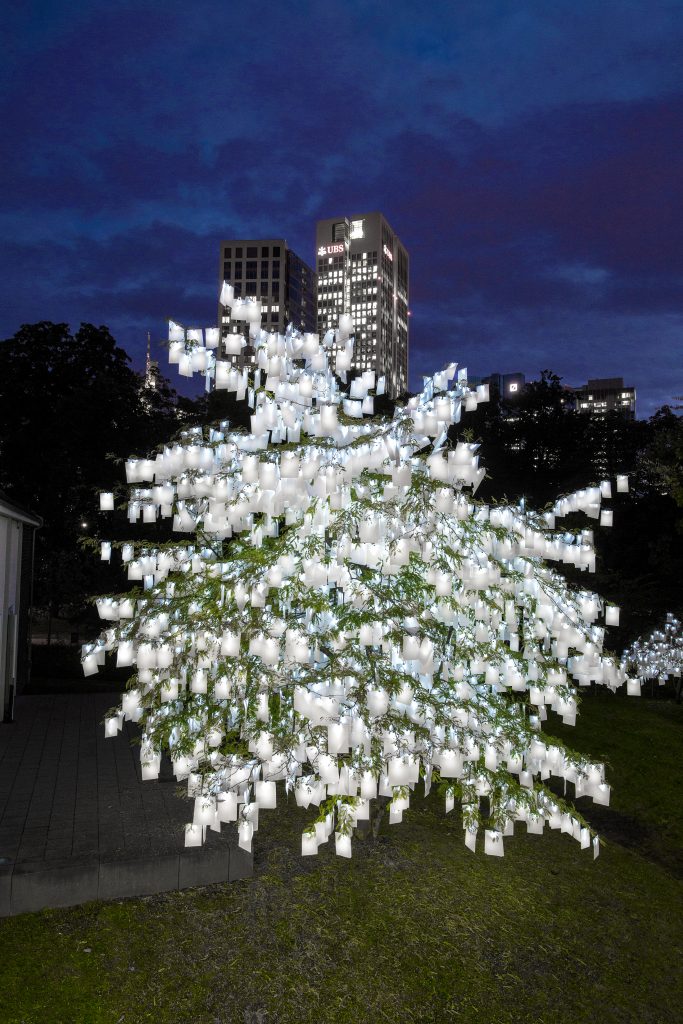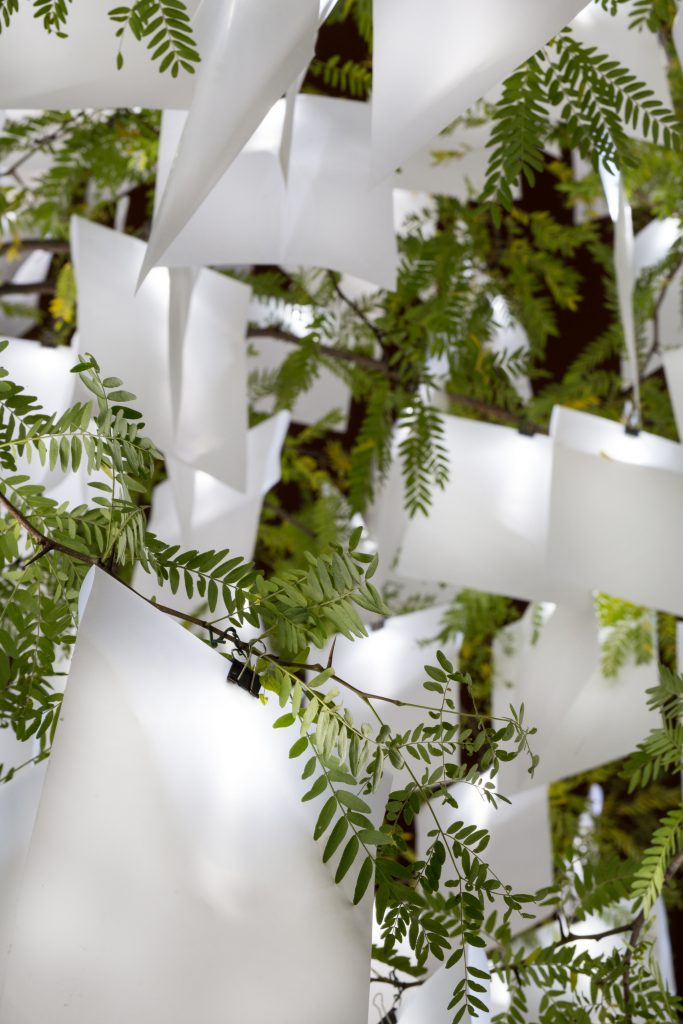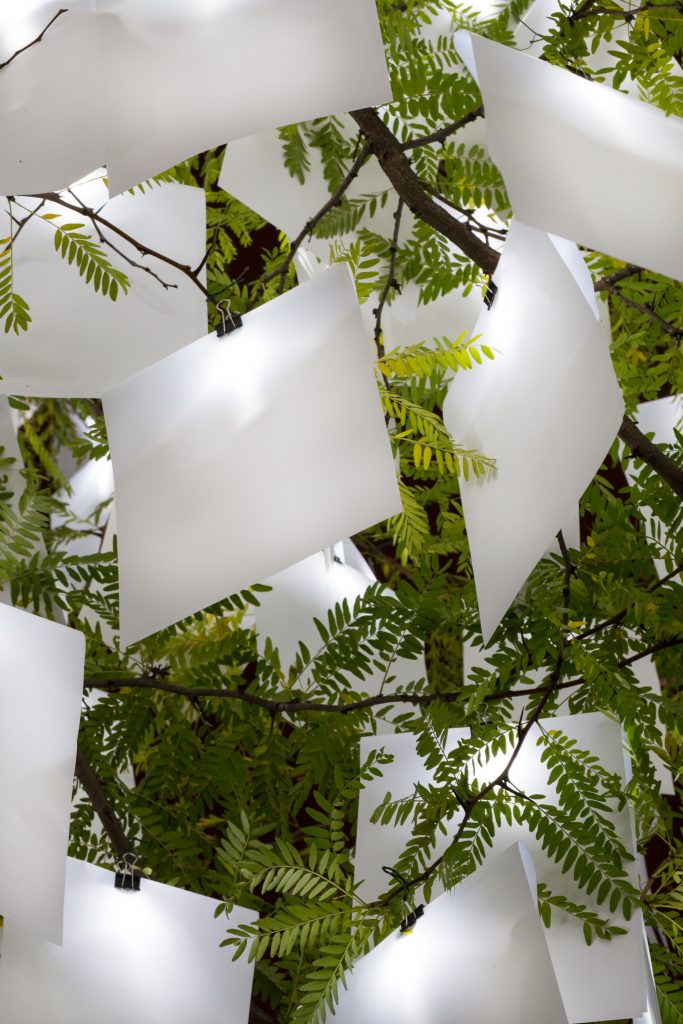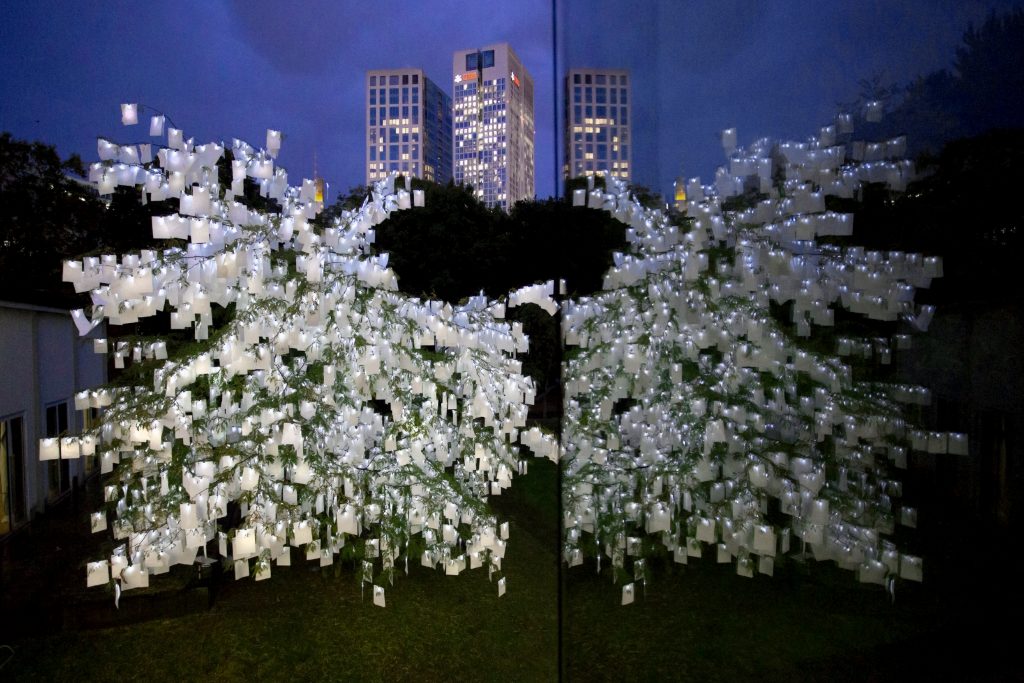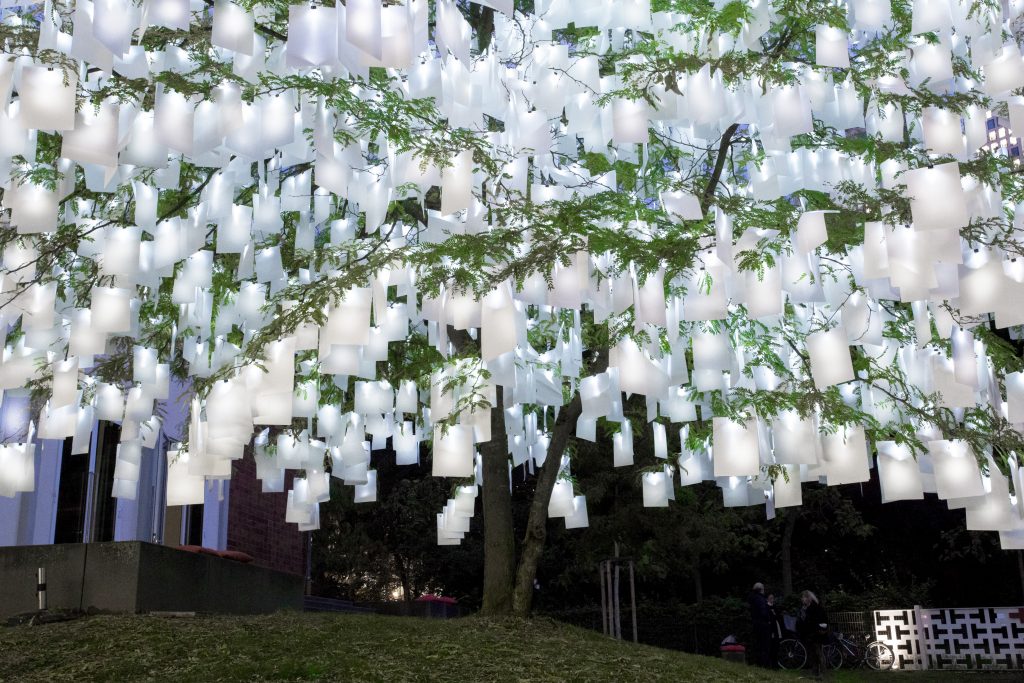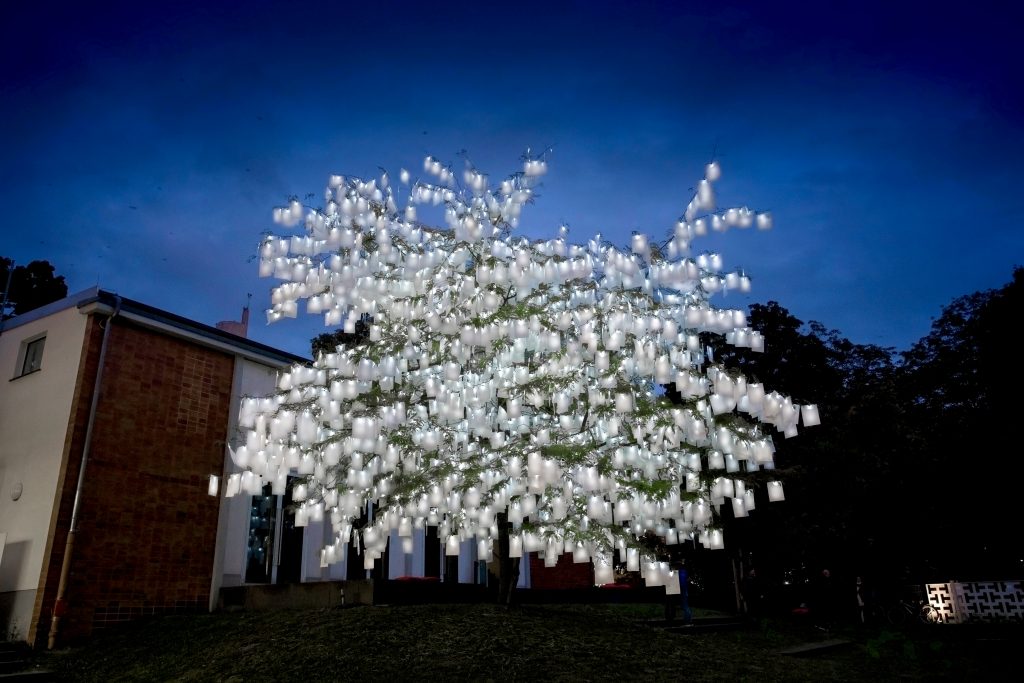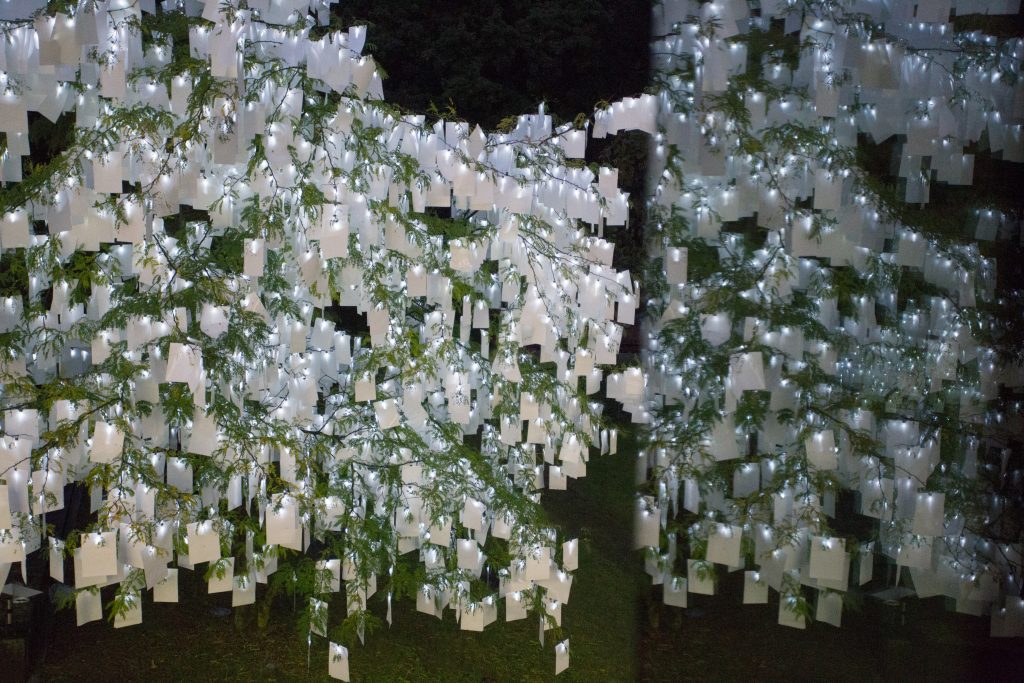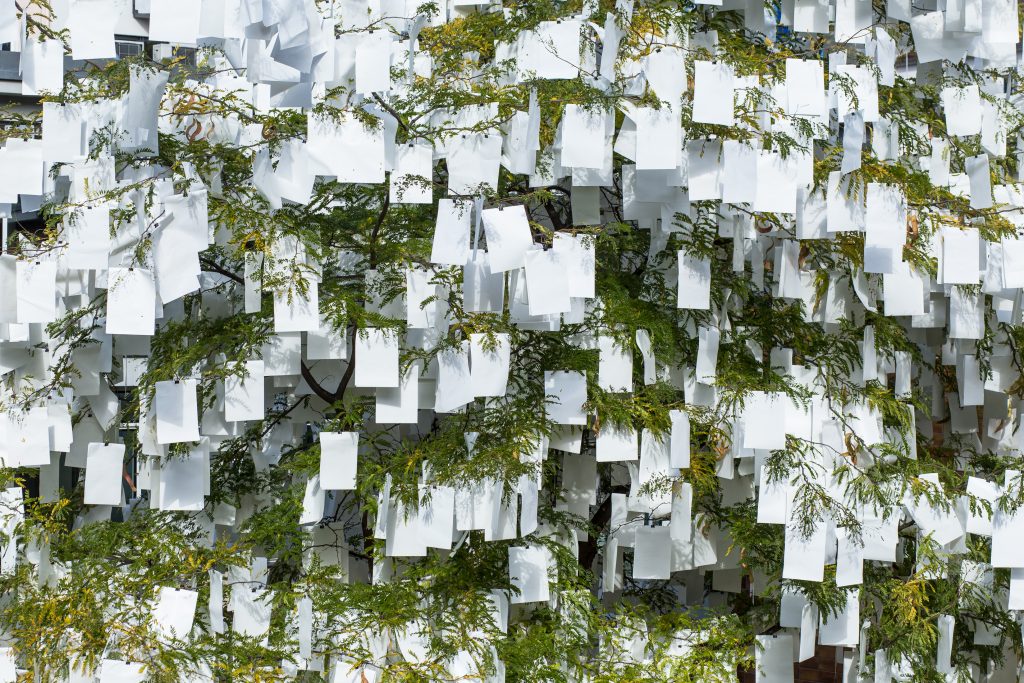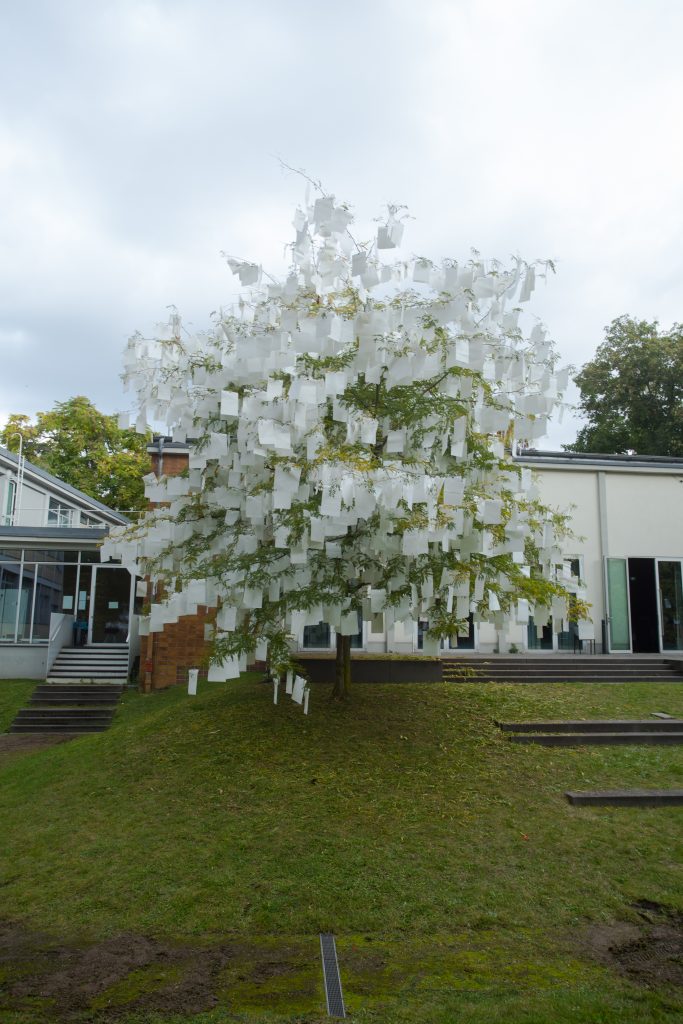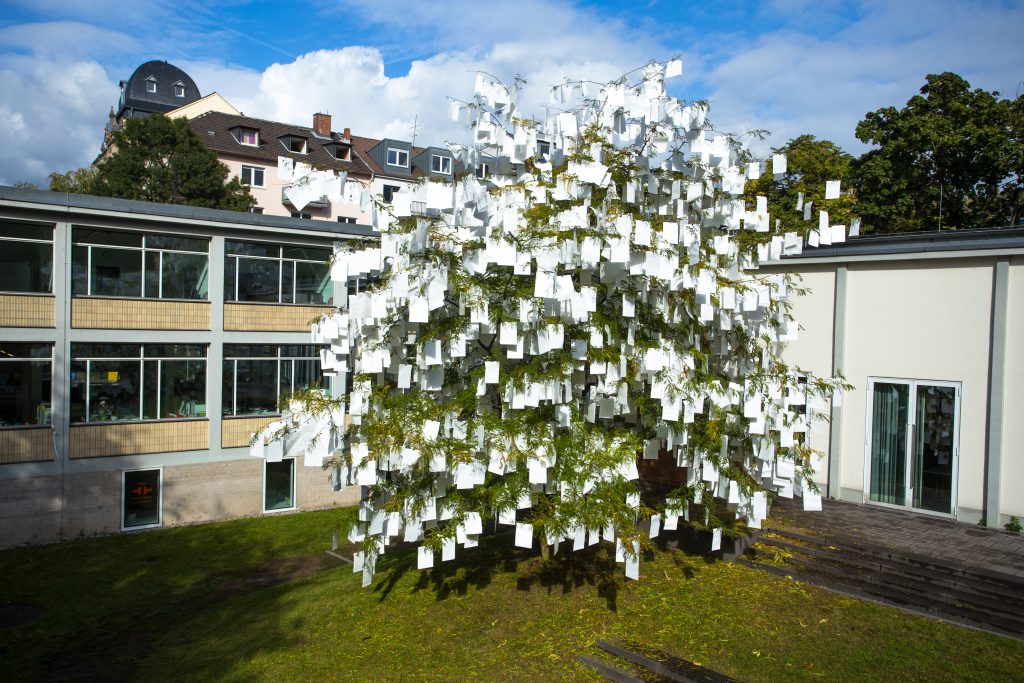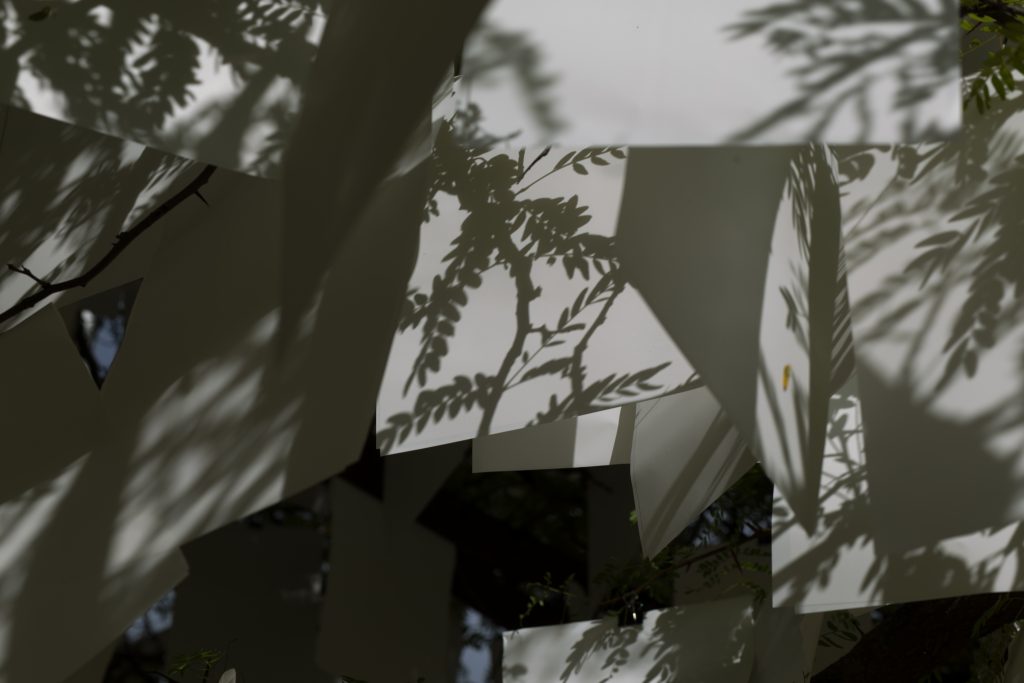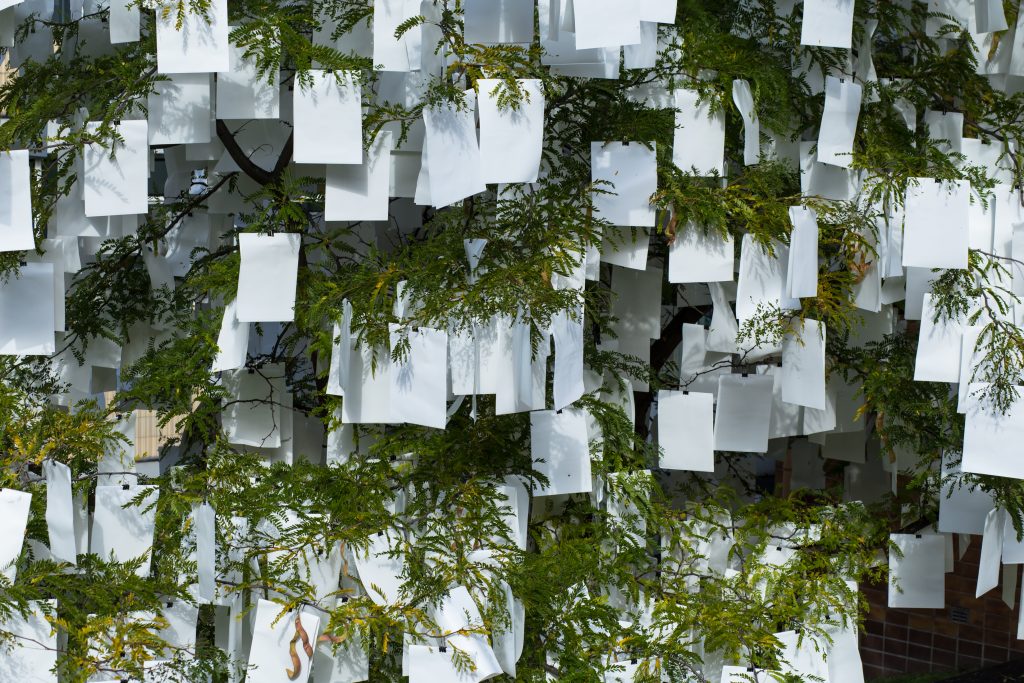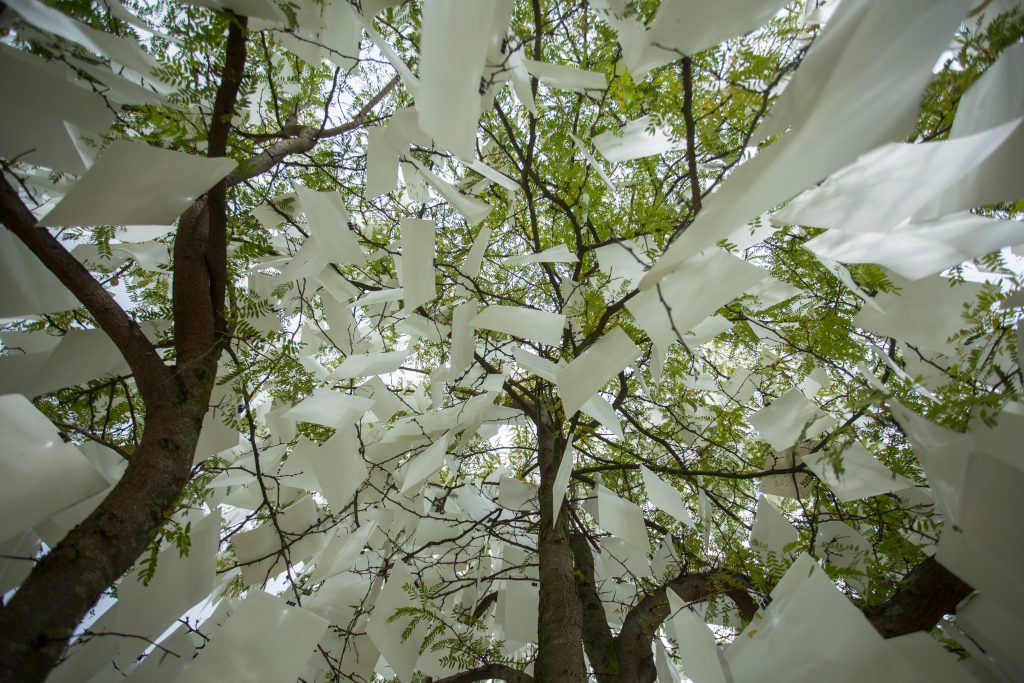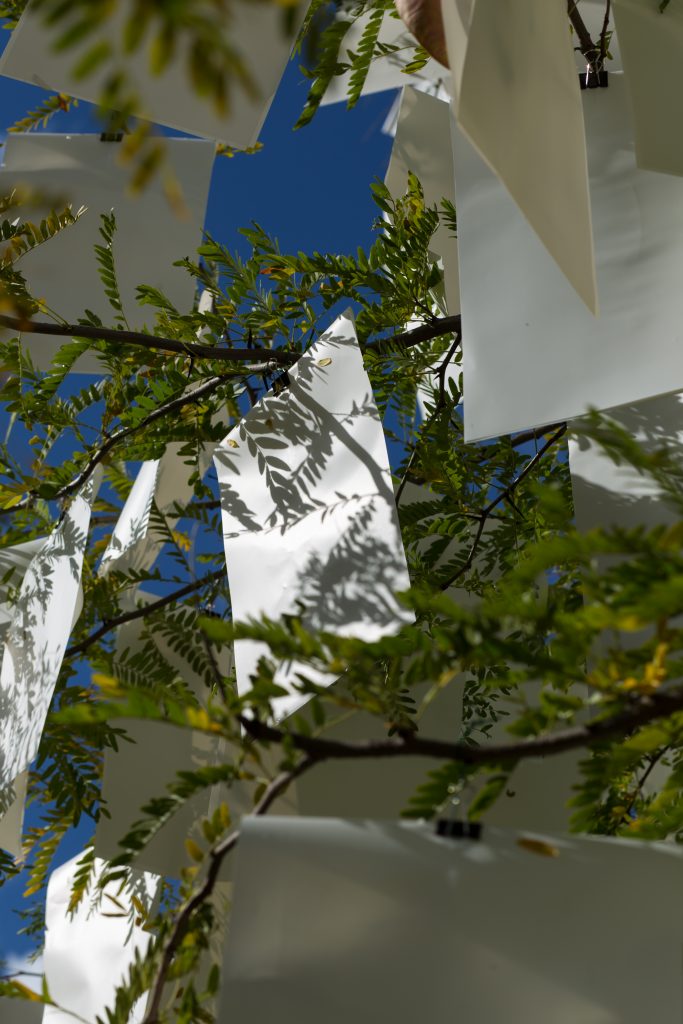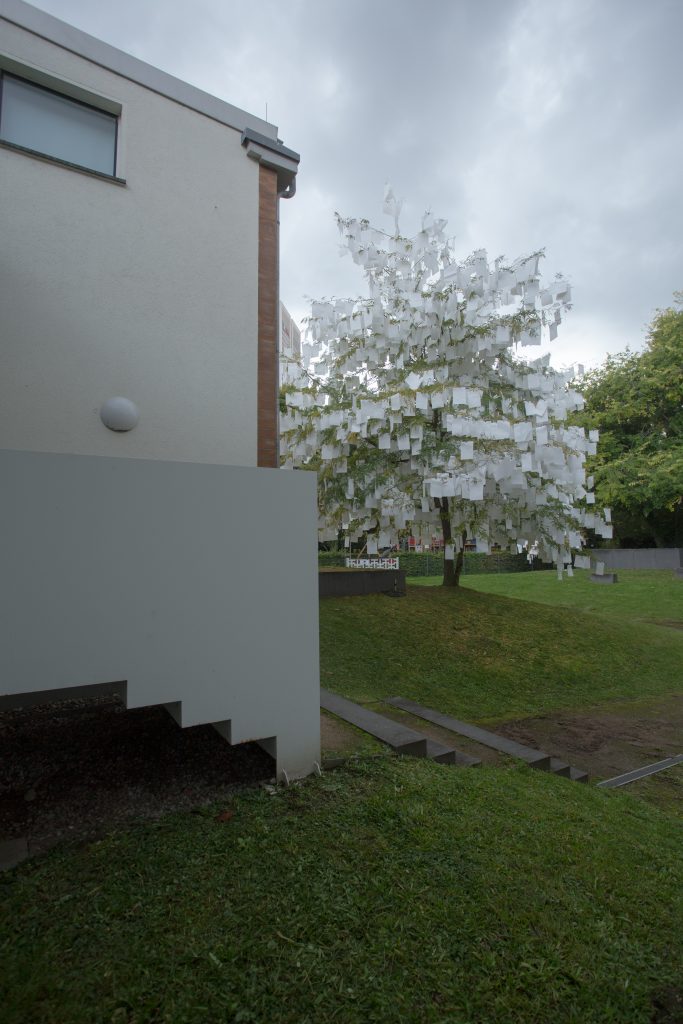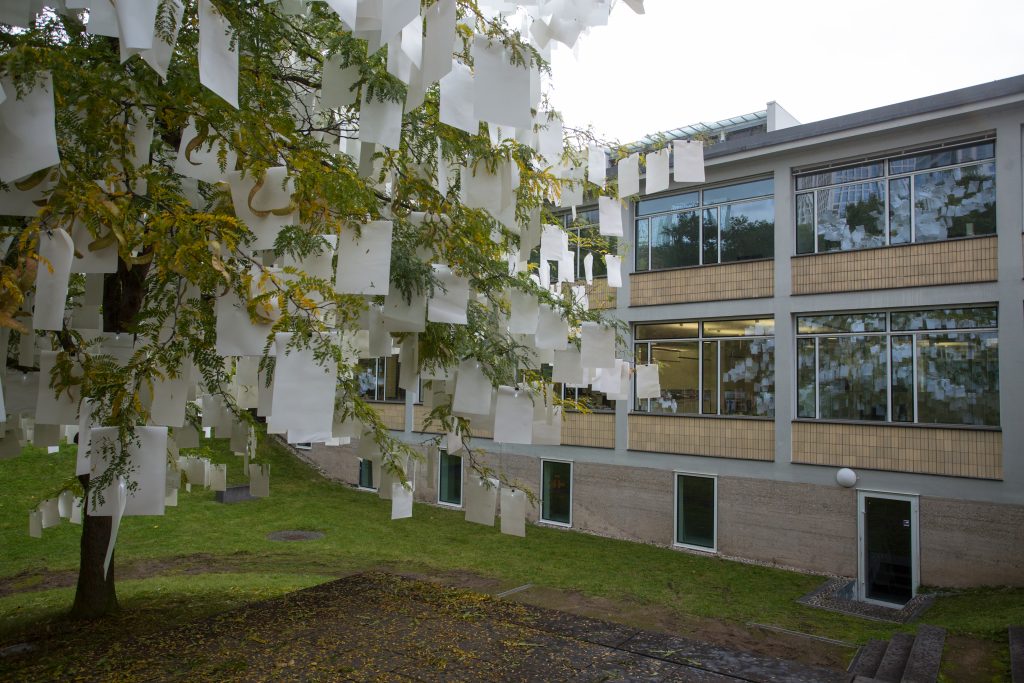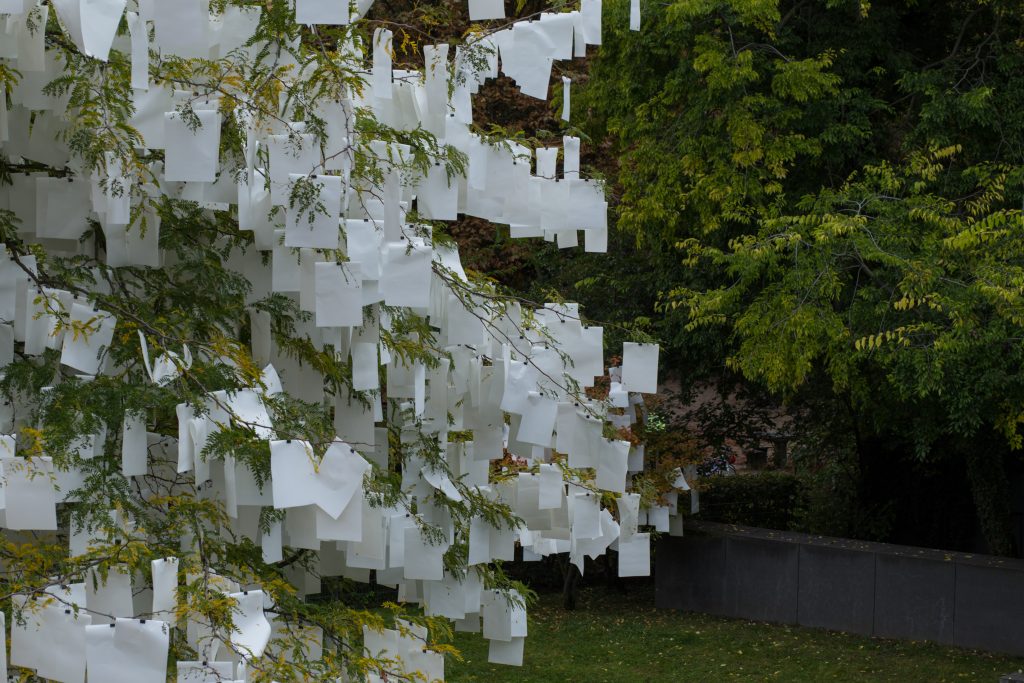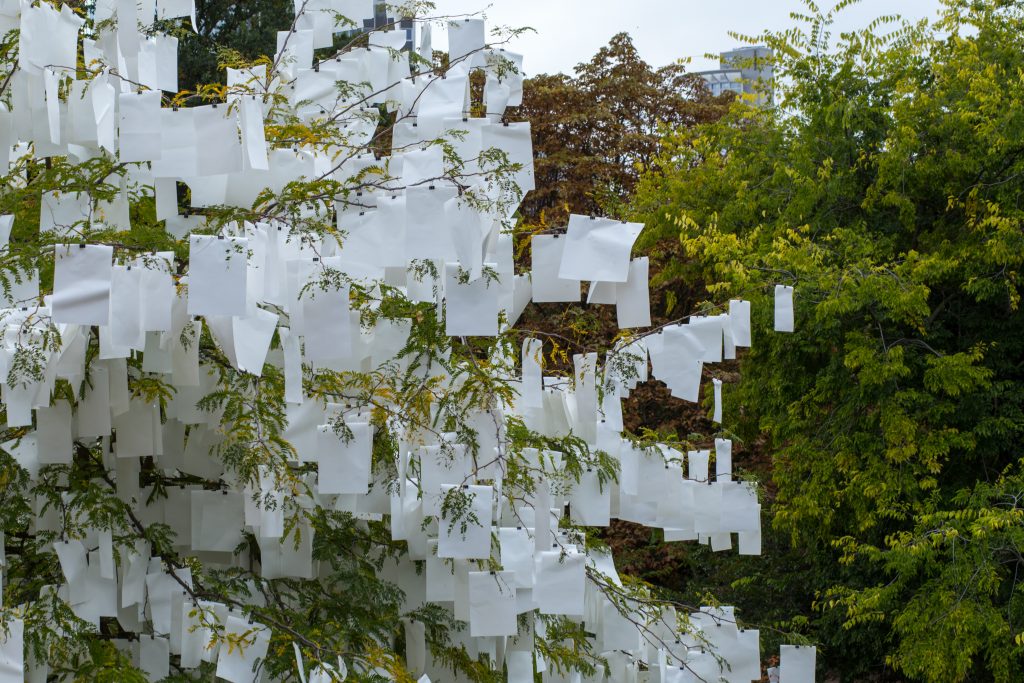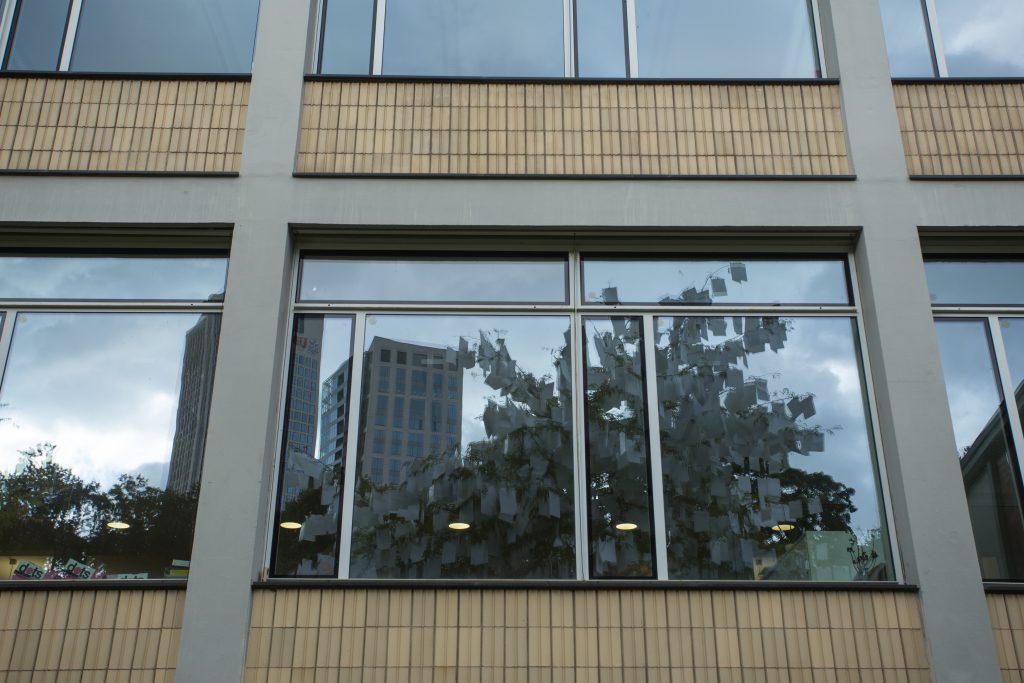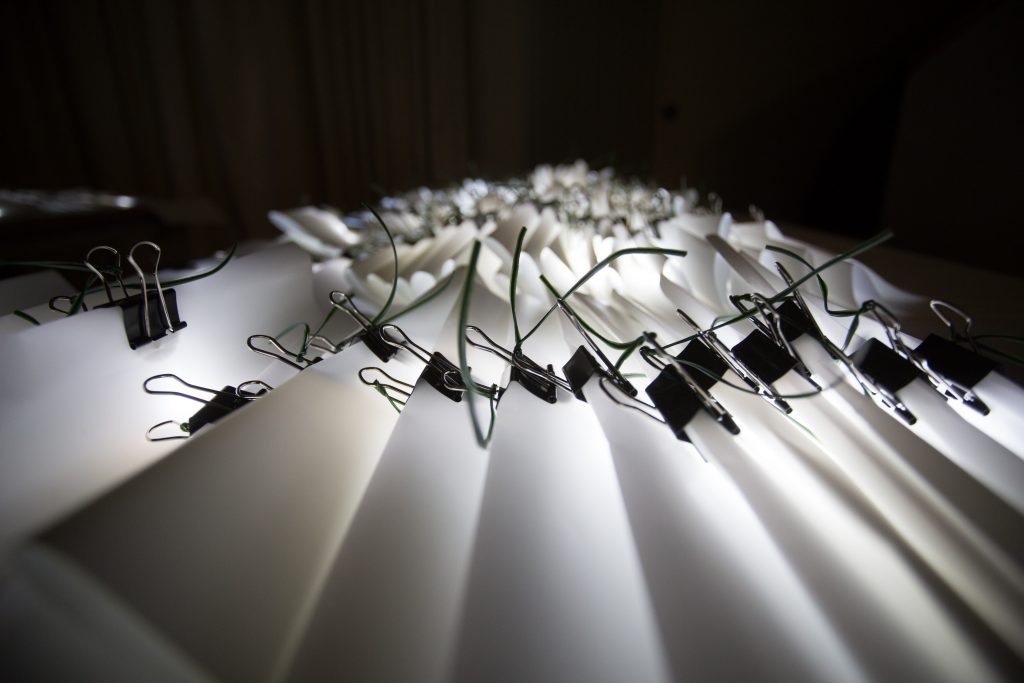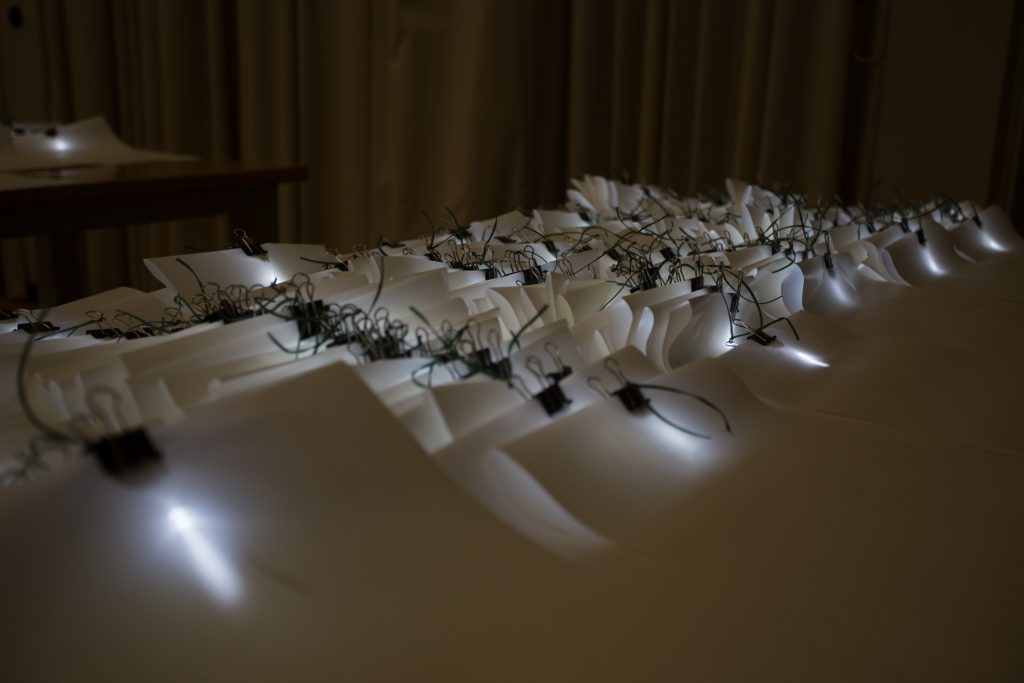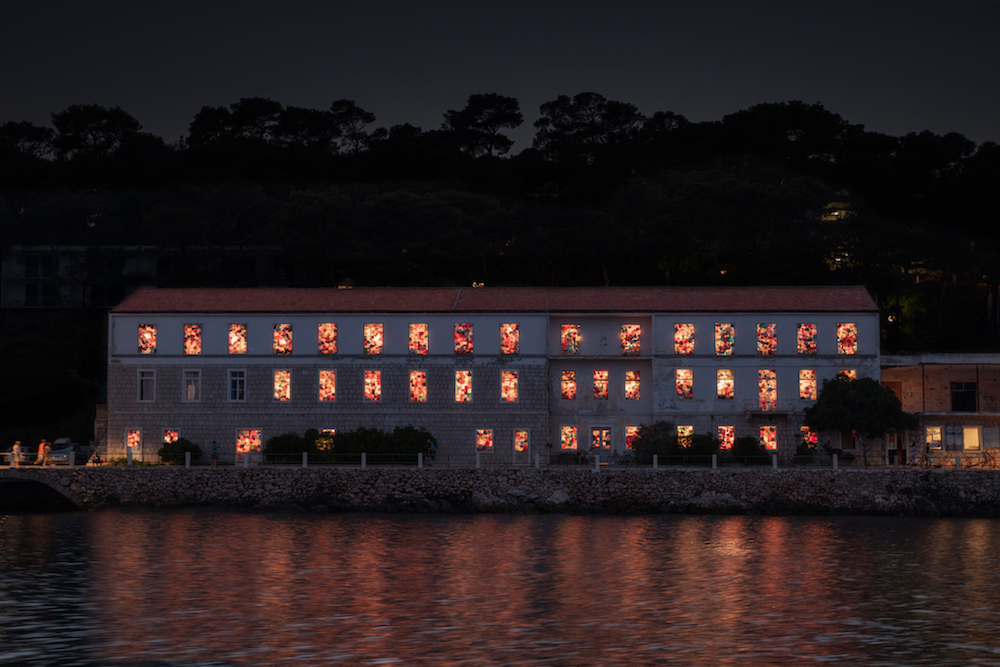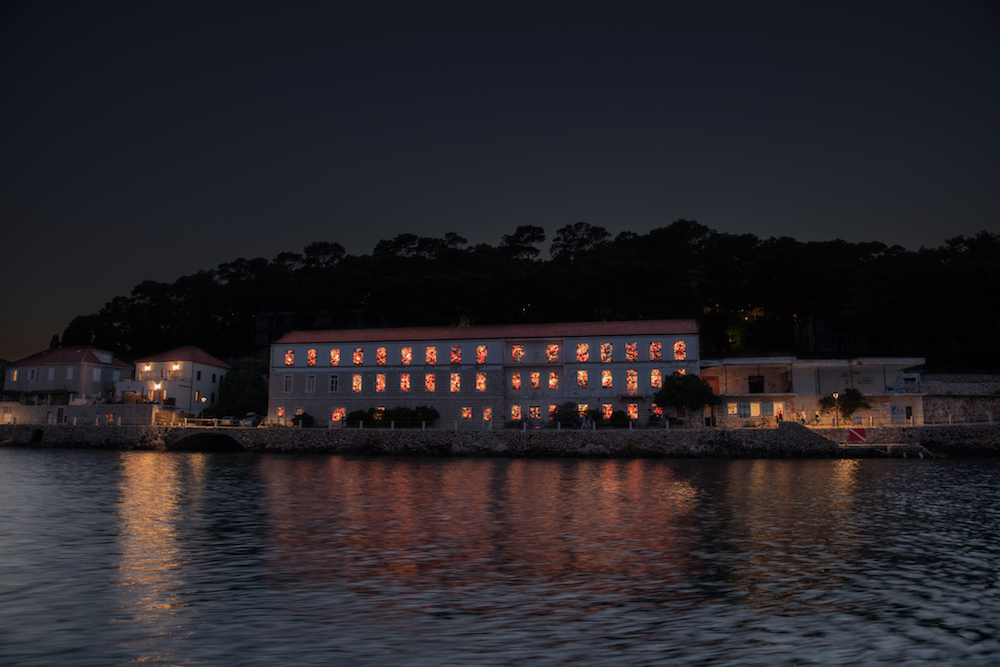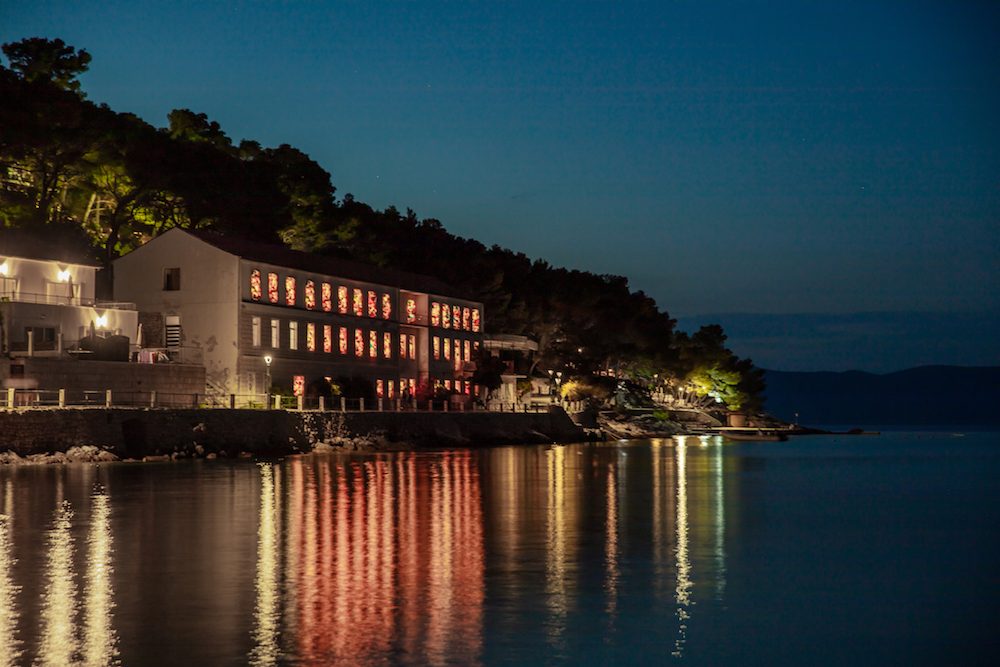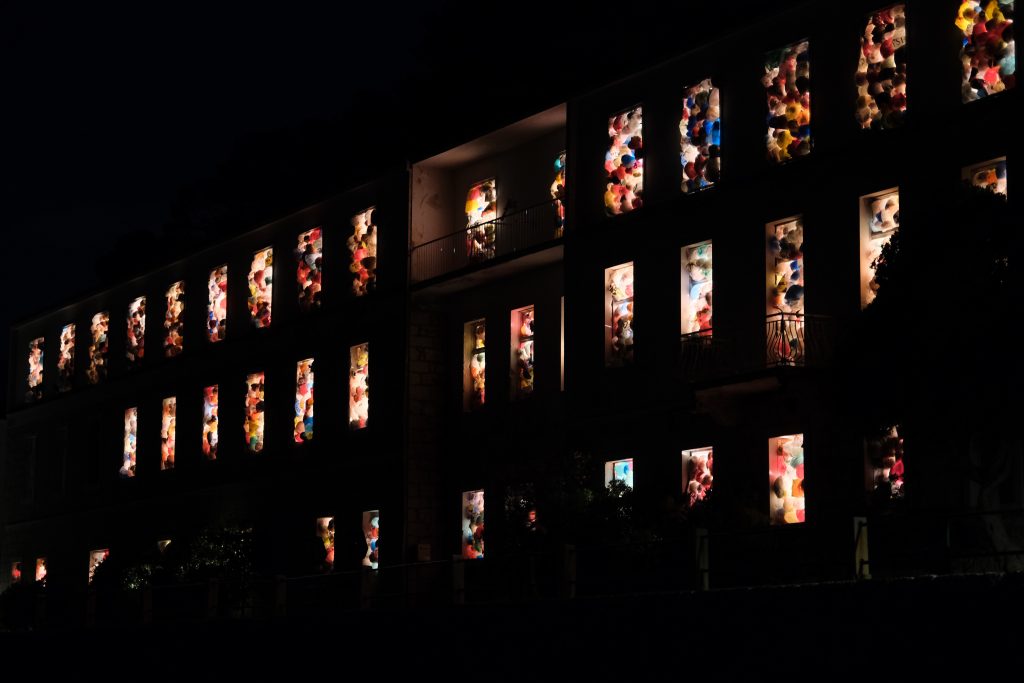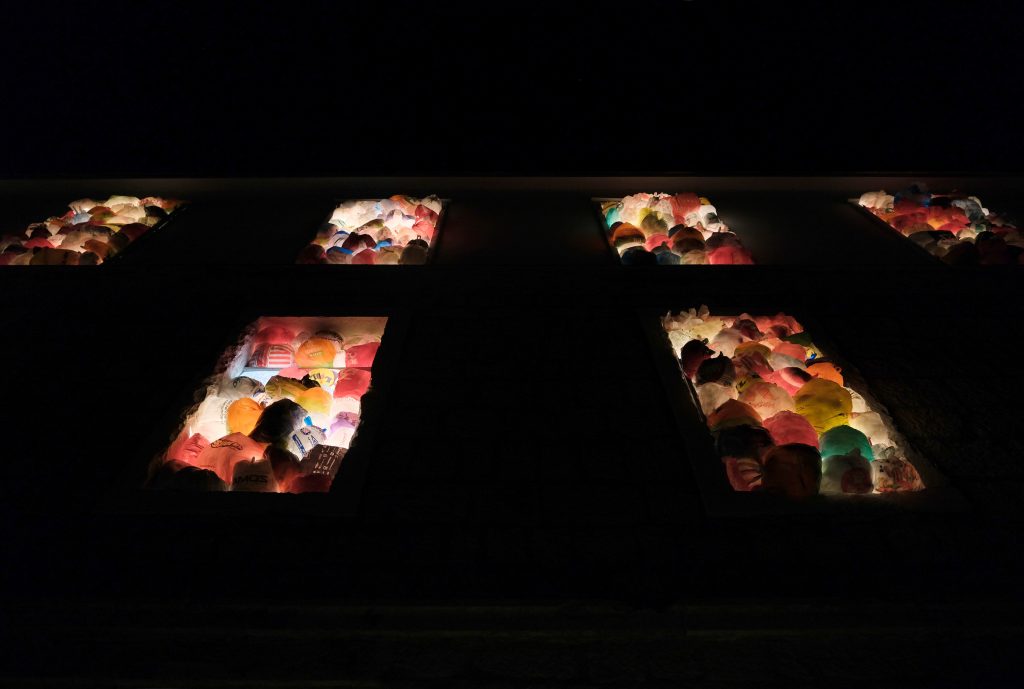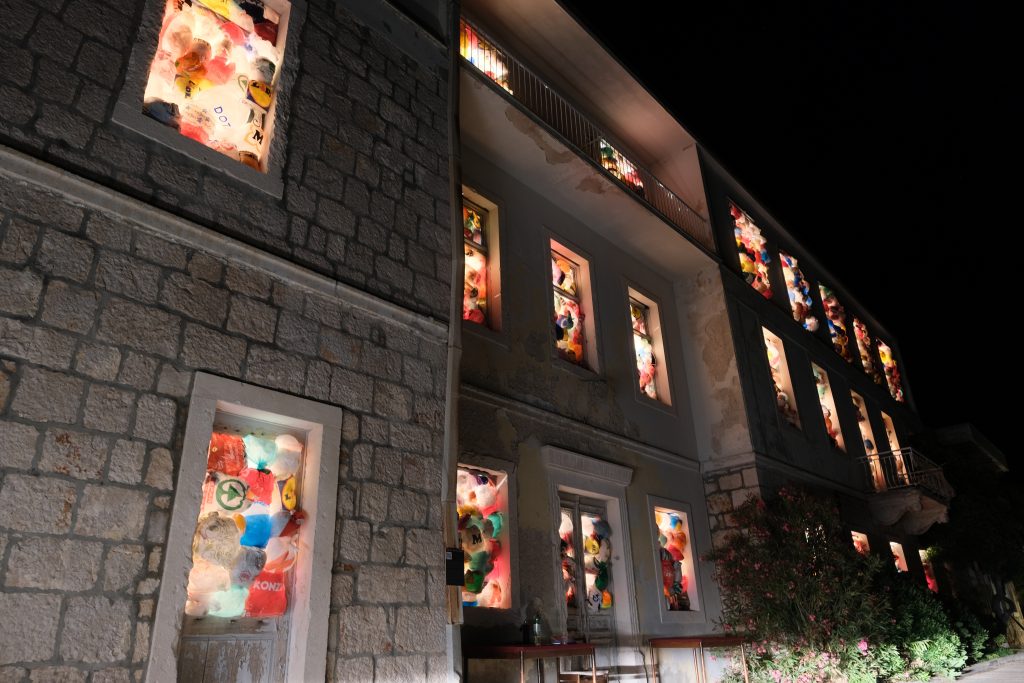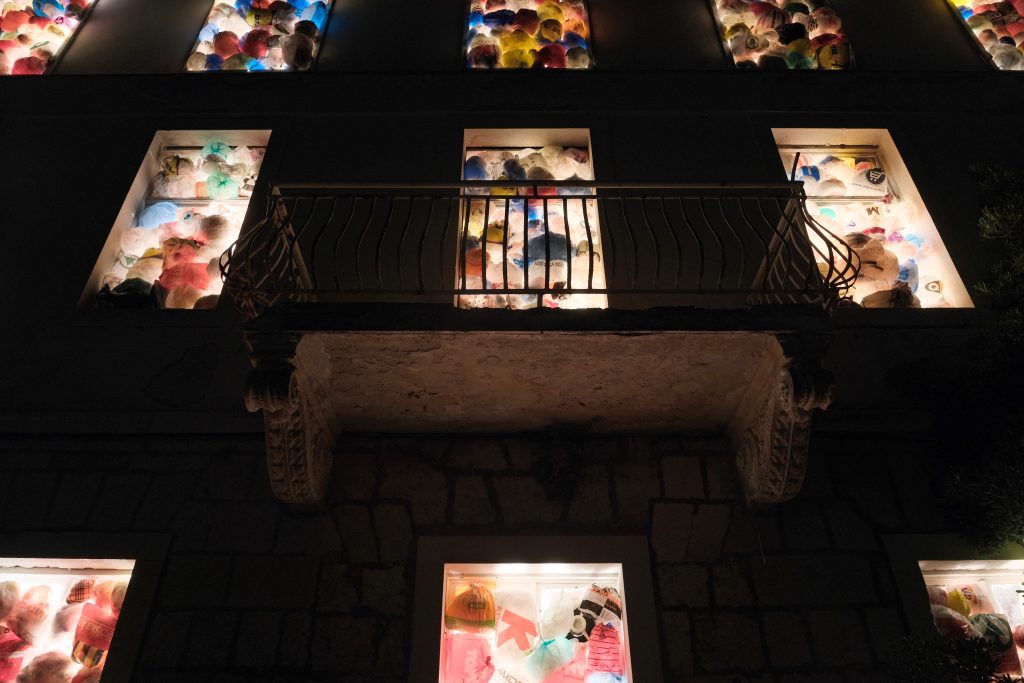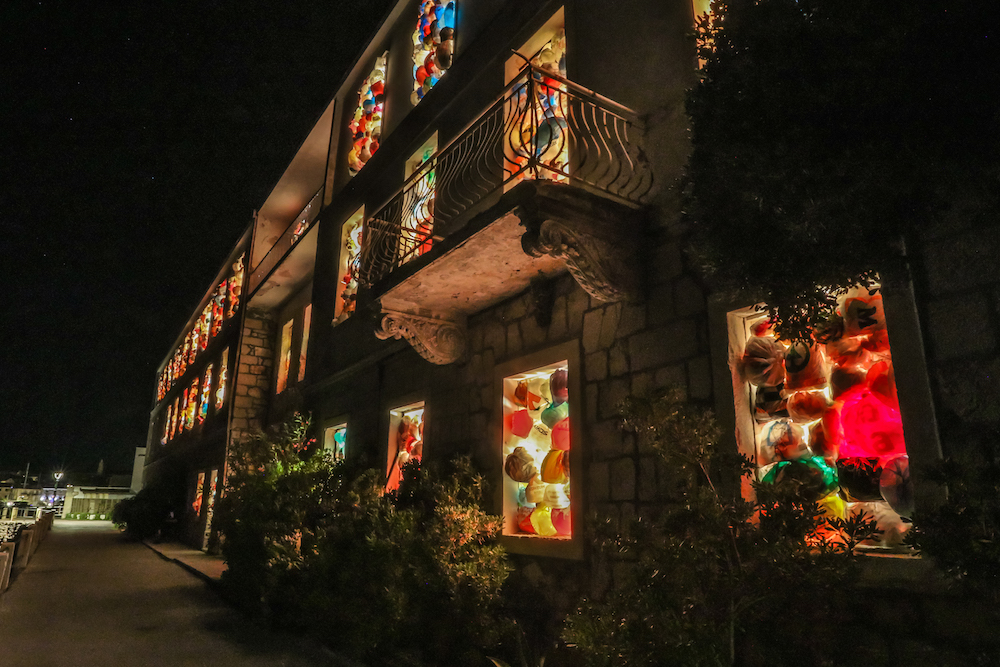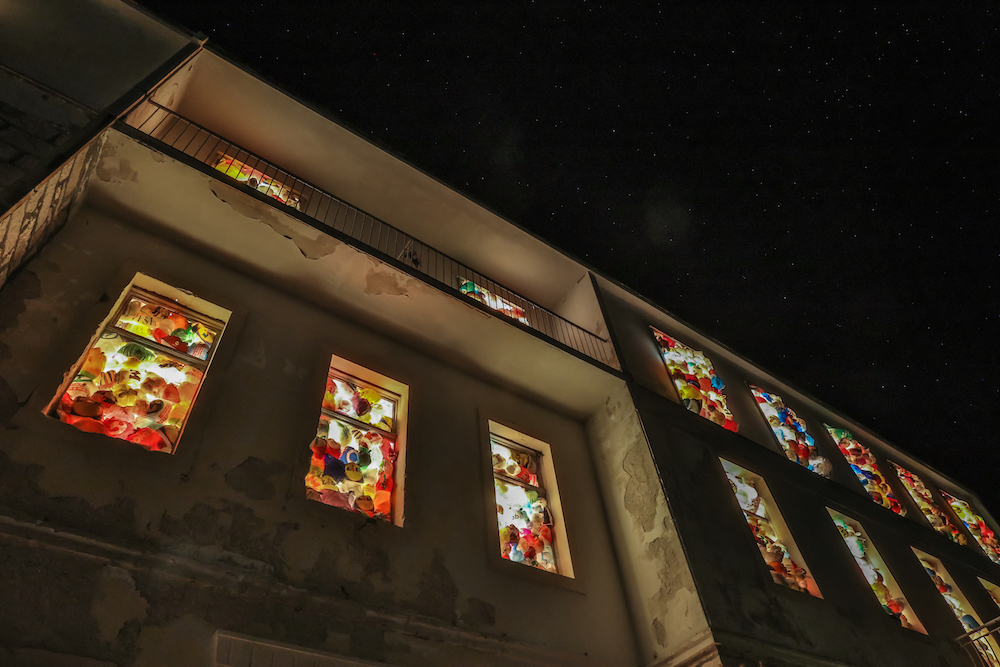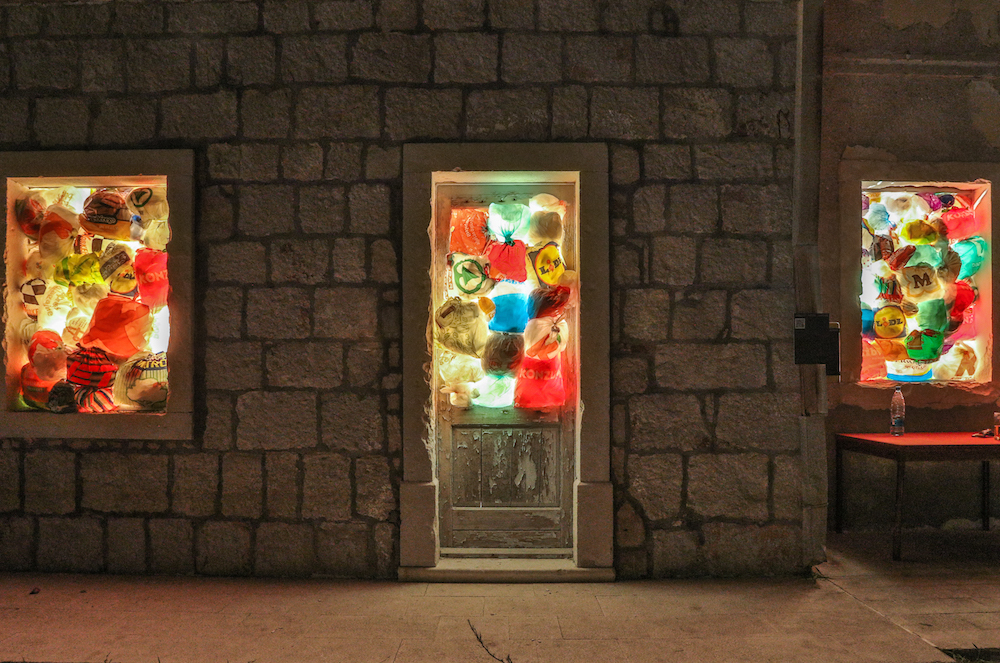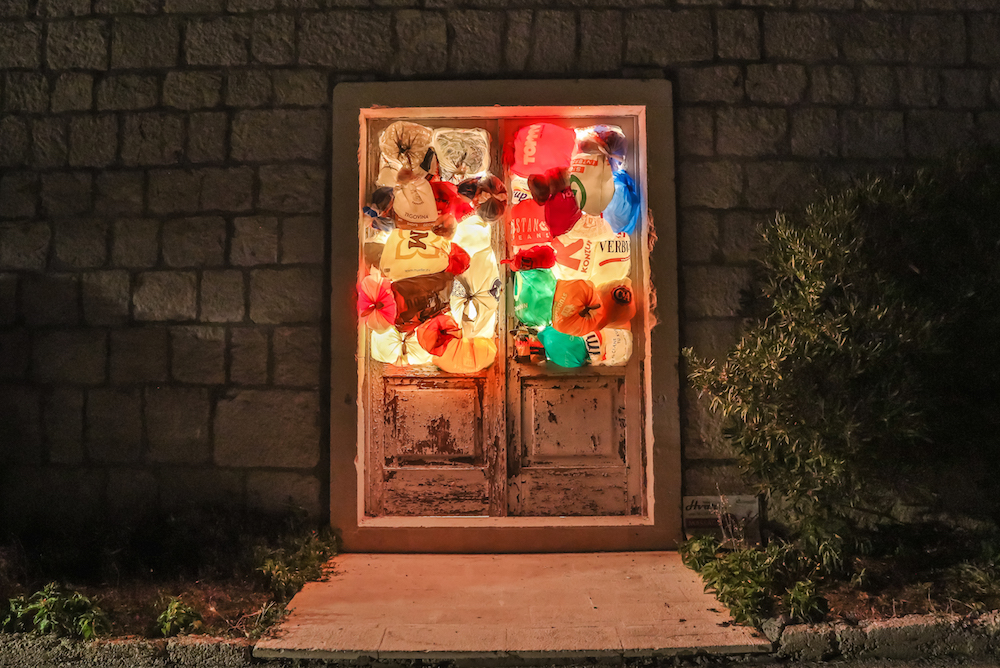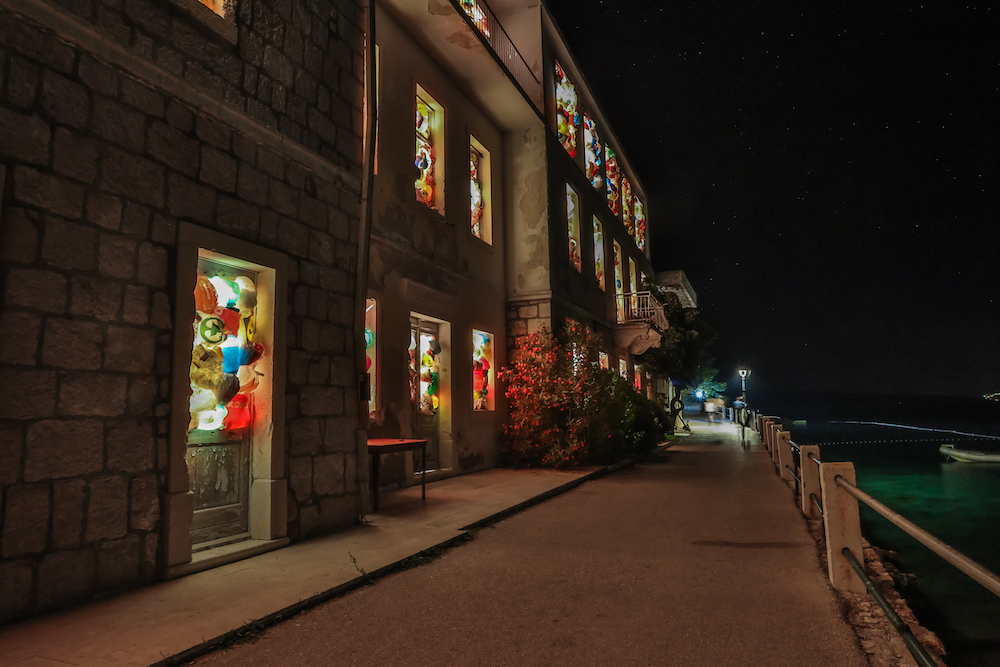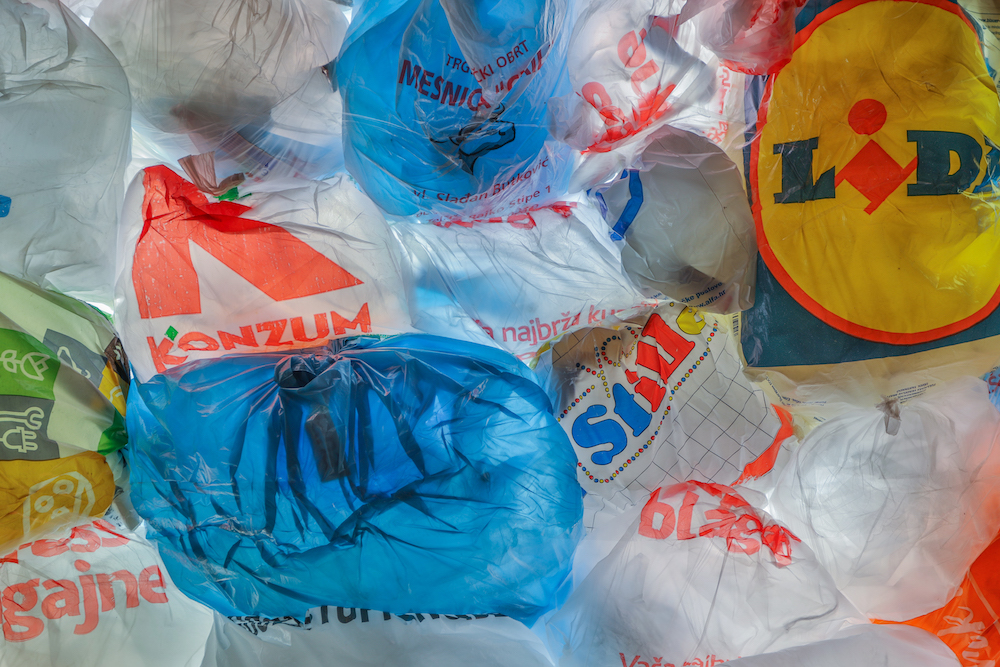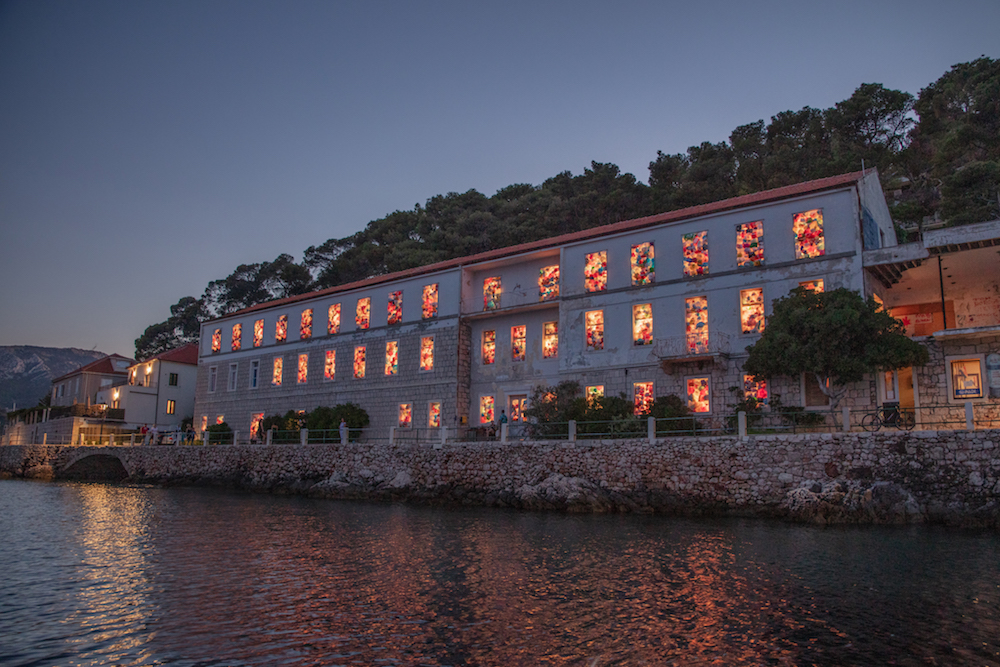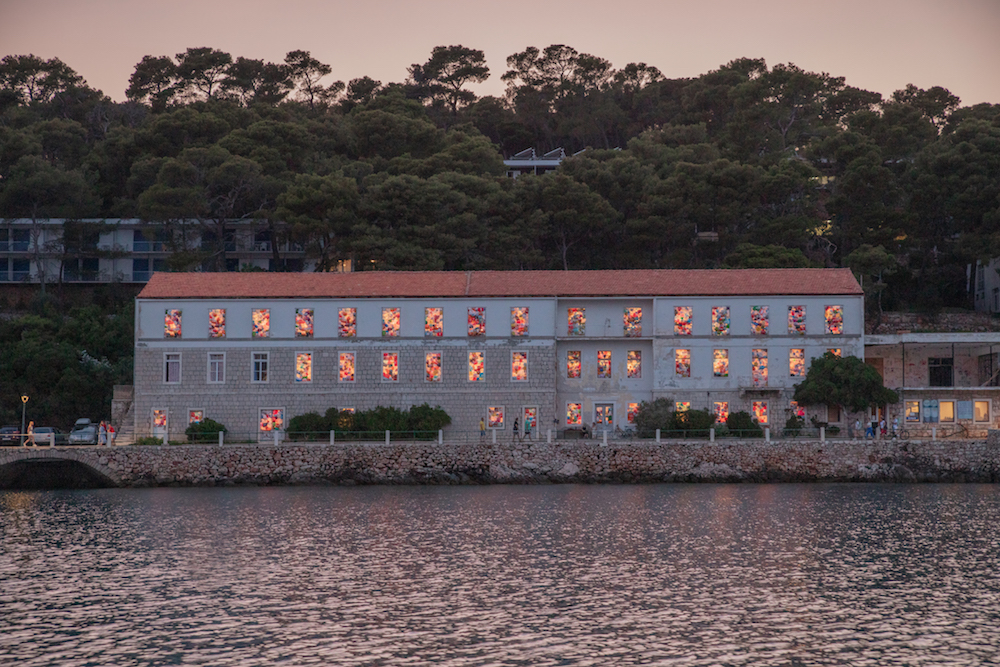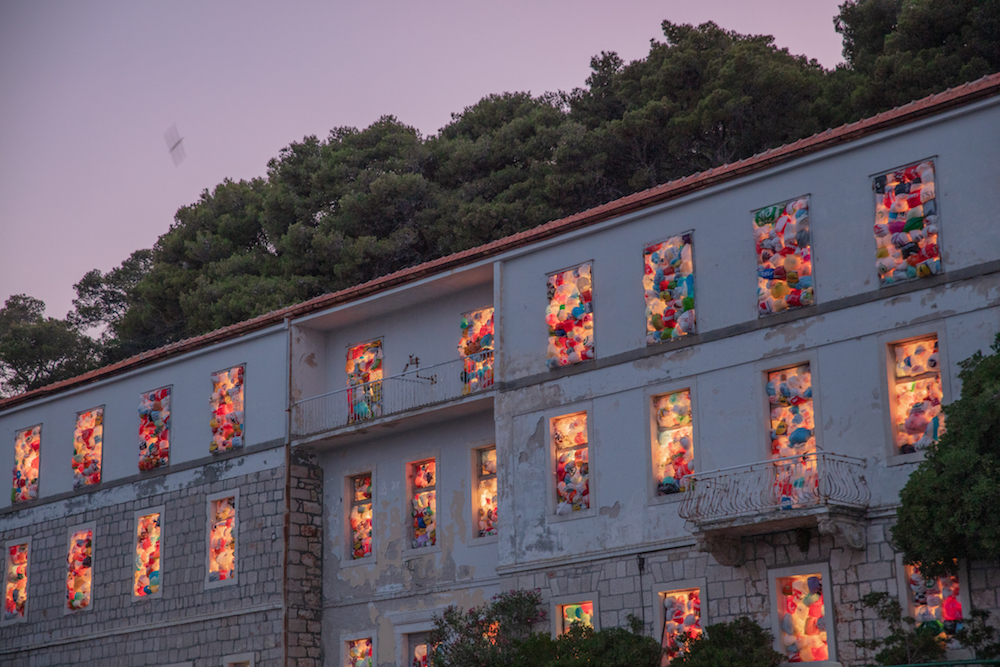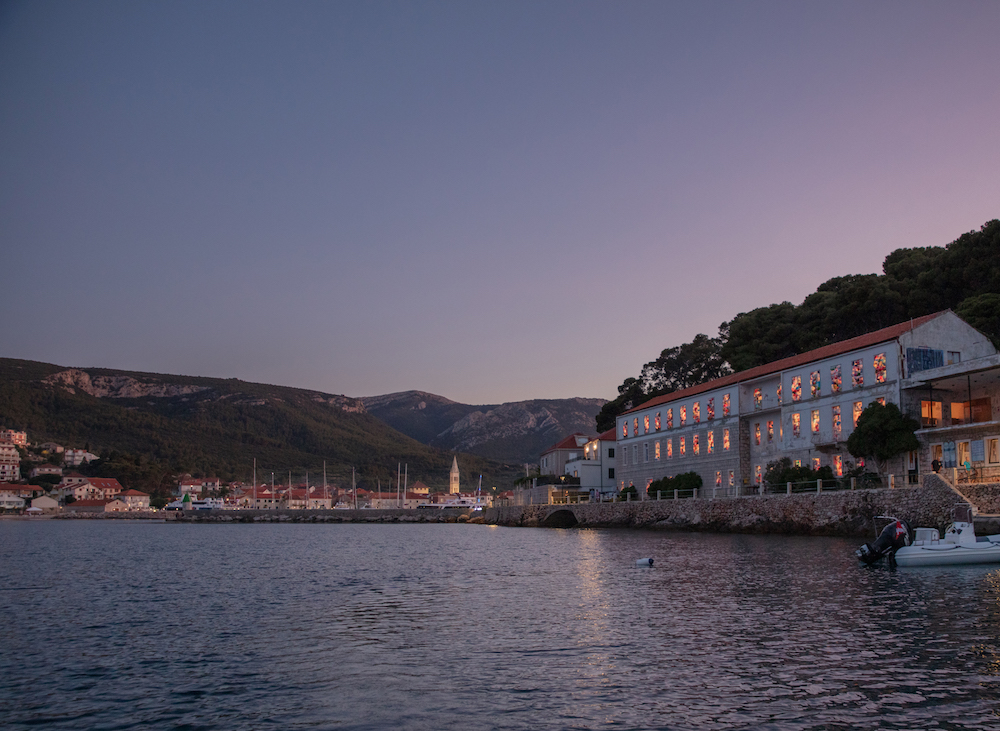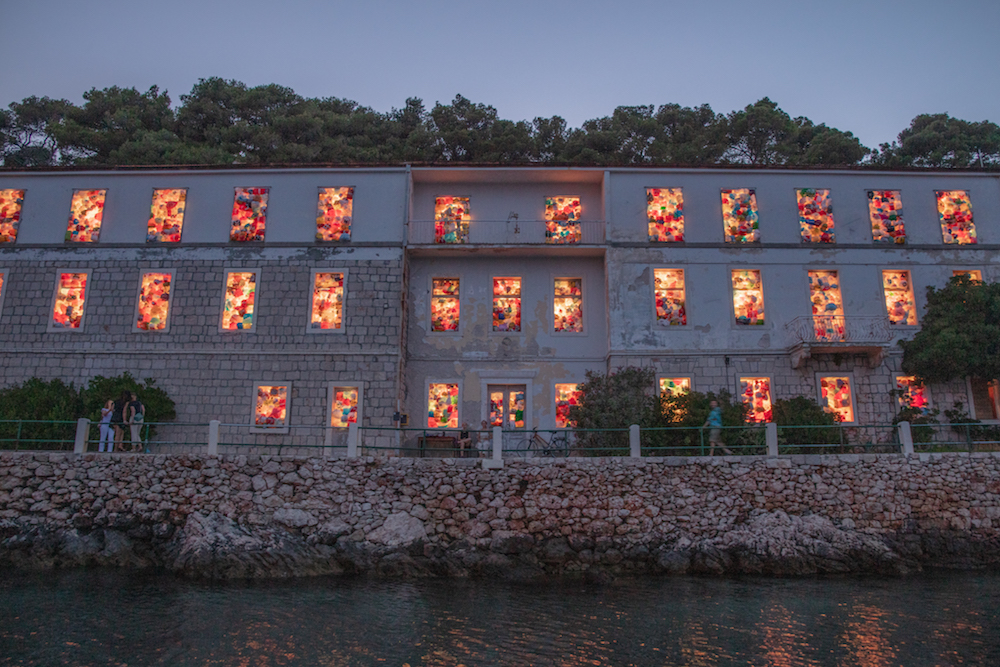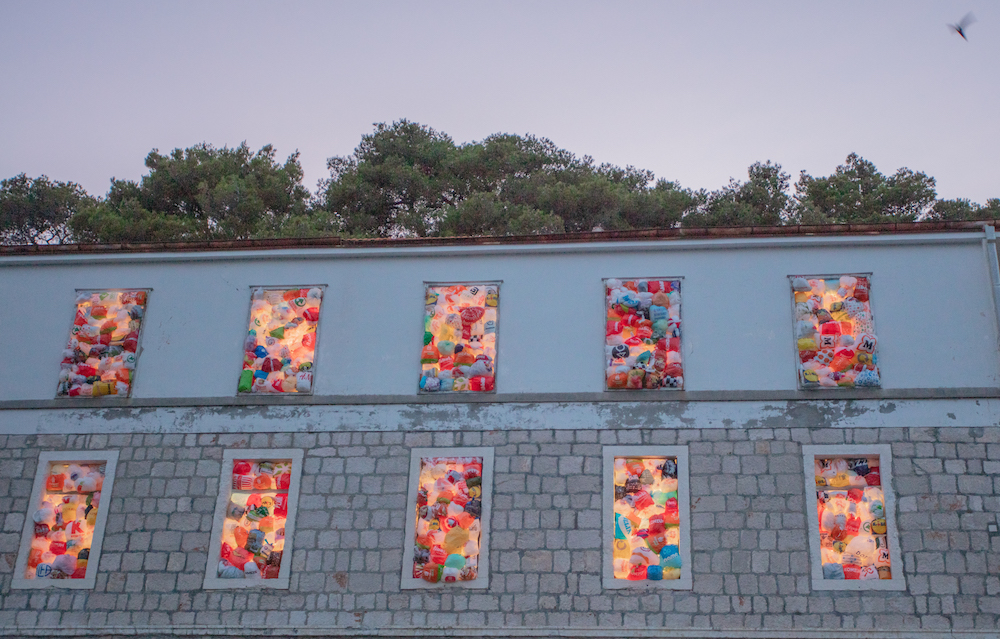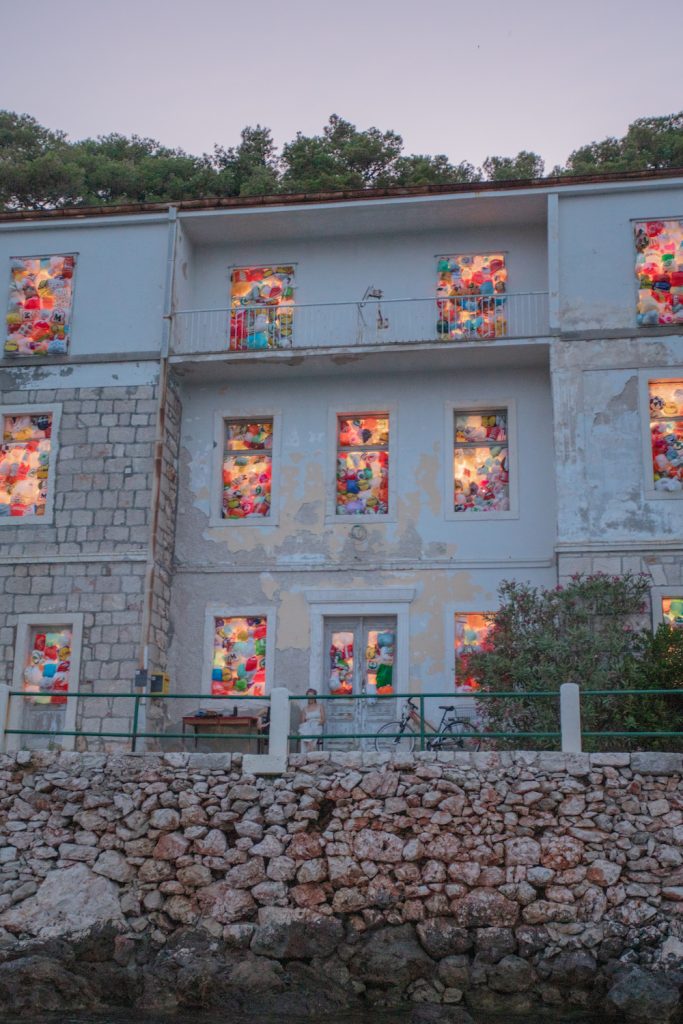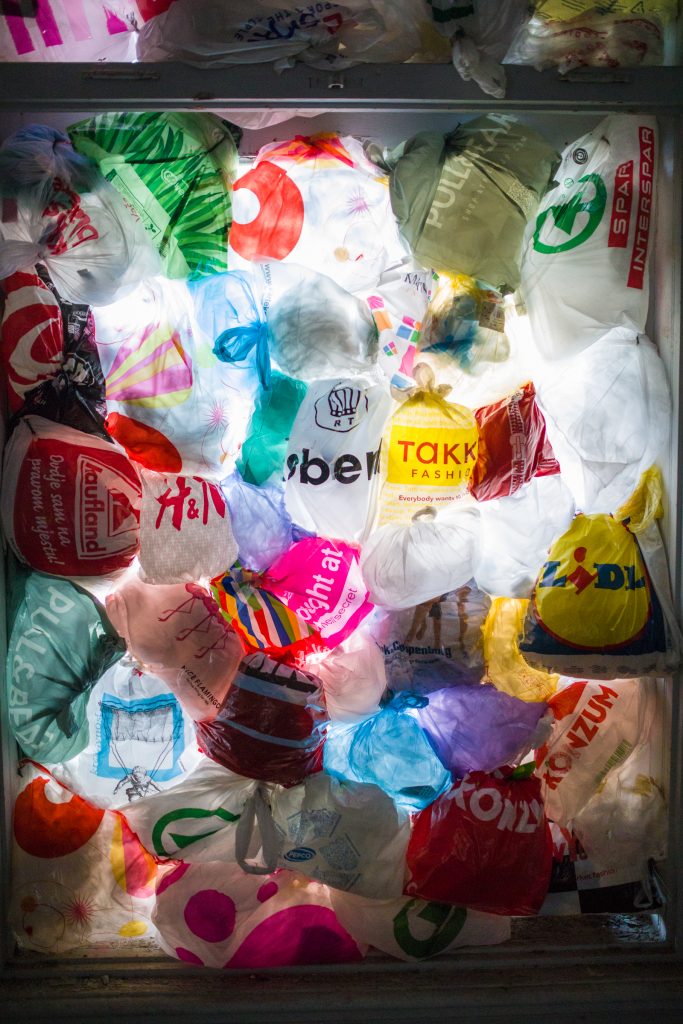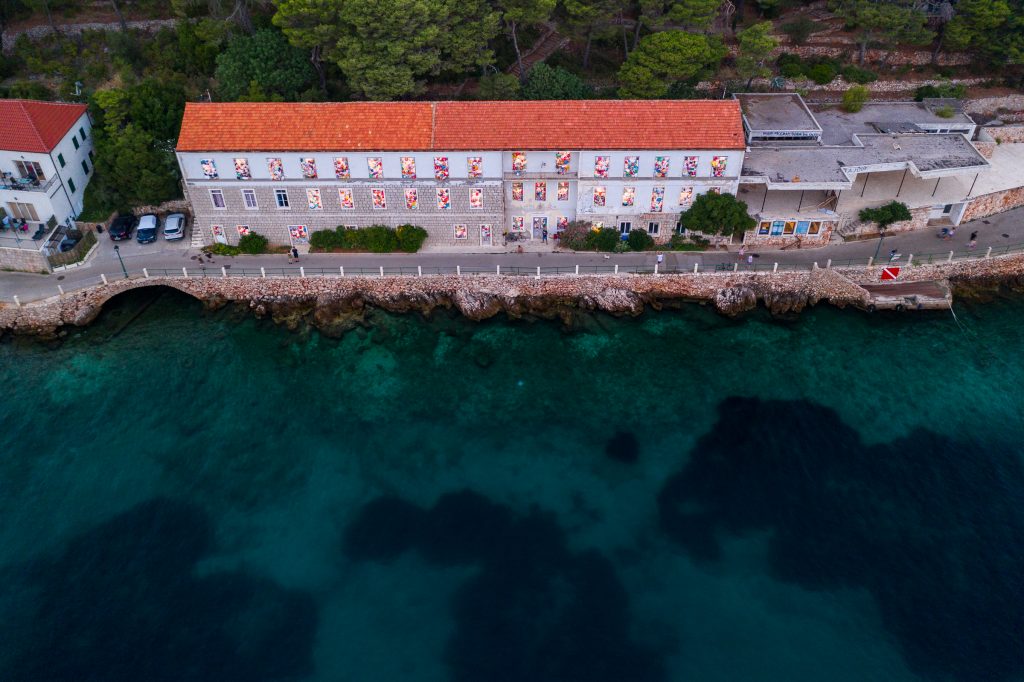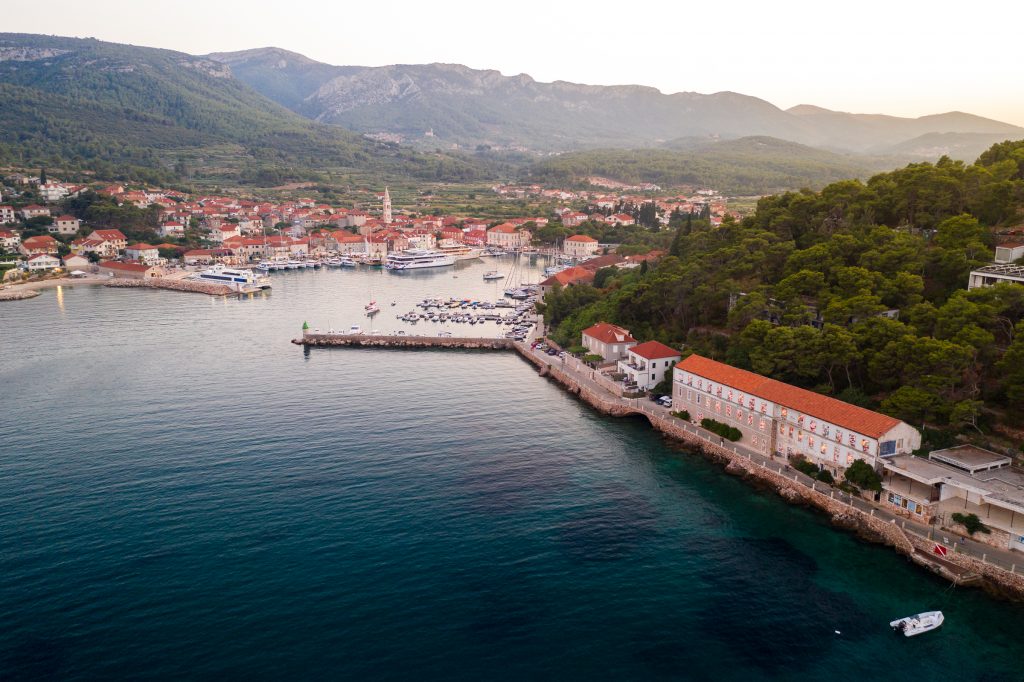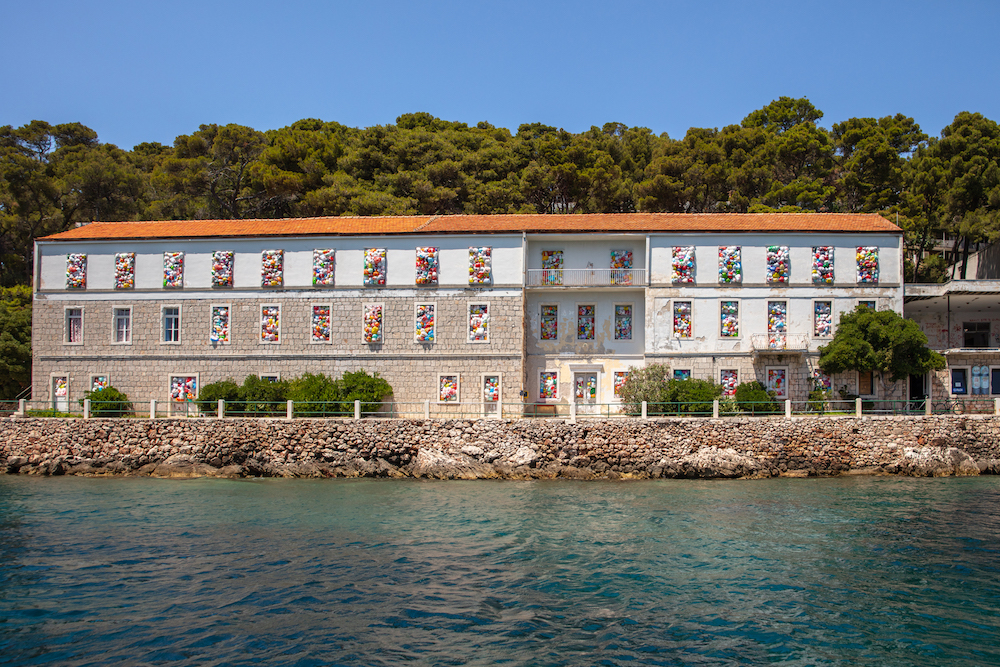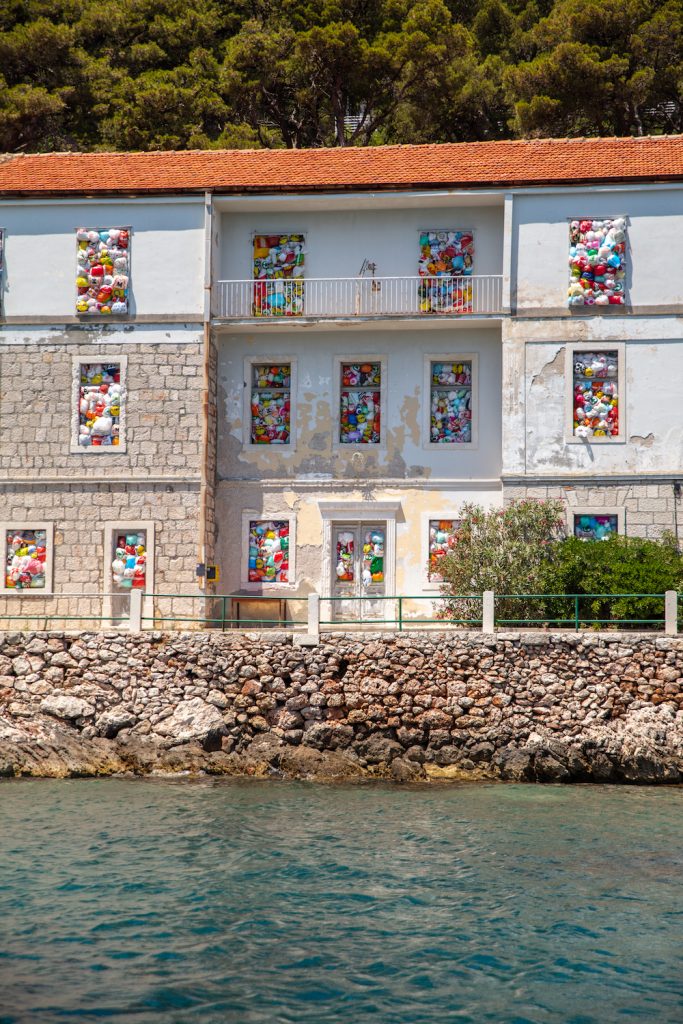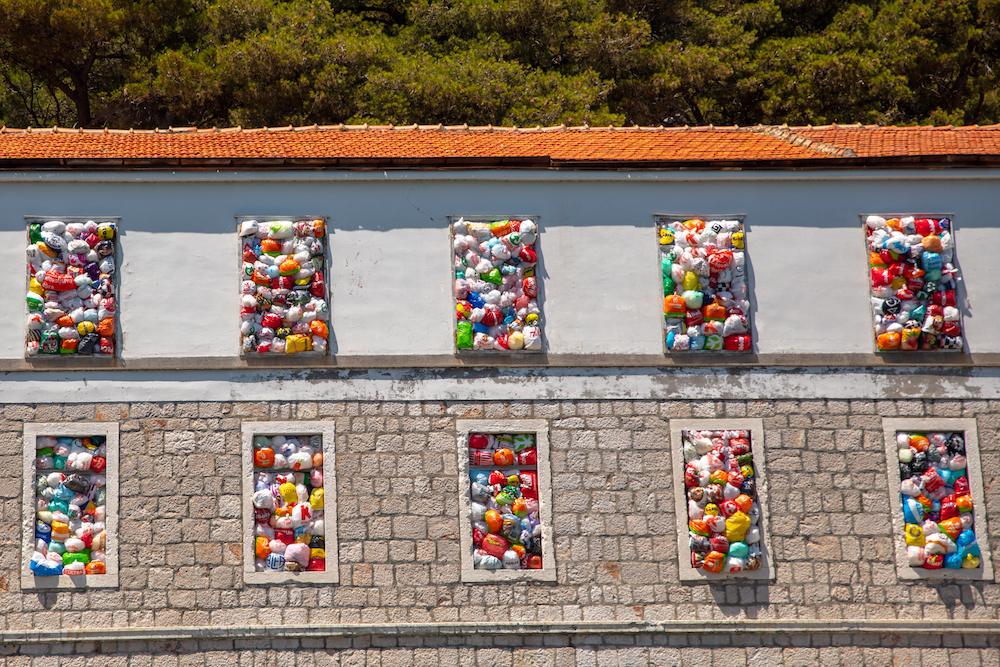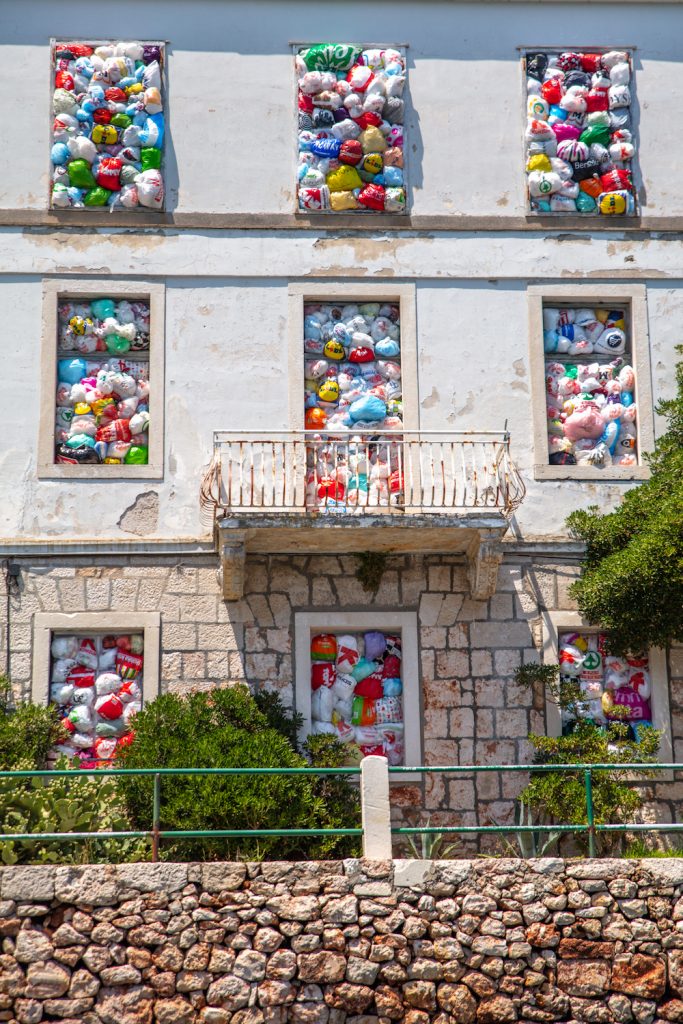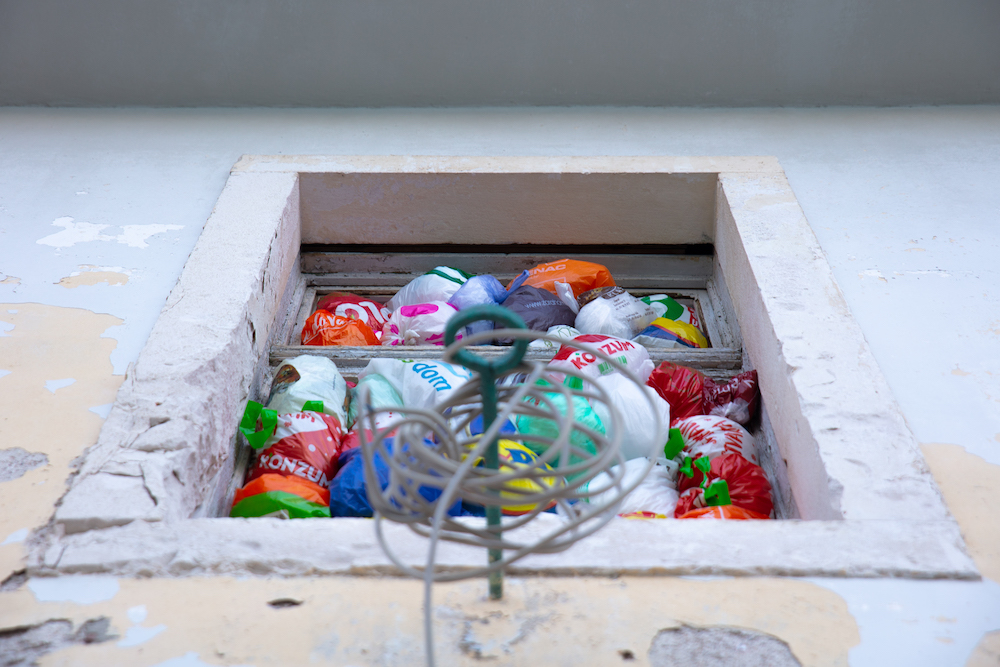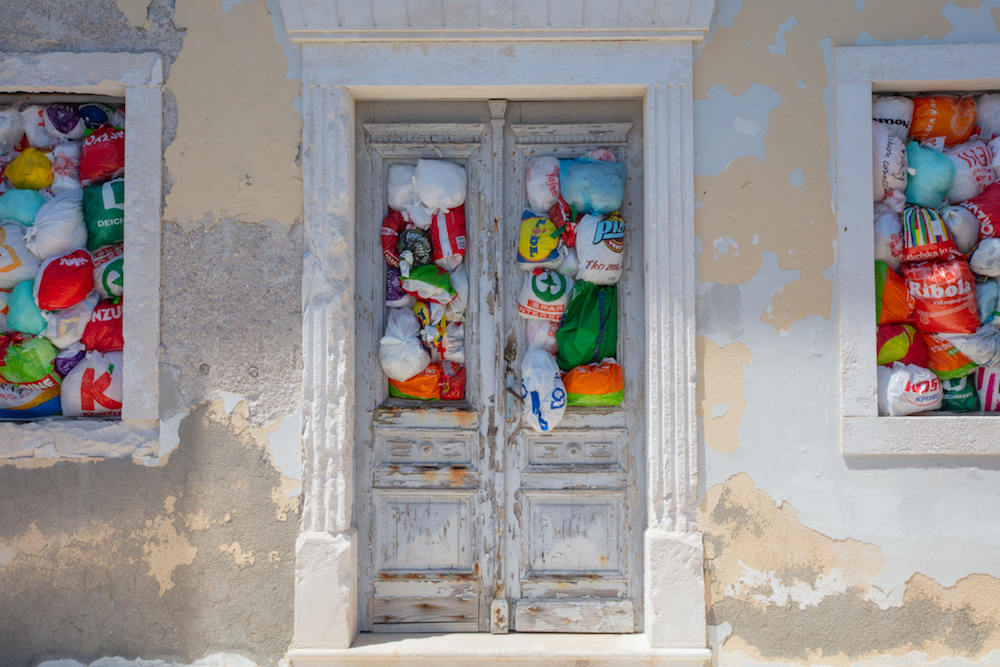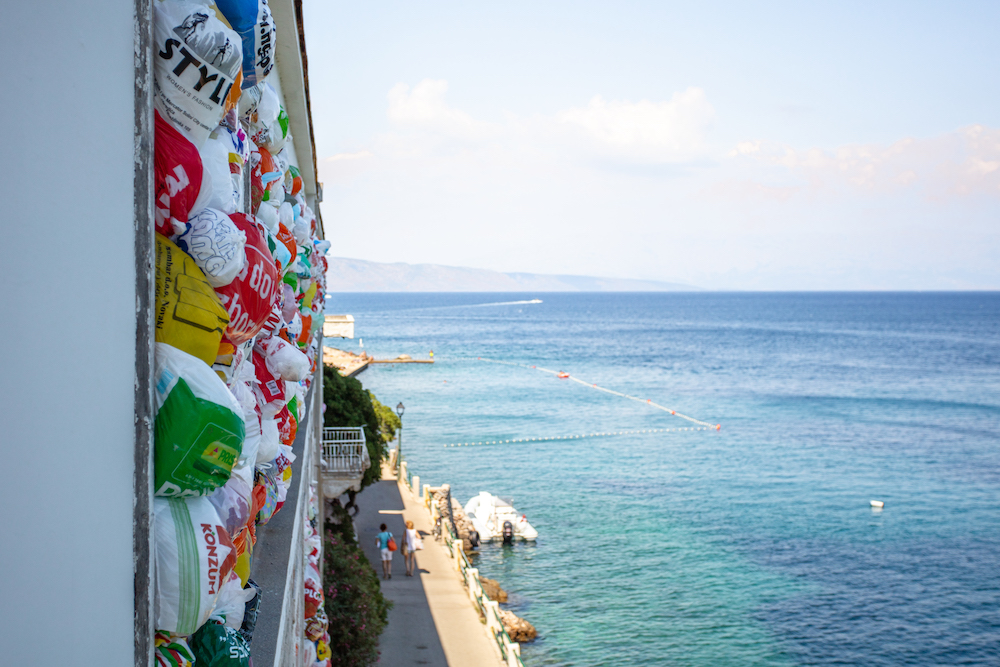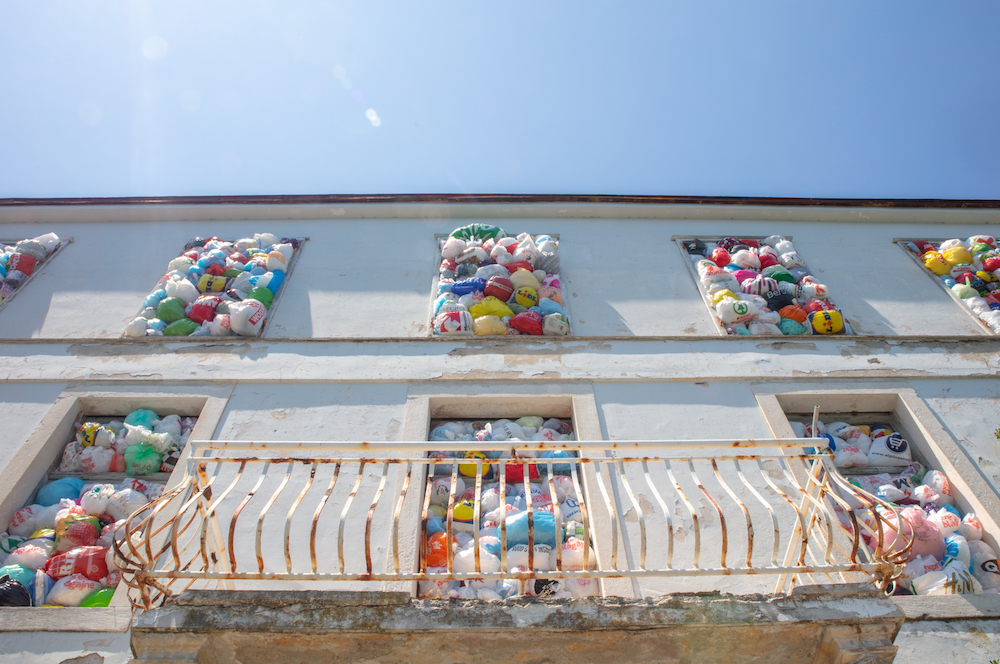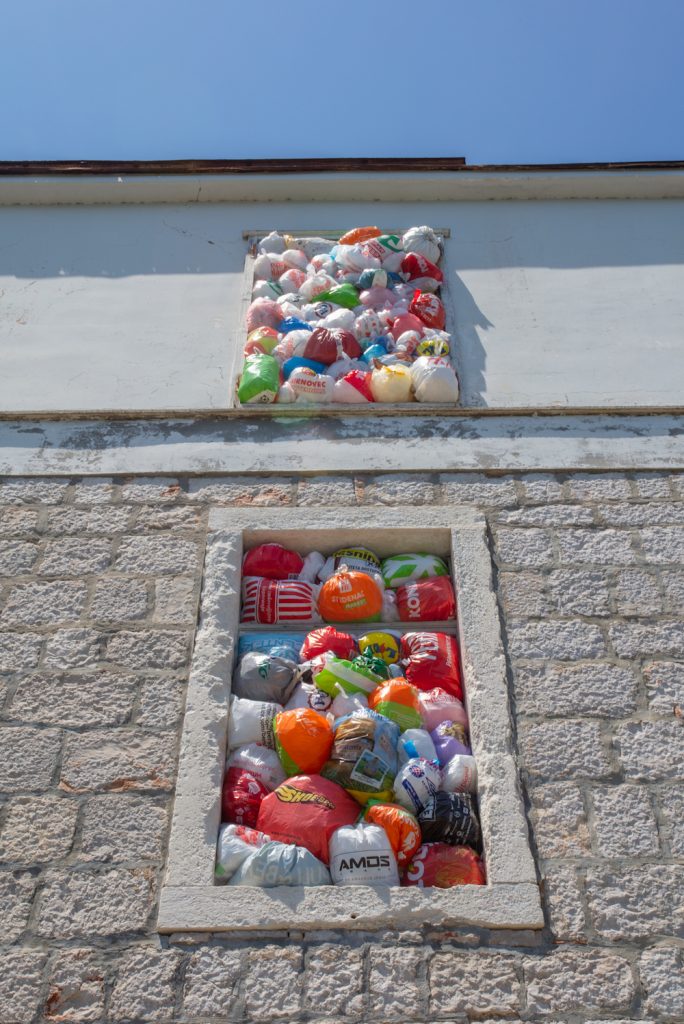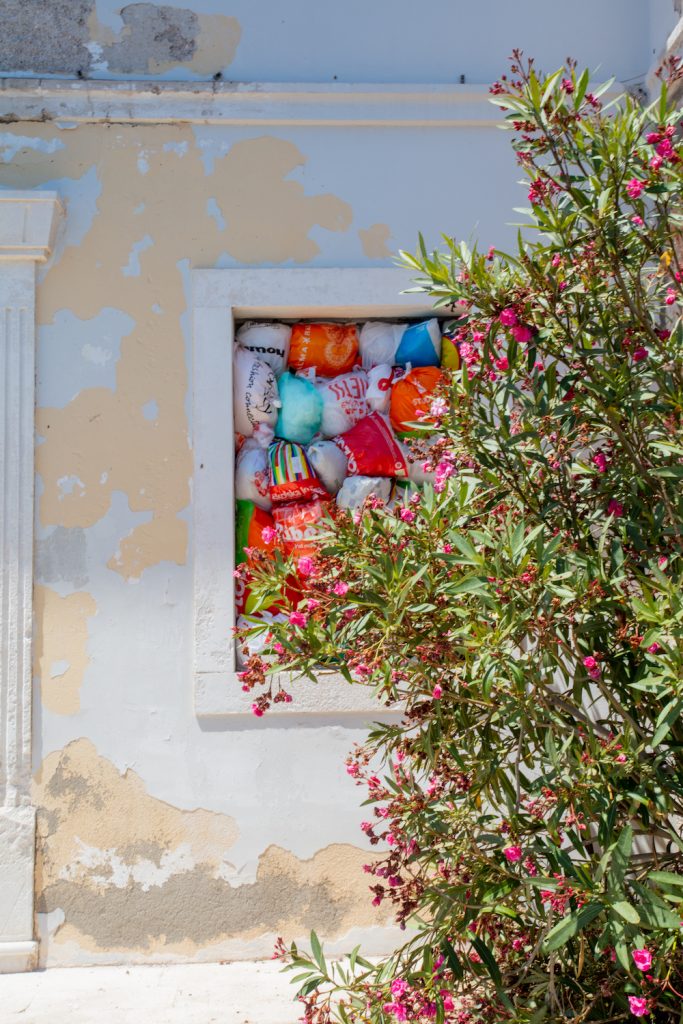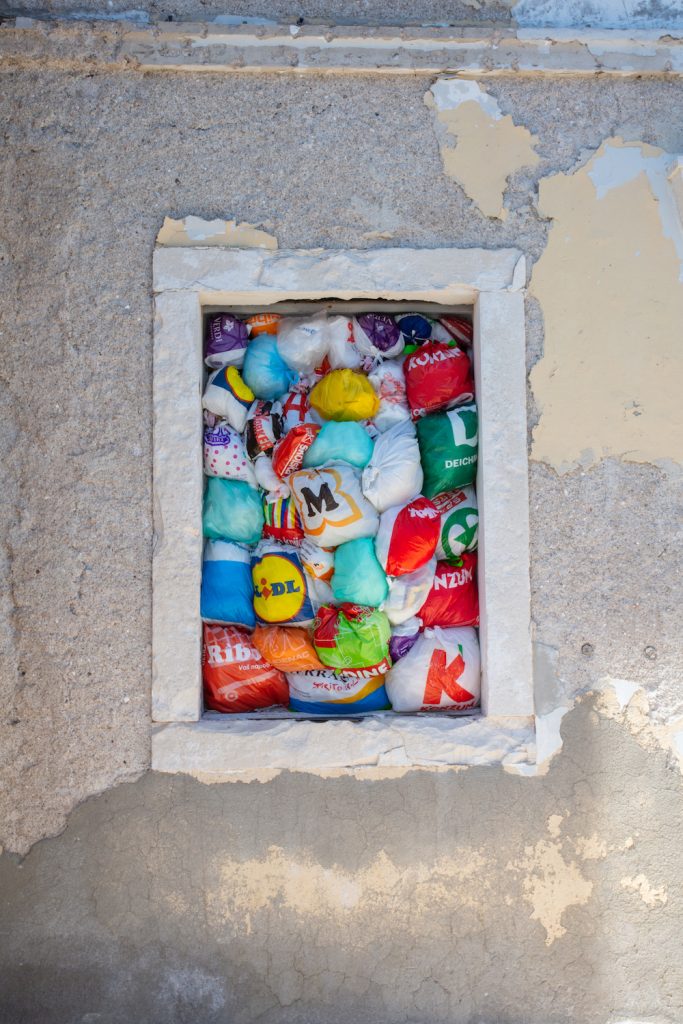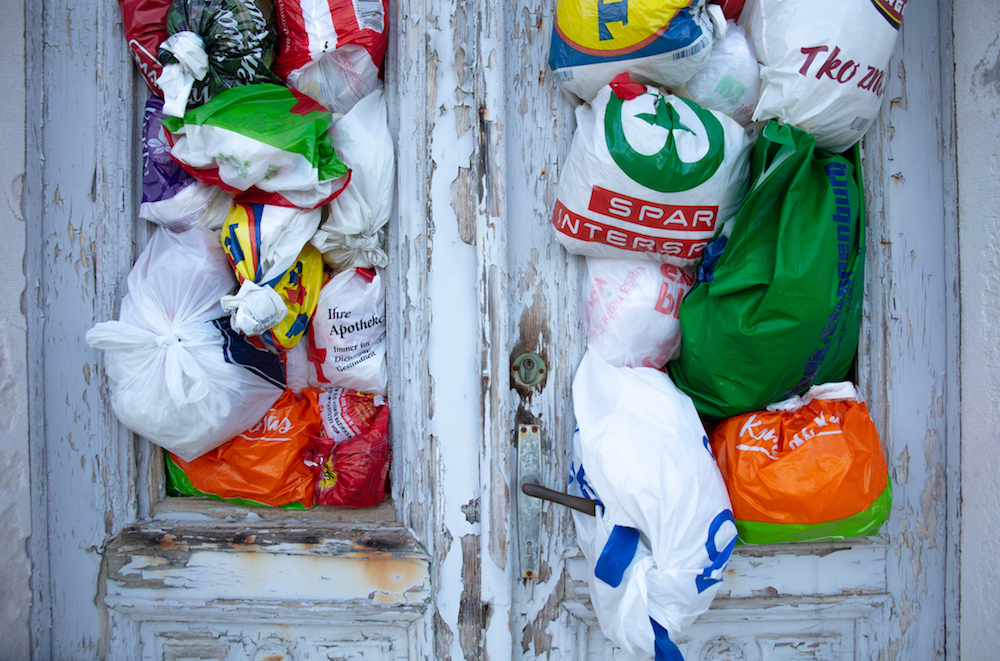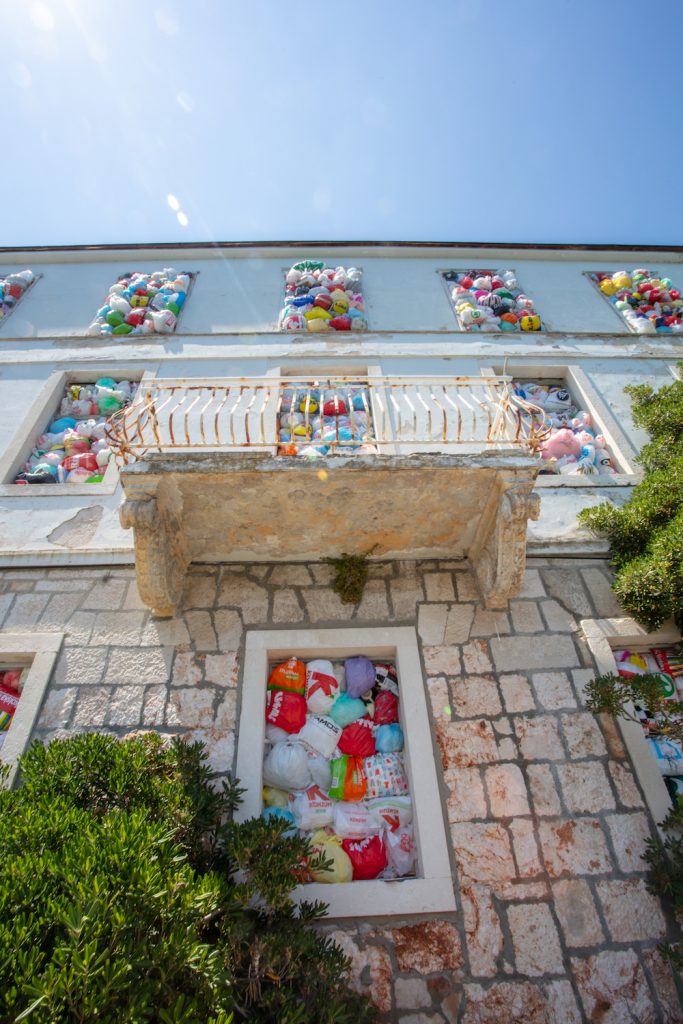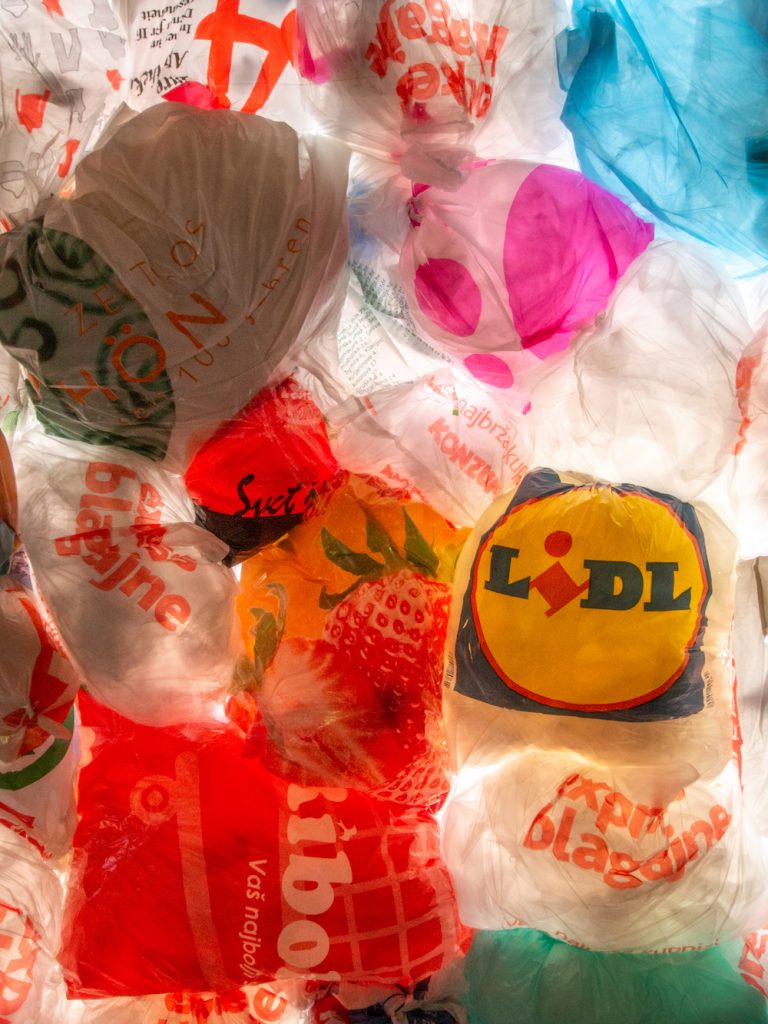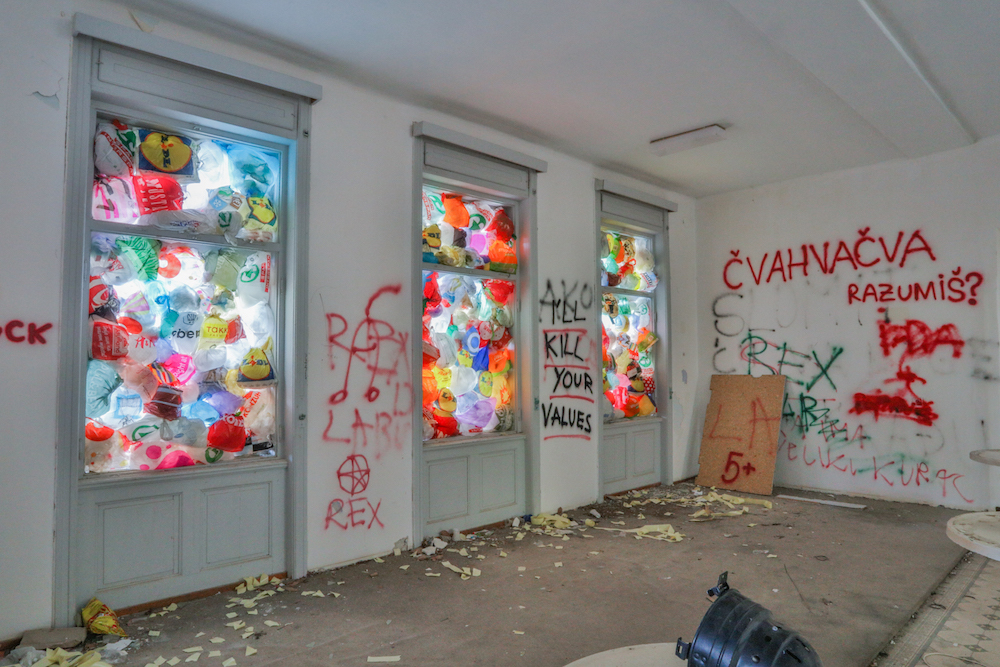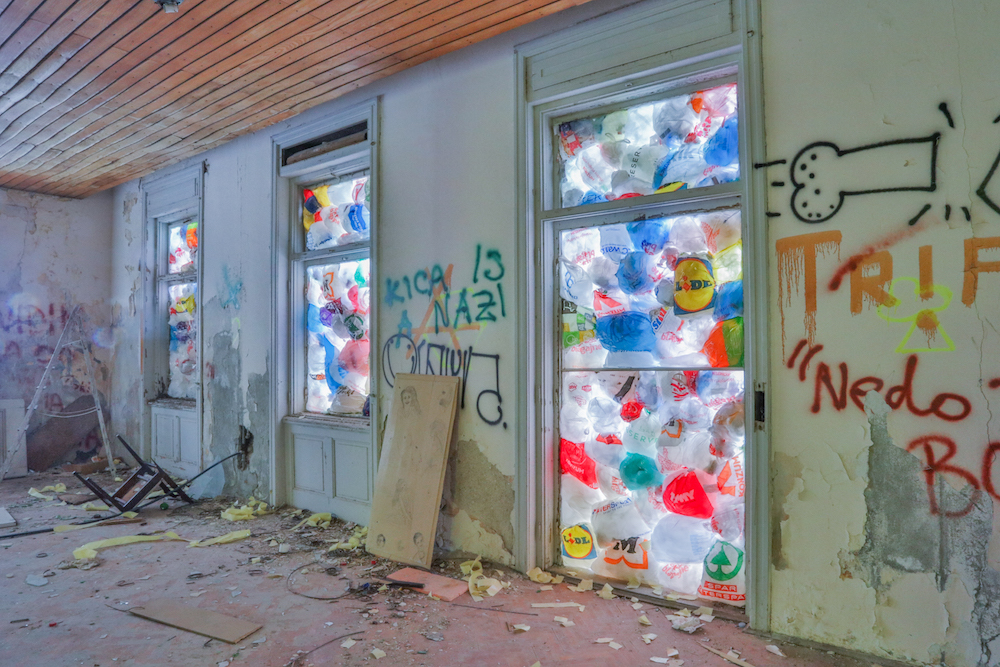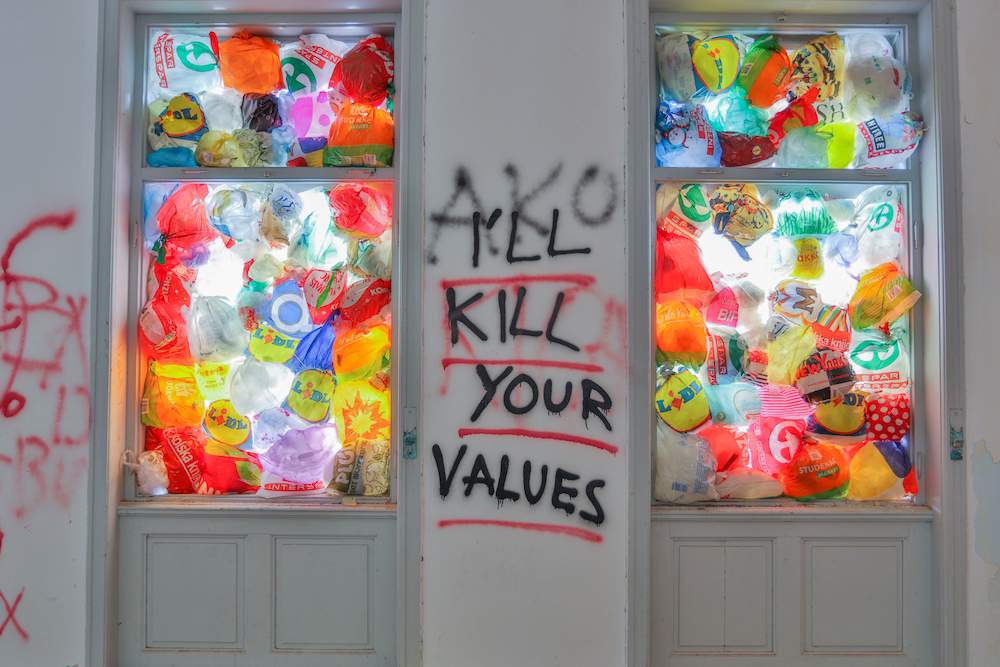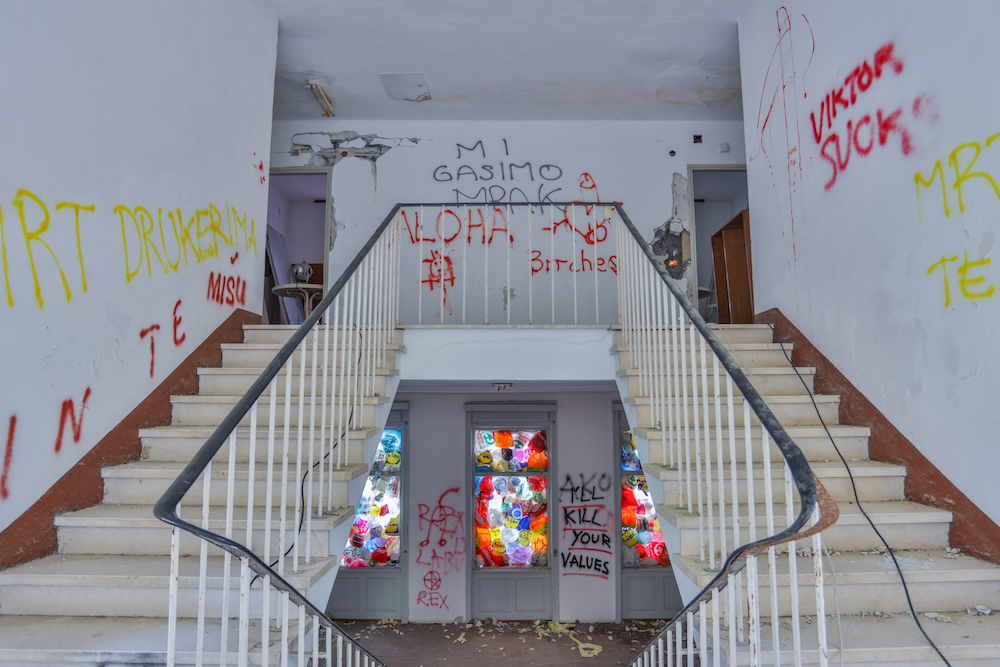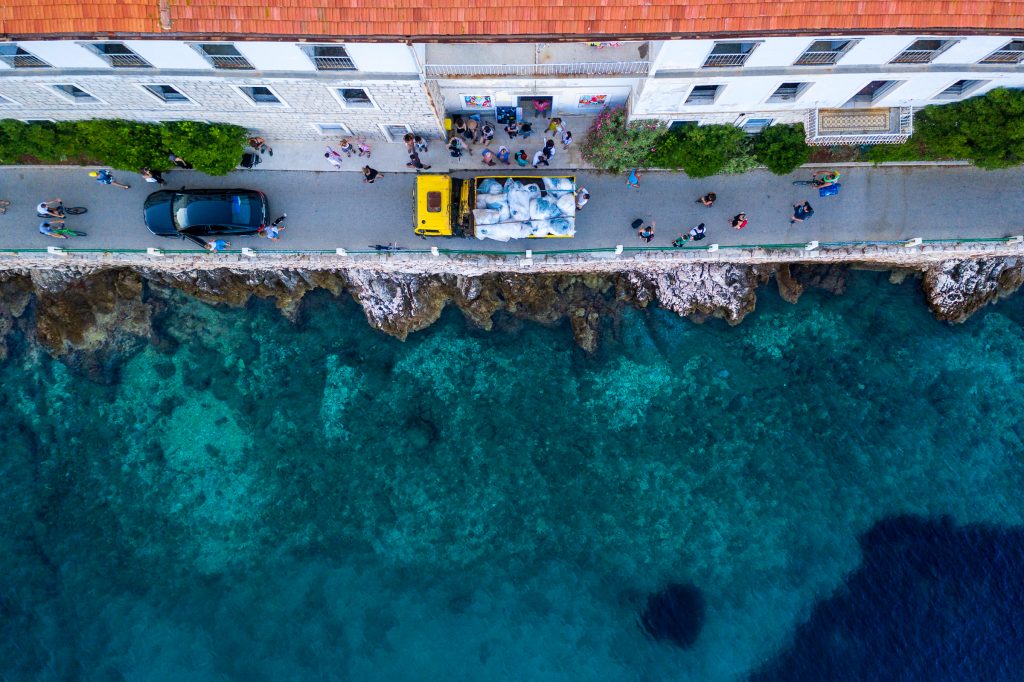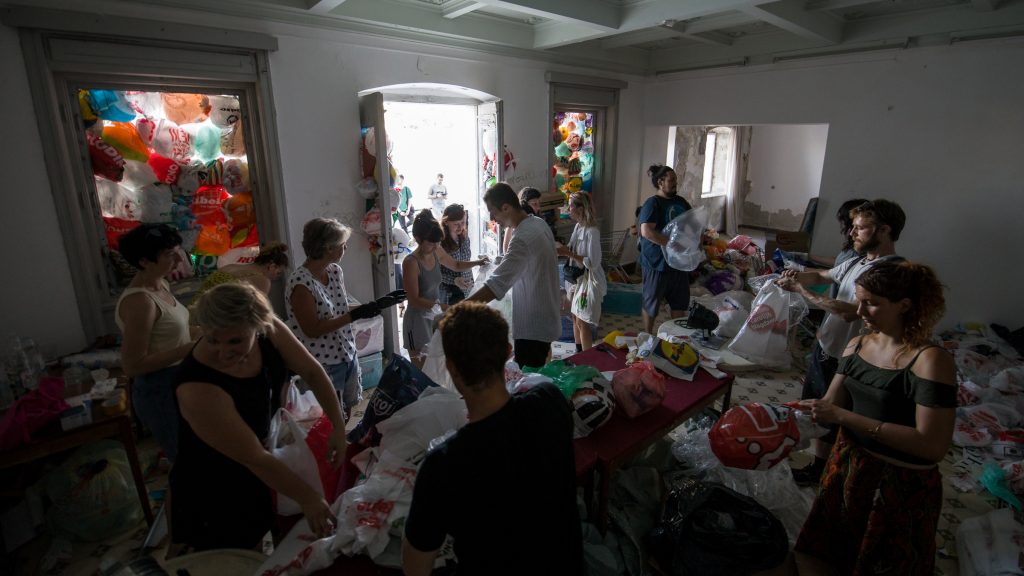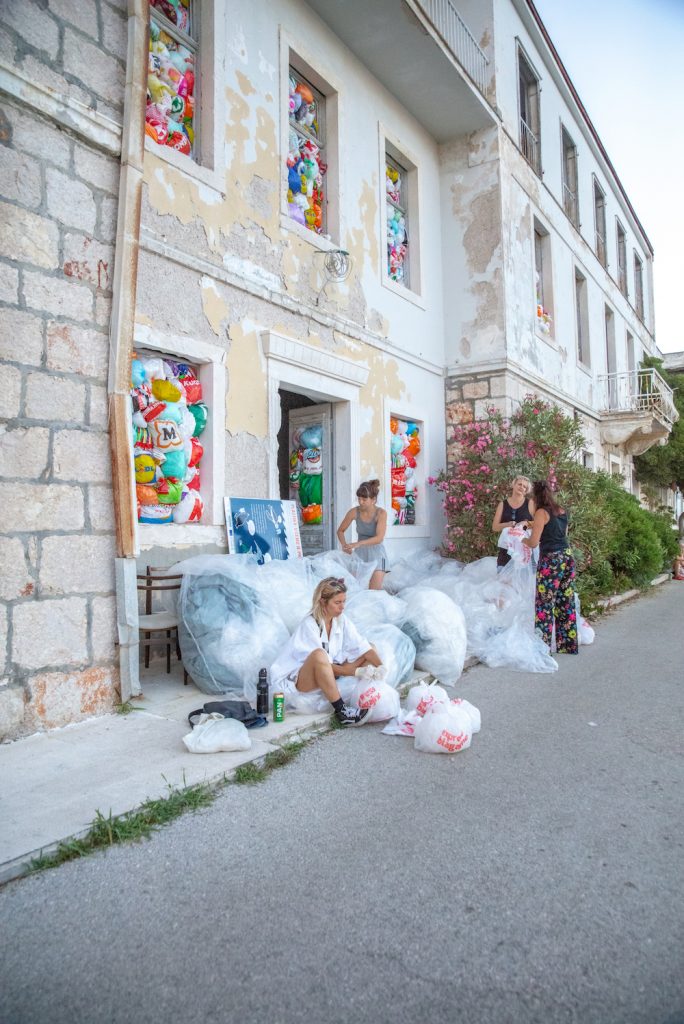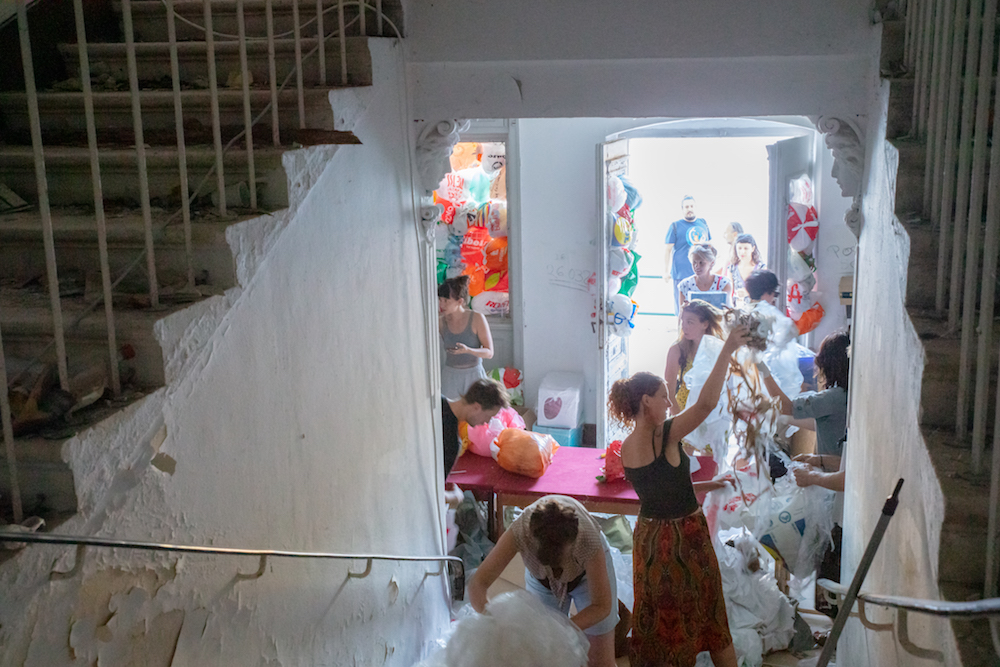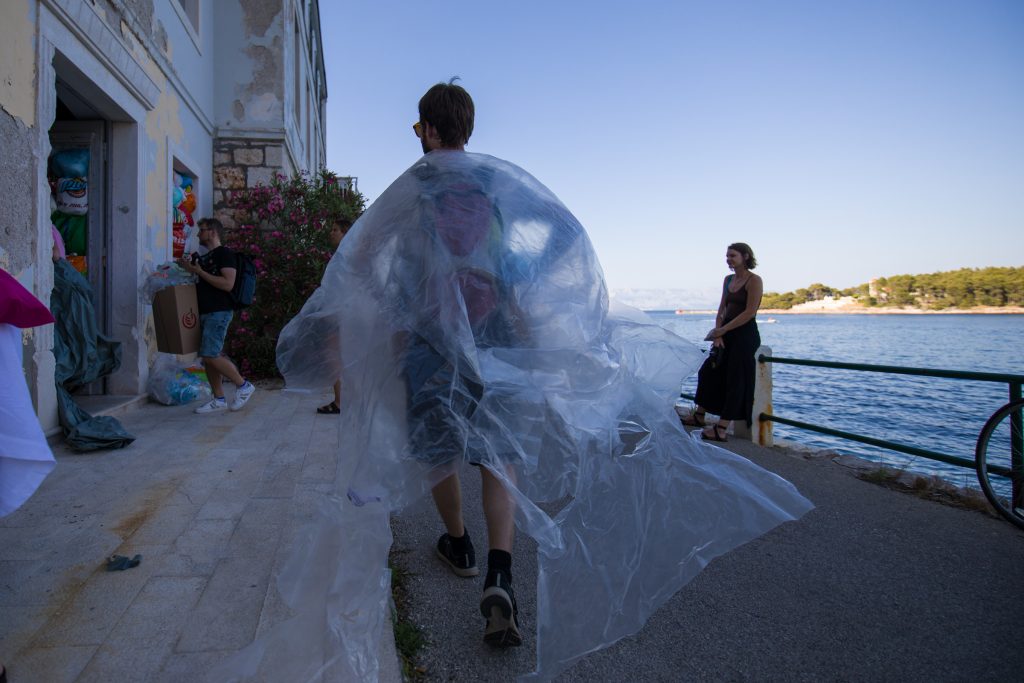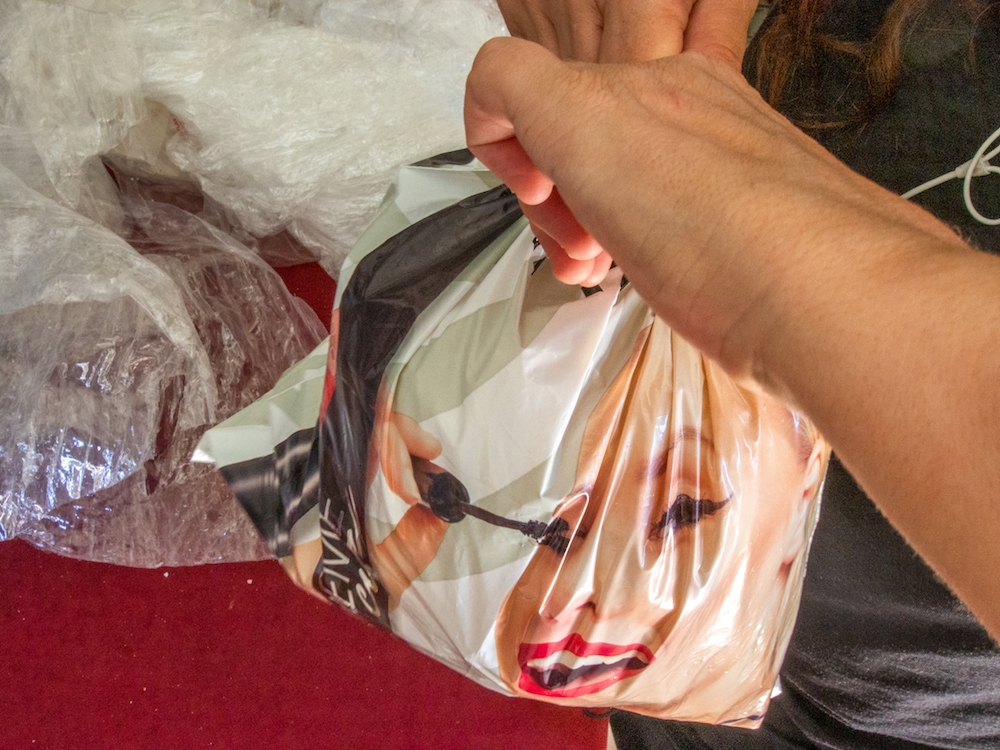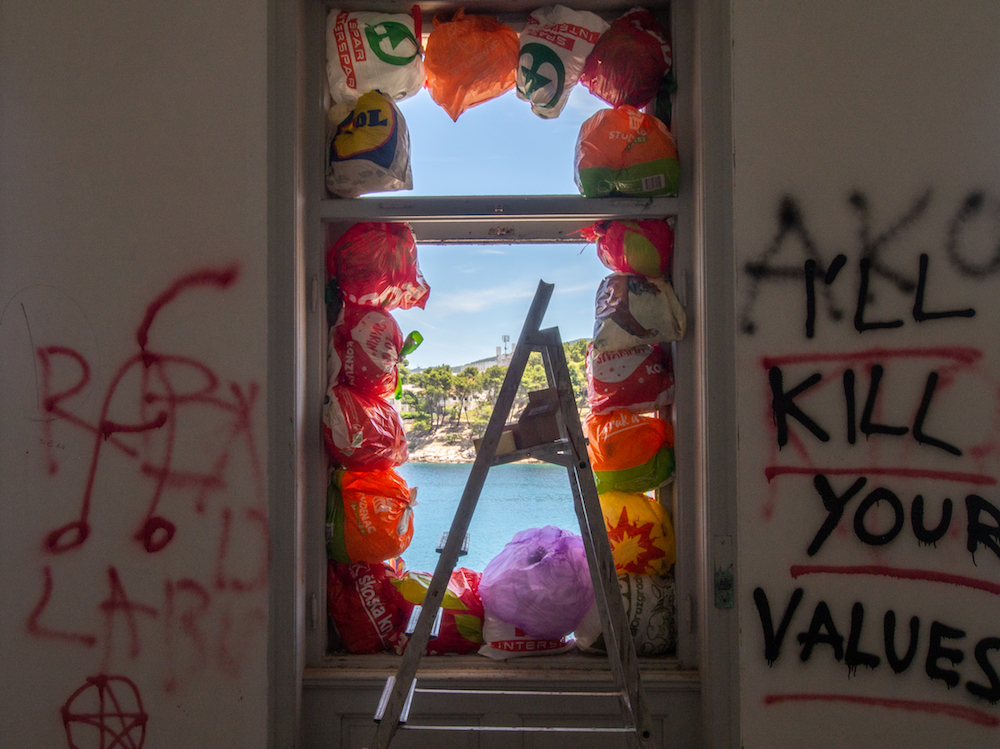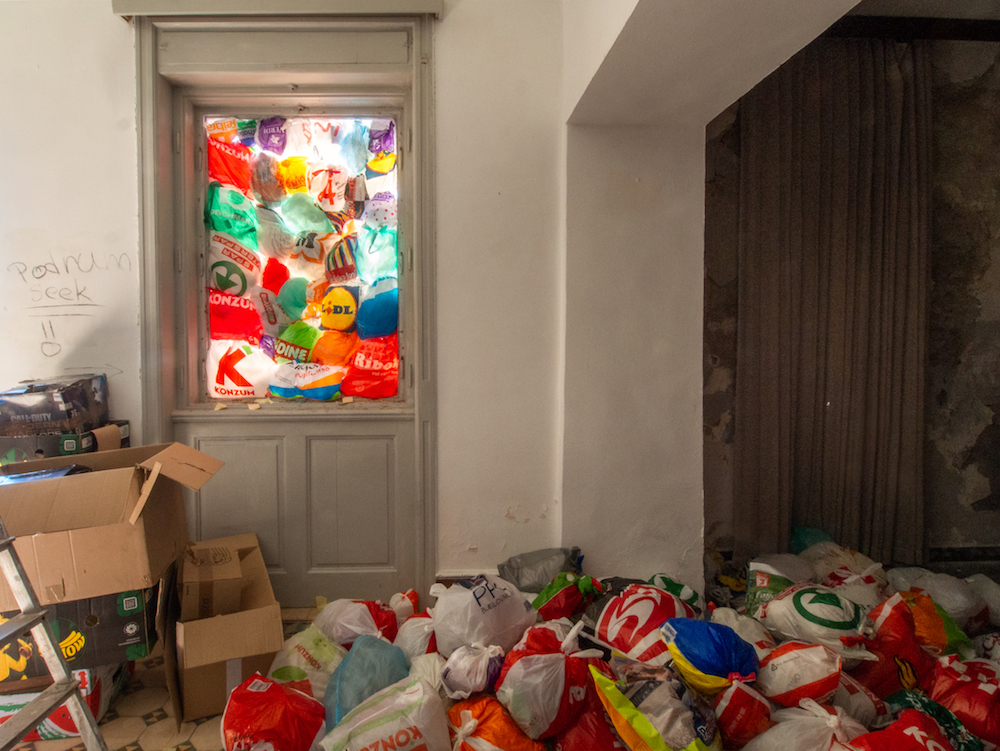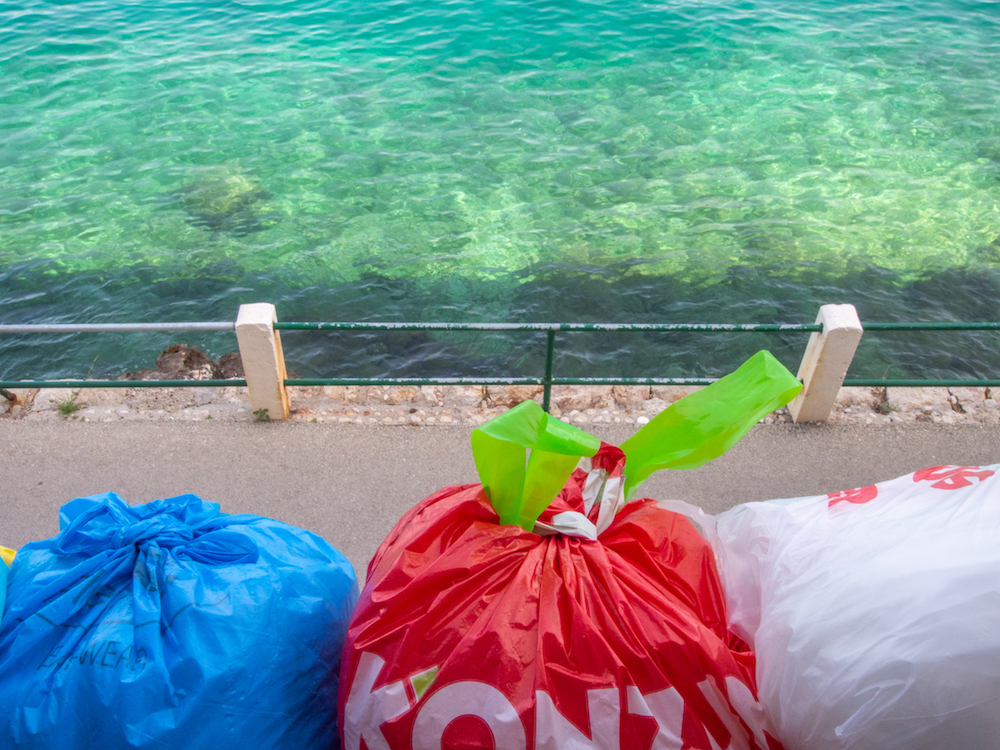Life Linger On Blank Pages / La vida continúa entre hojas blancas. Madrid 2021
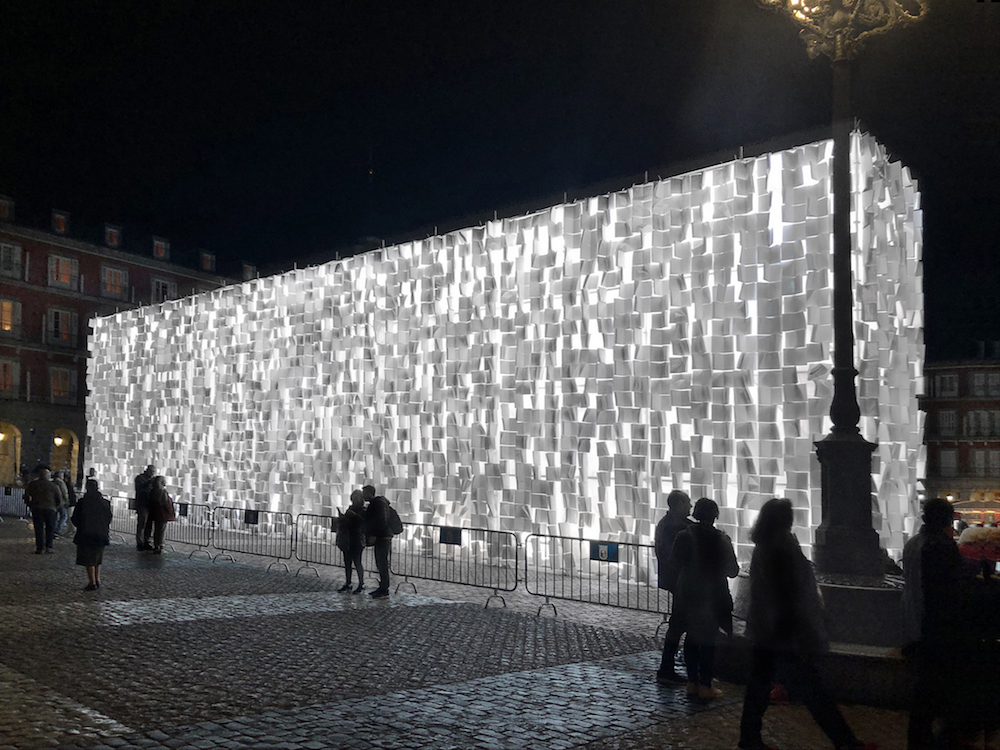
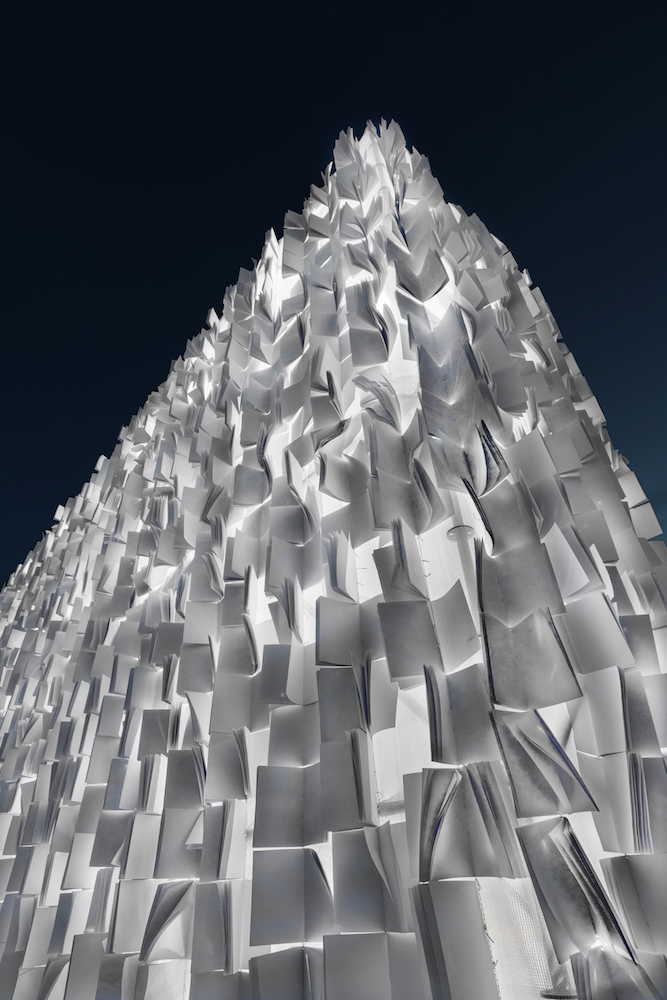
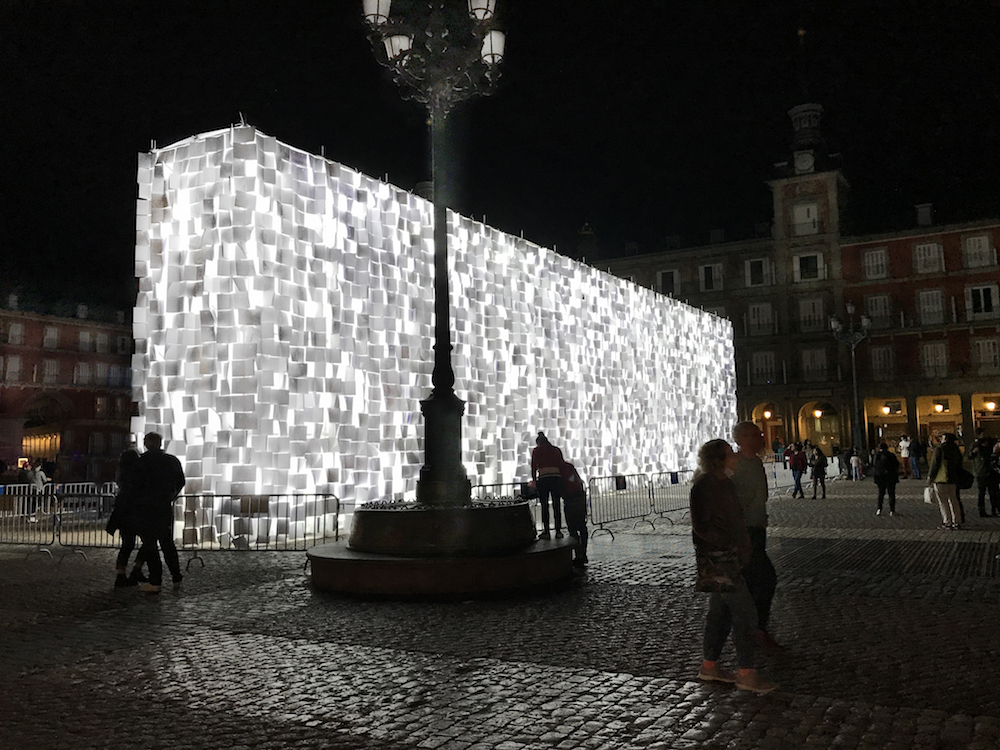
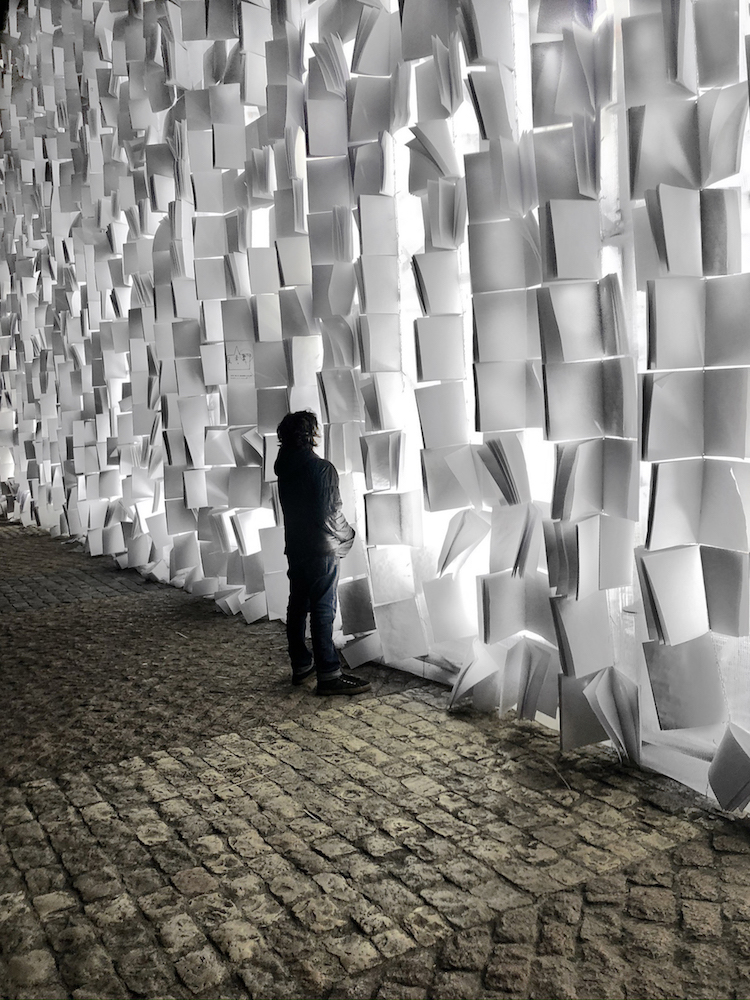
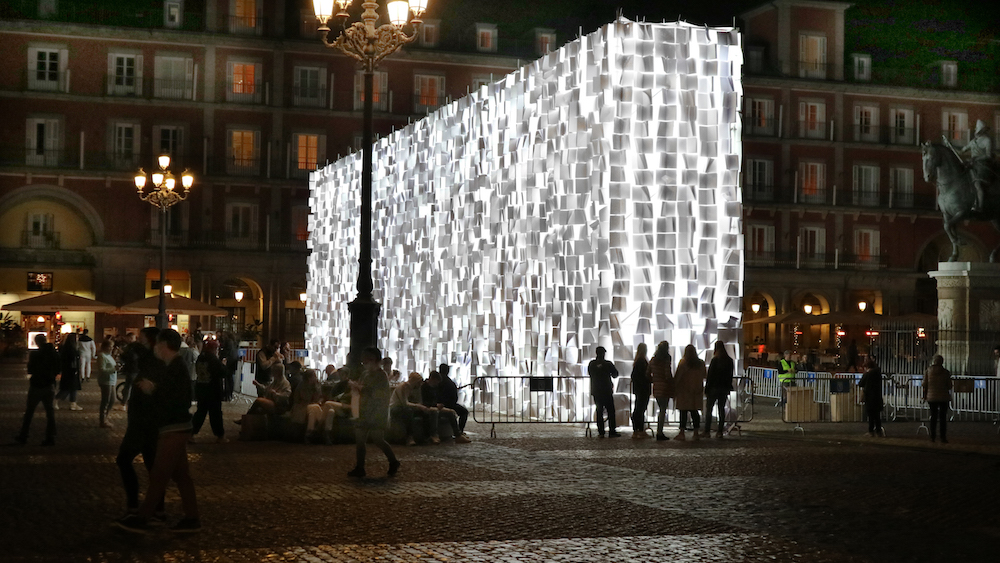
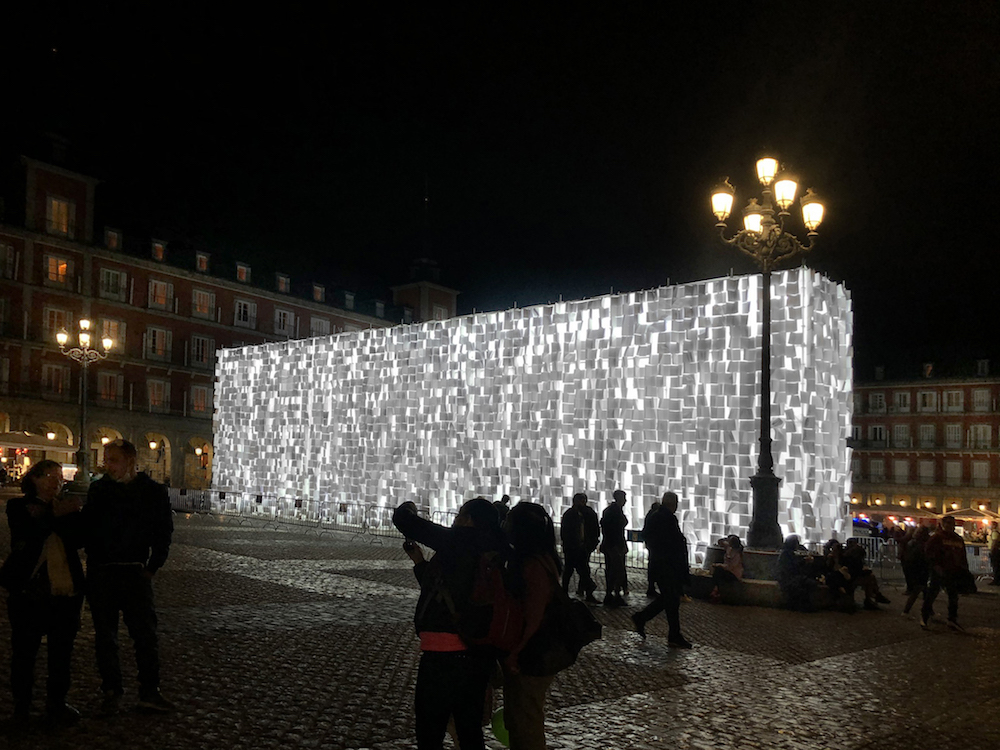
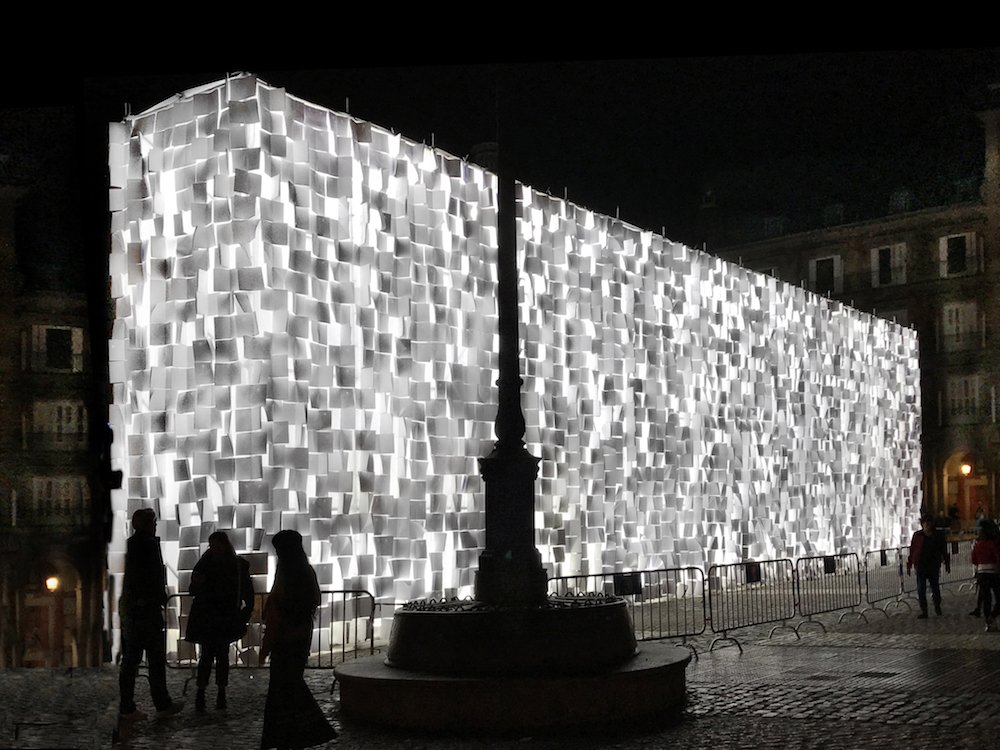
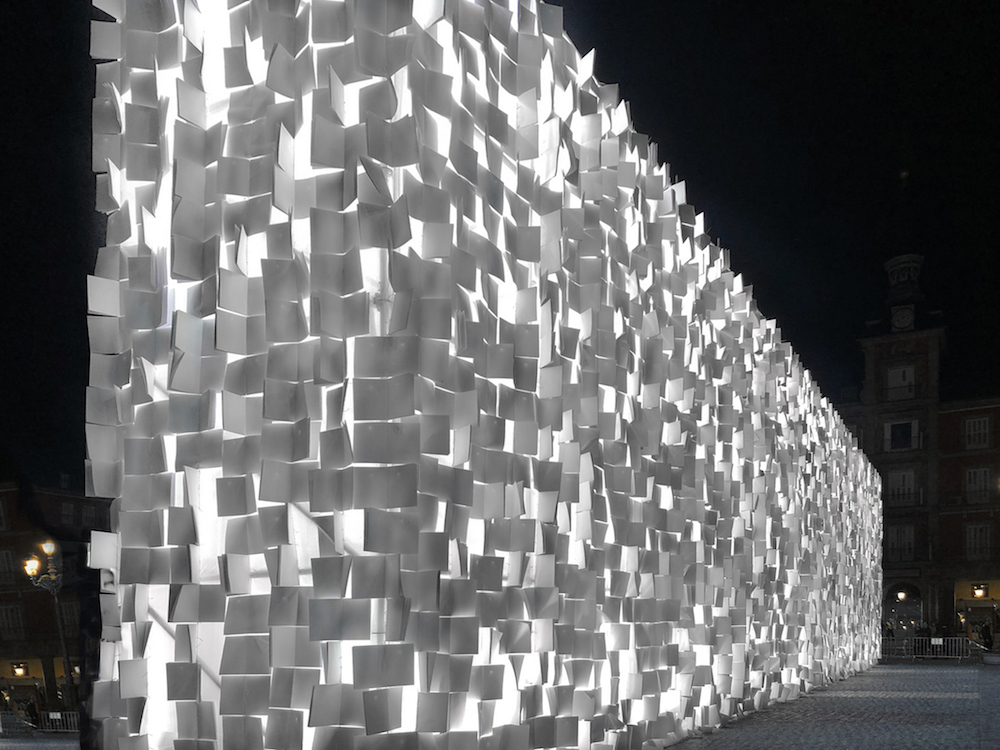
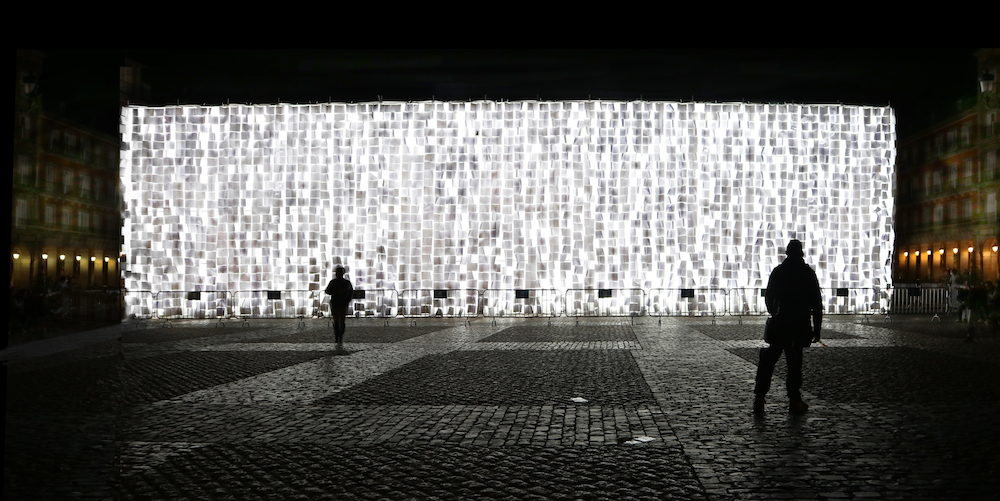

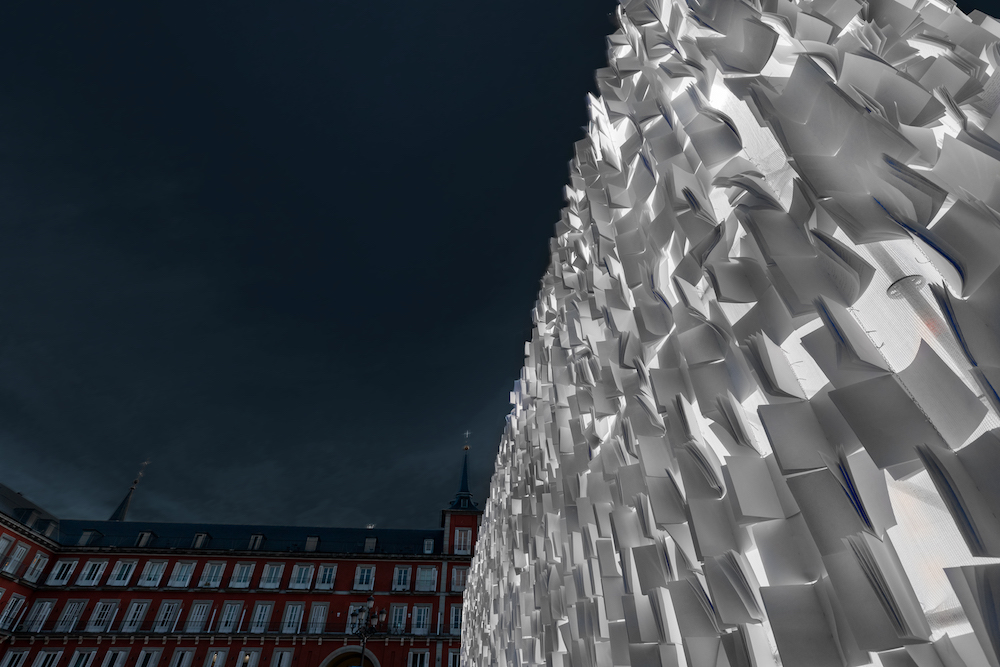
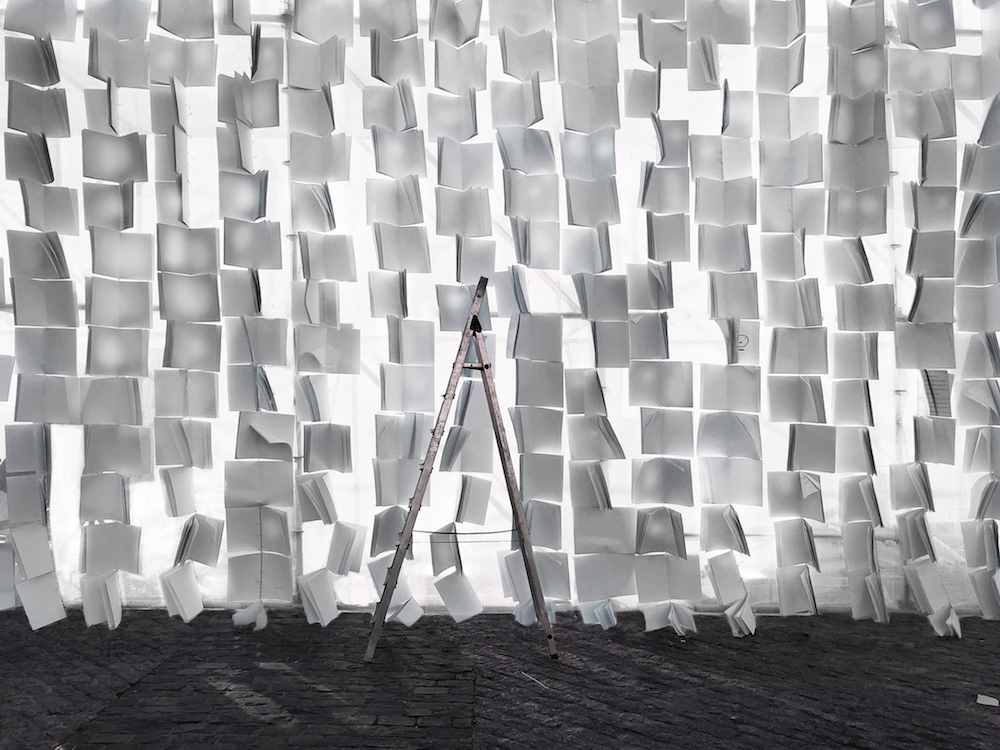
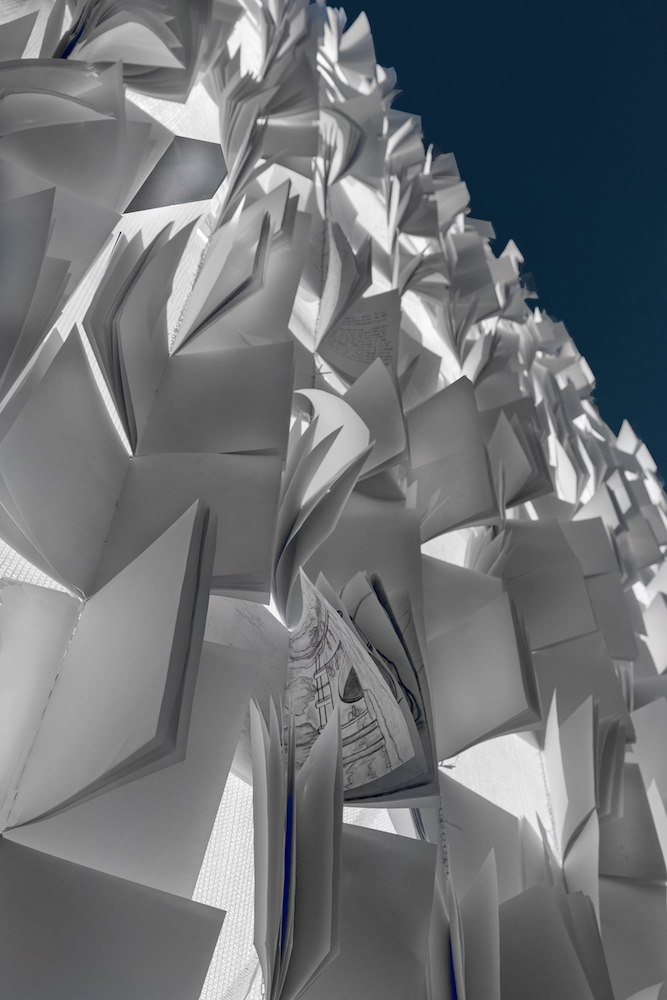

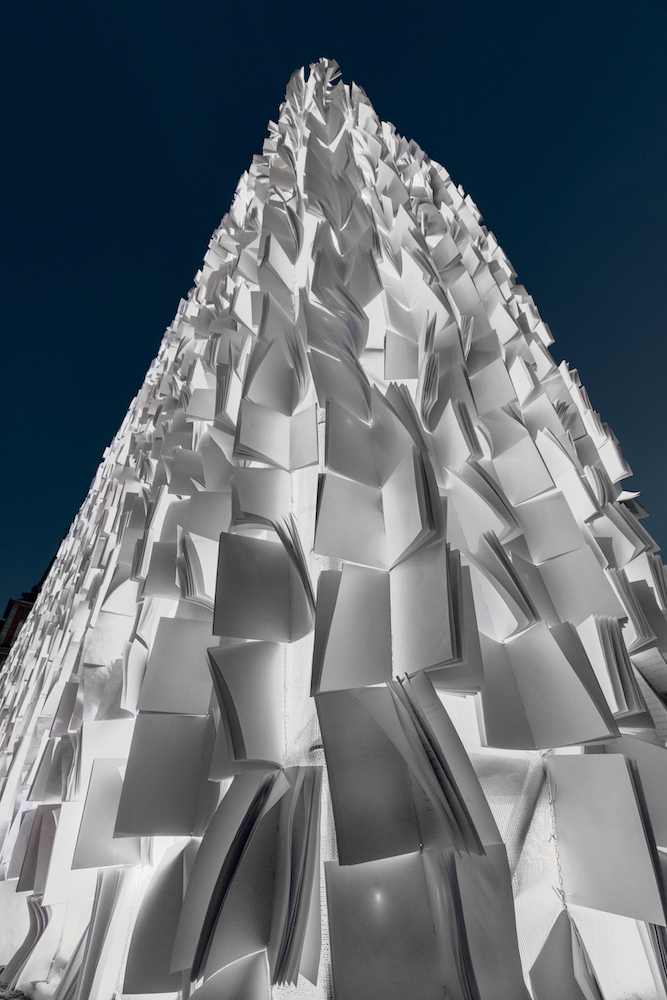
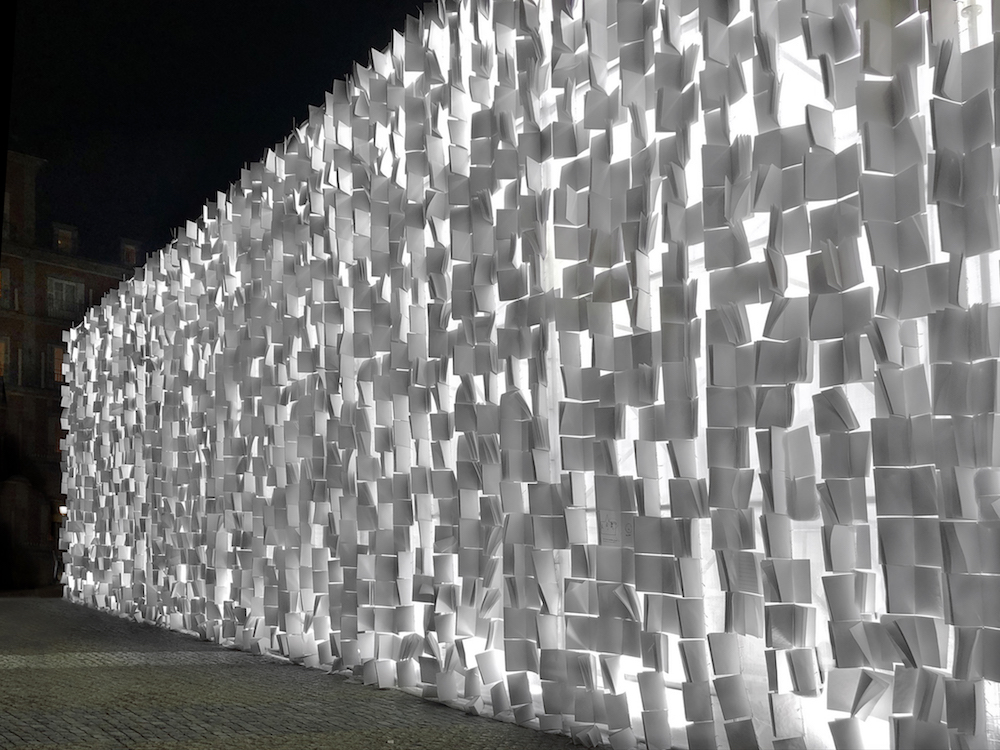
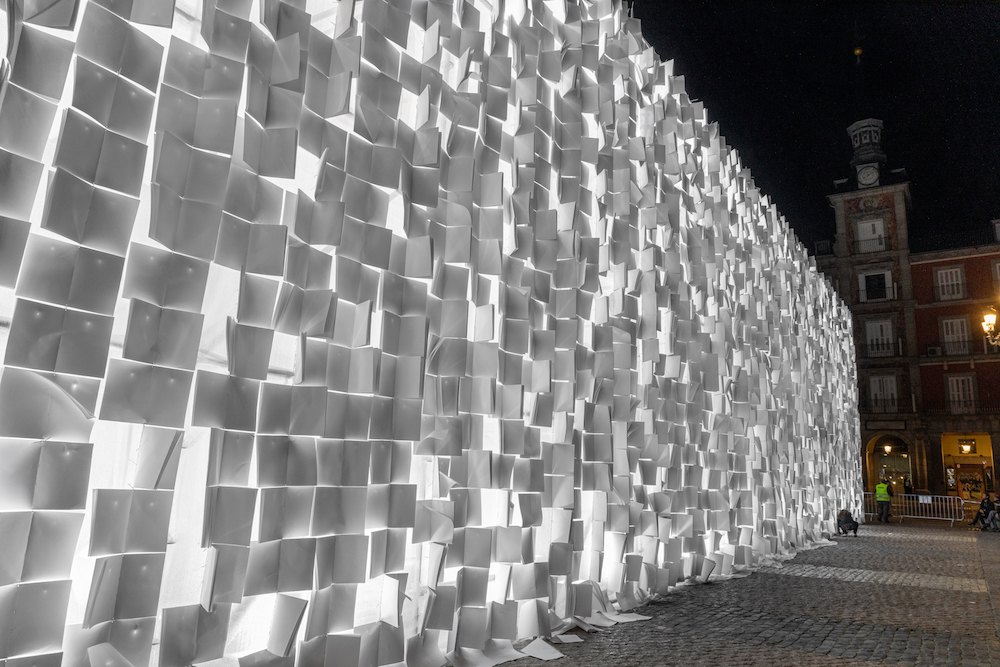
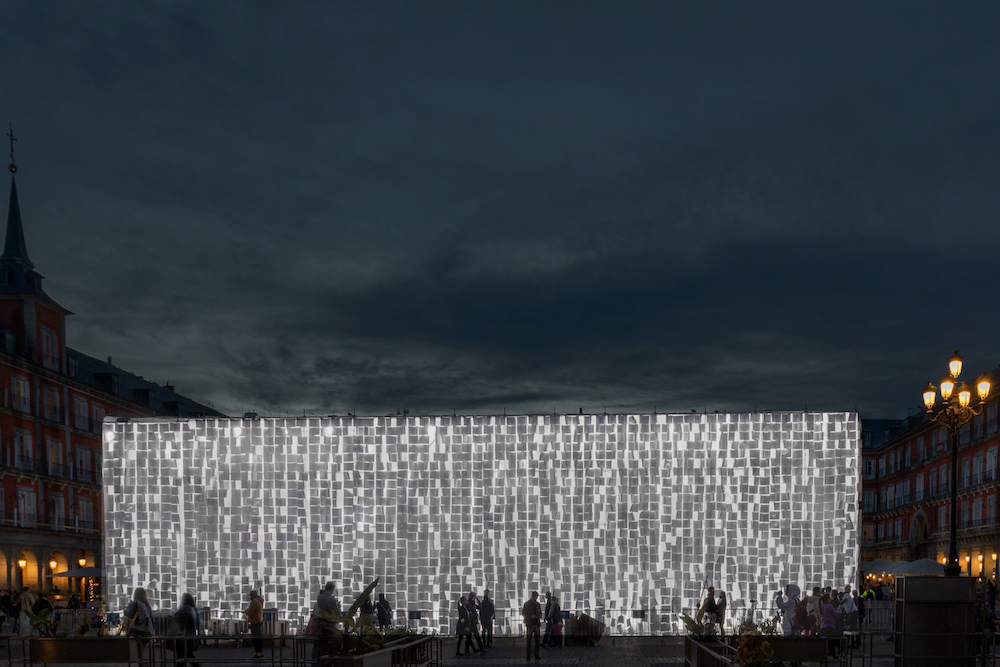
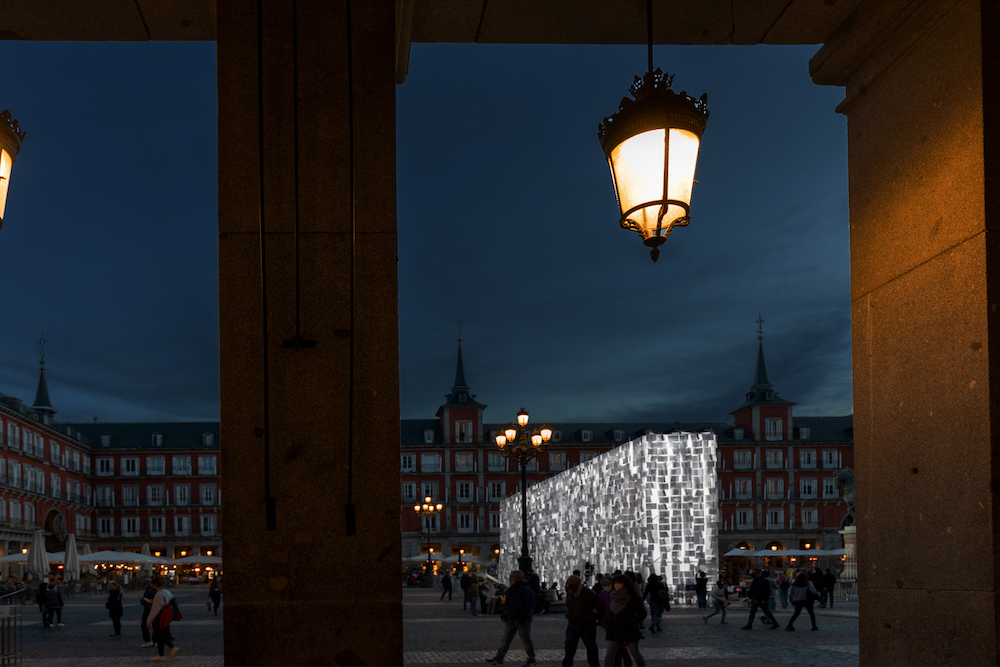
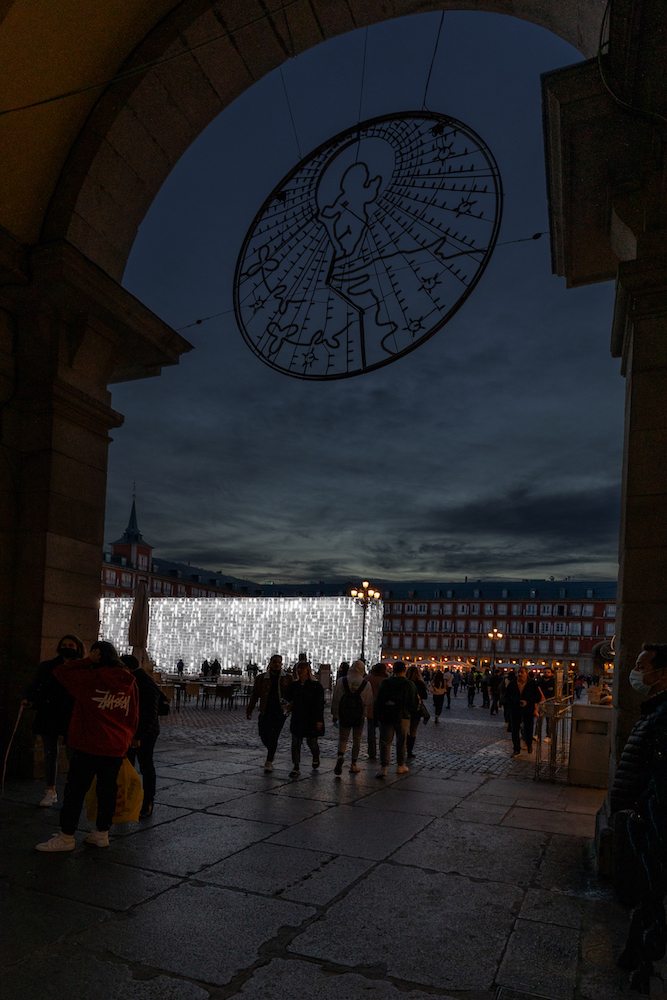
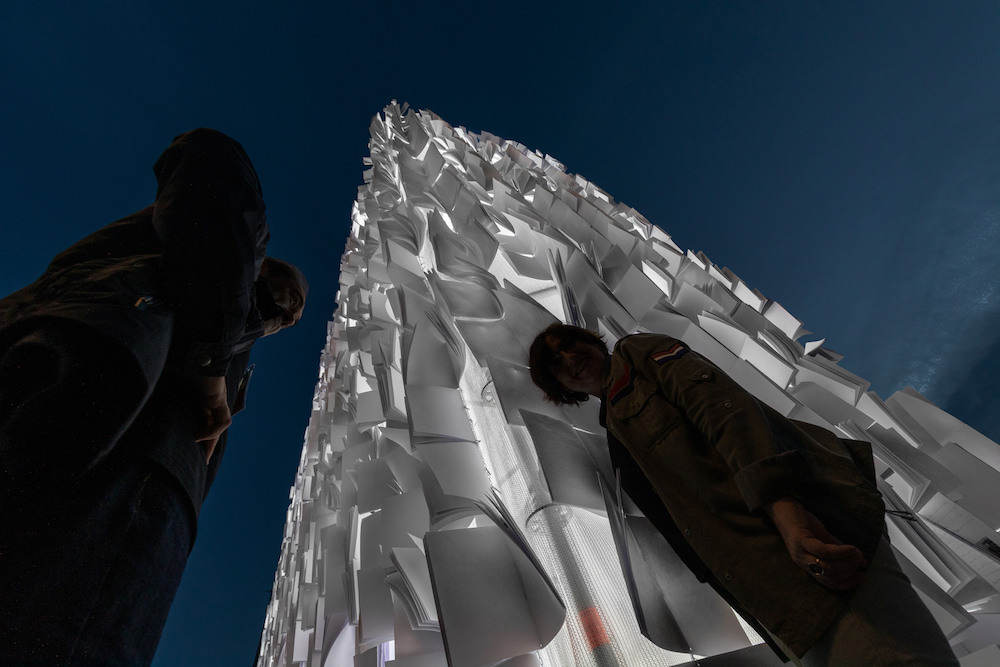
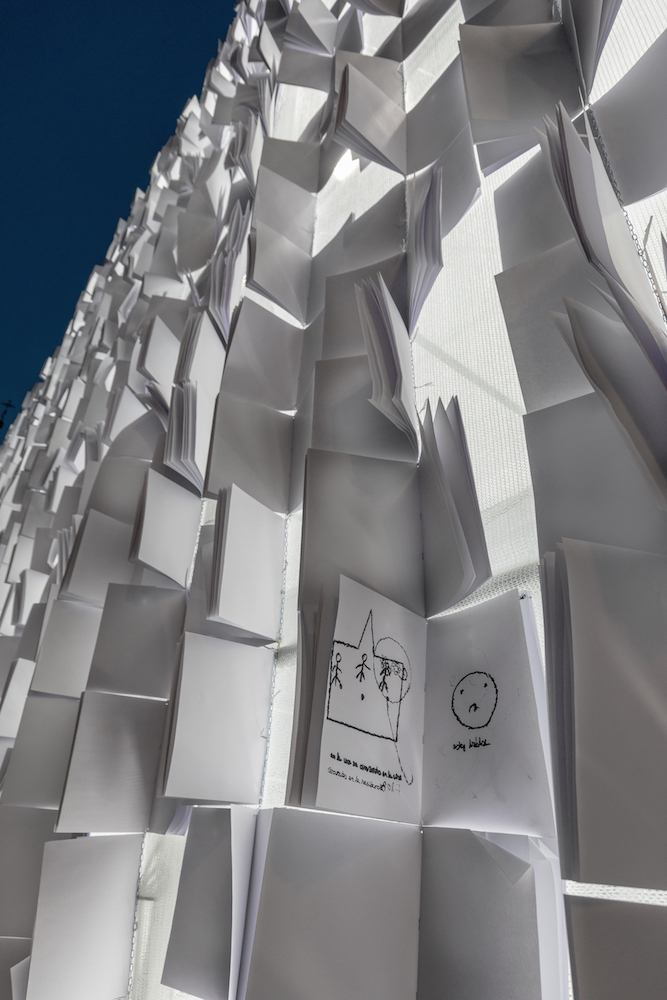
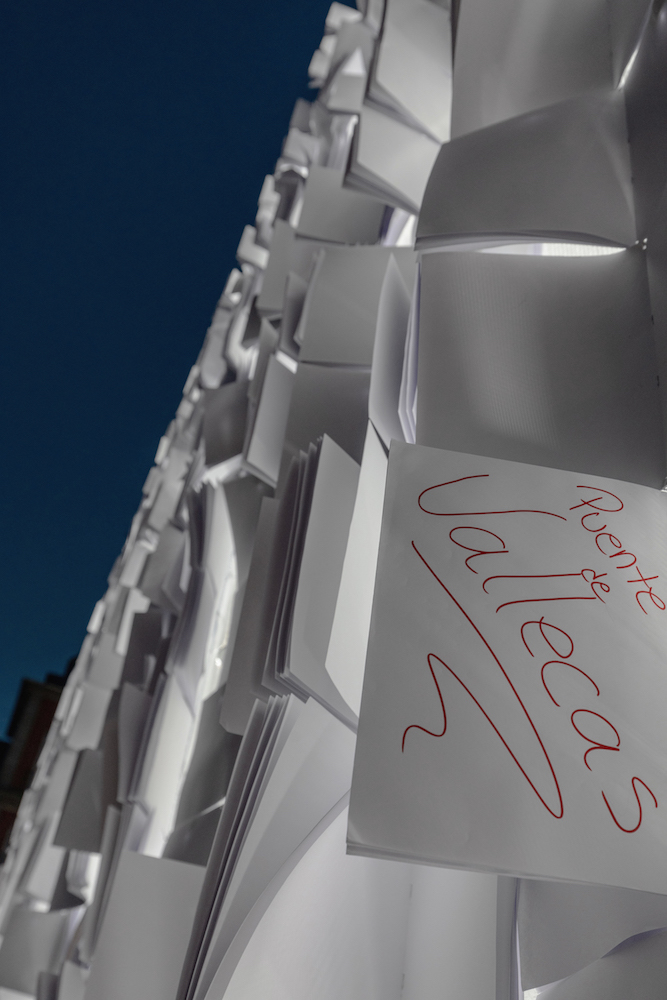
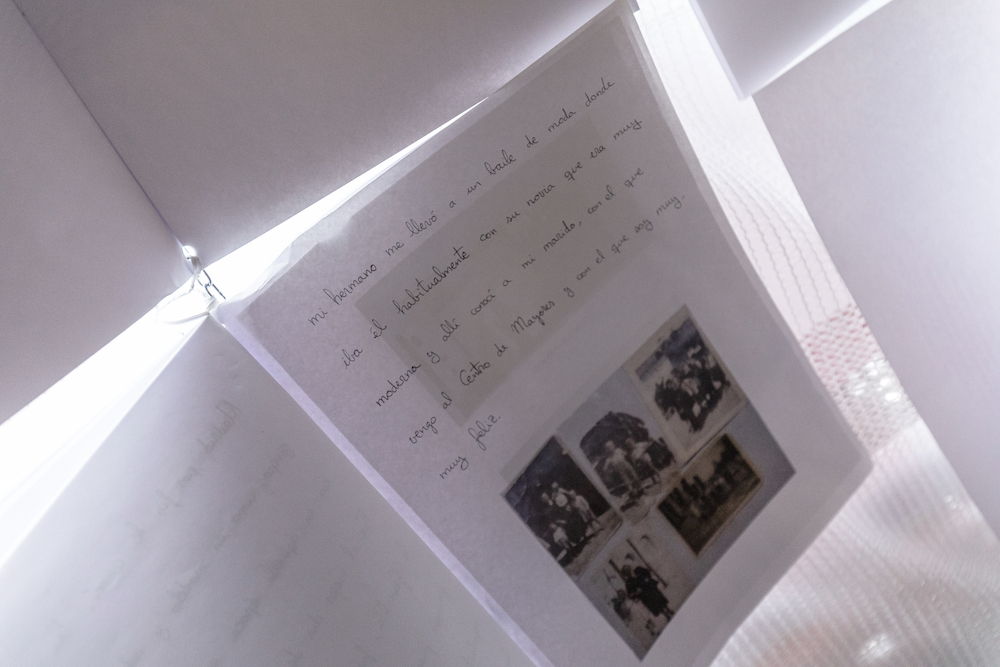
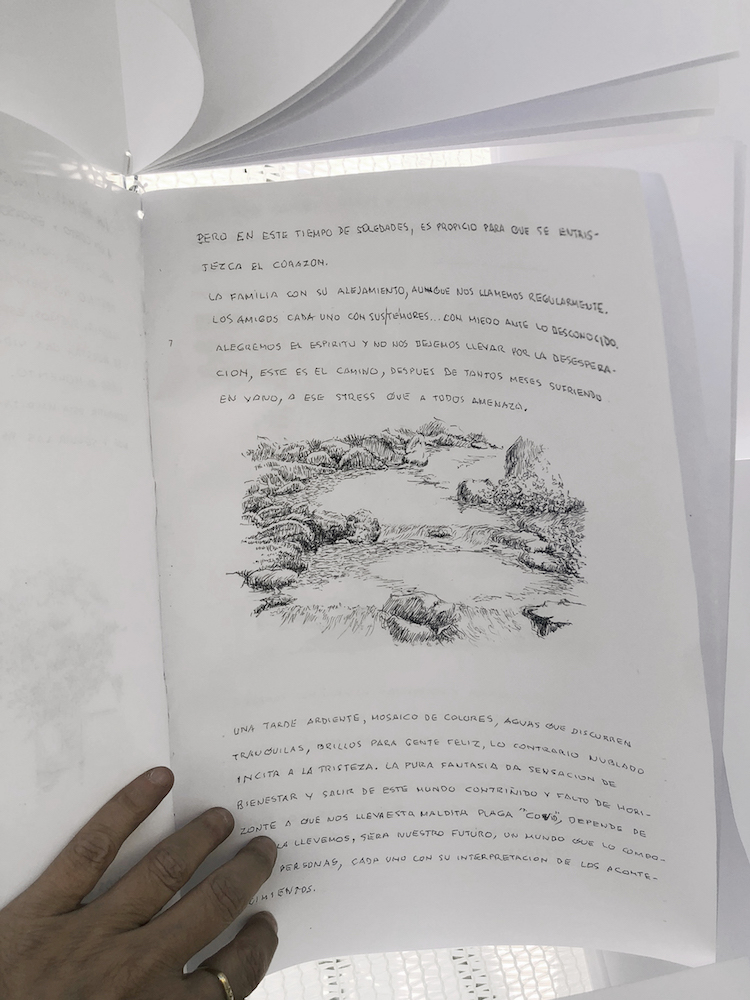
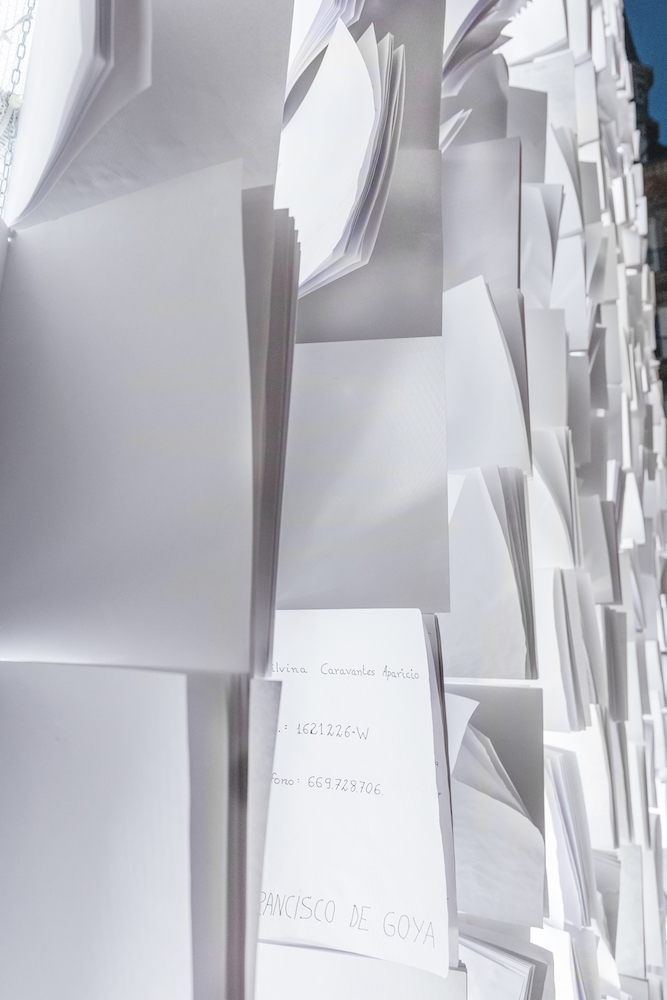
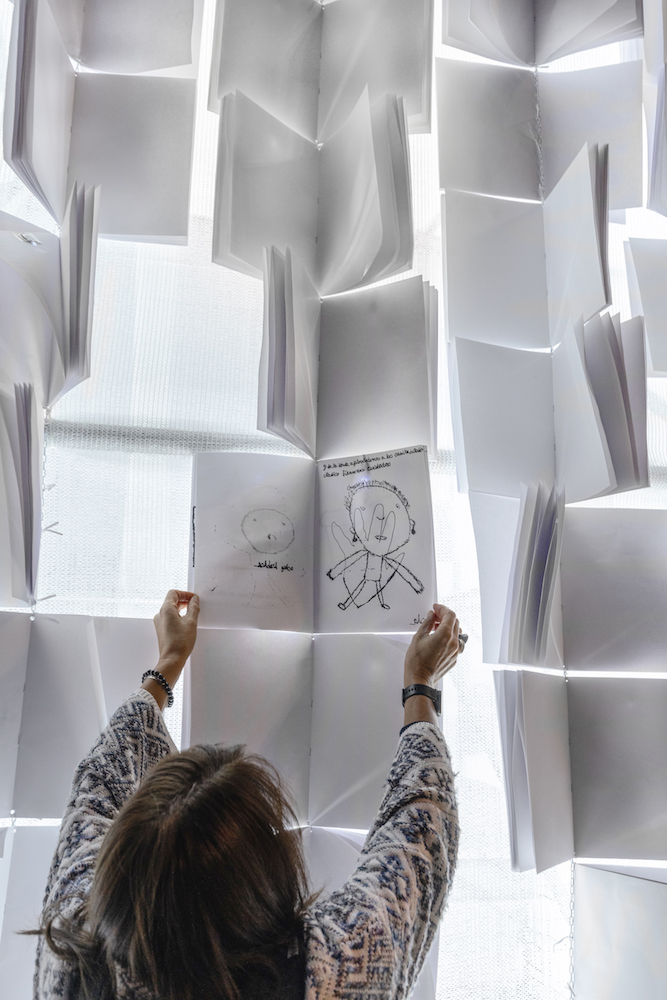
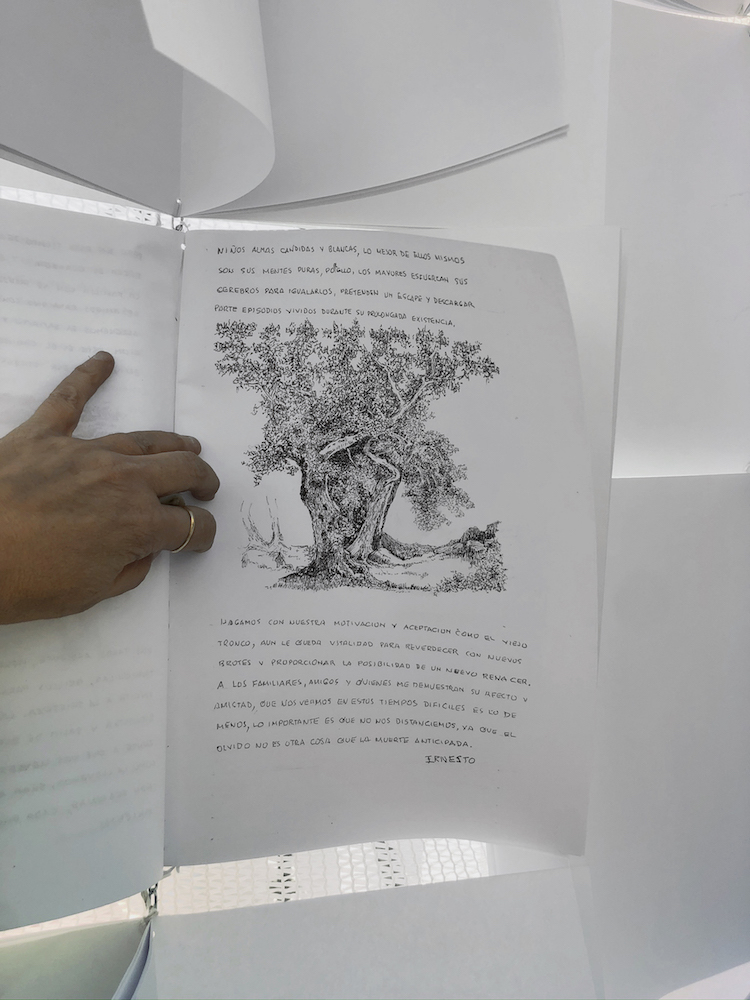
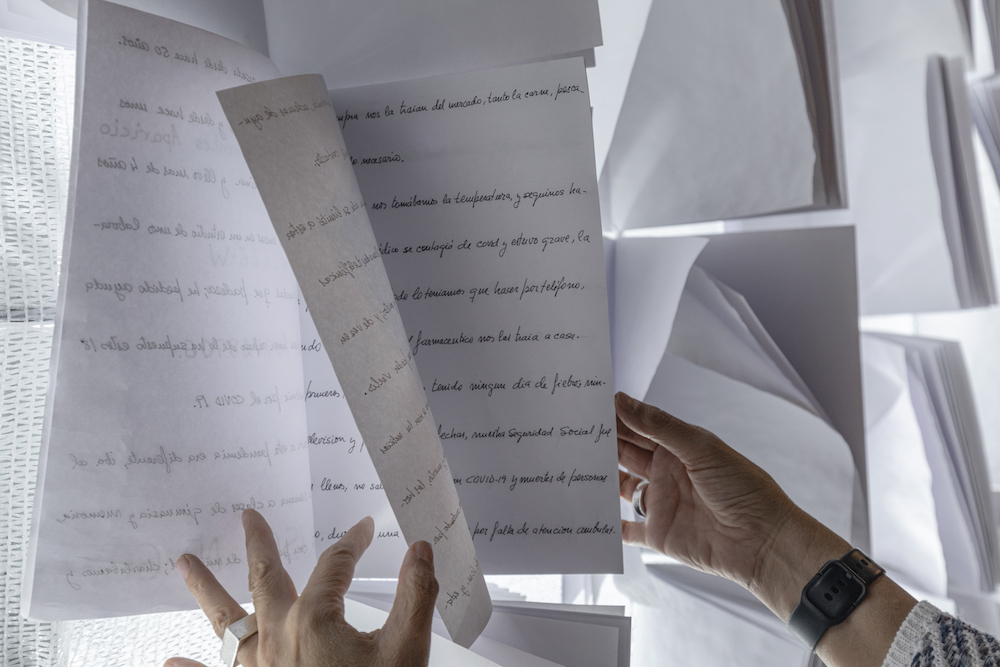
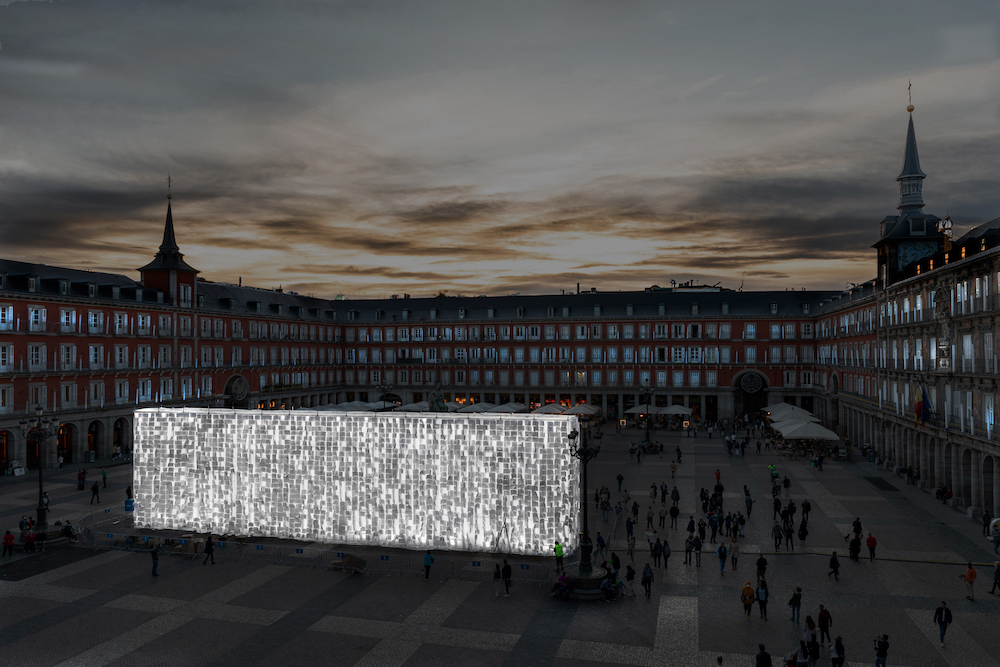
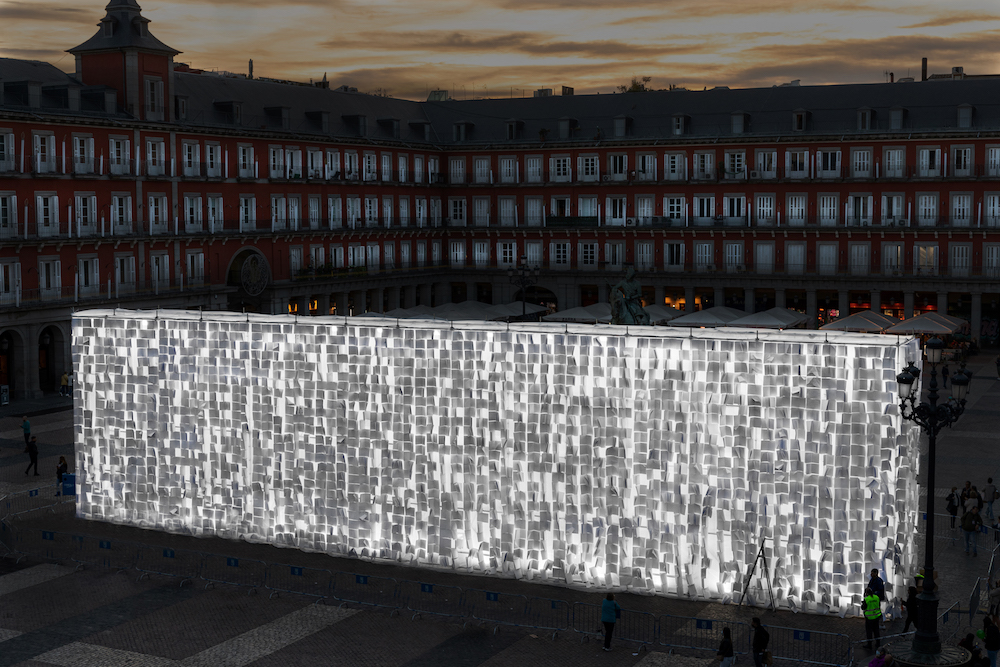
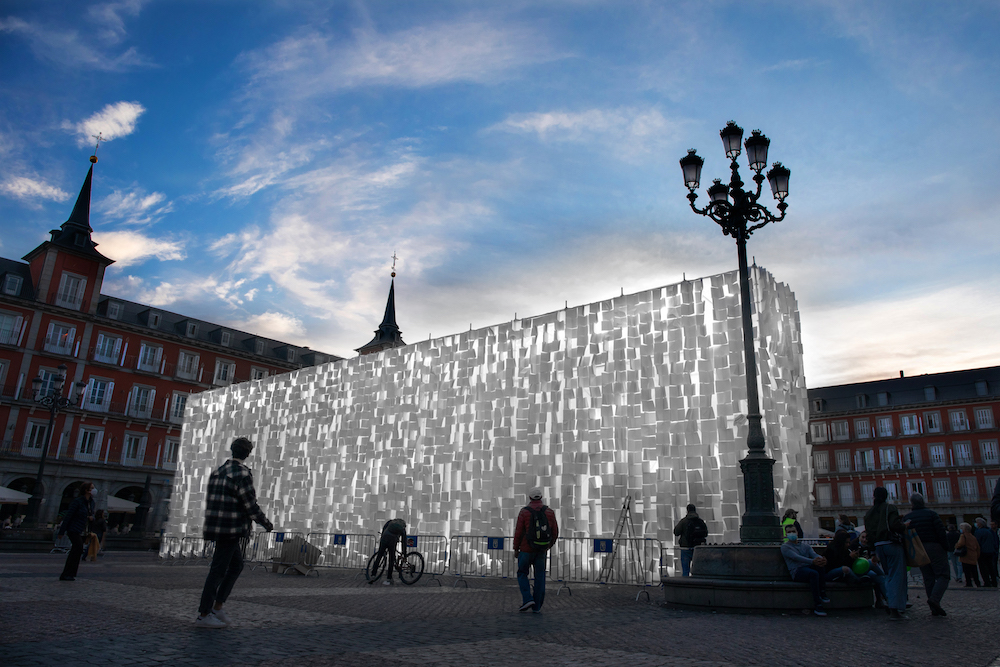
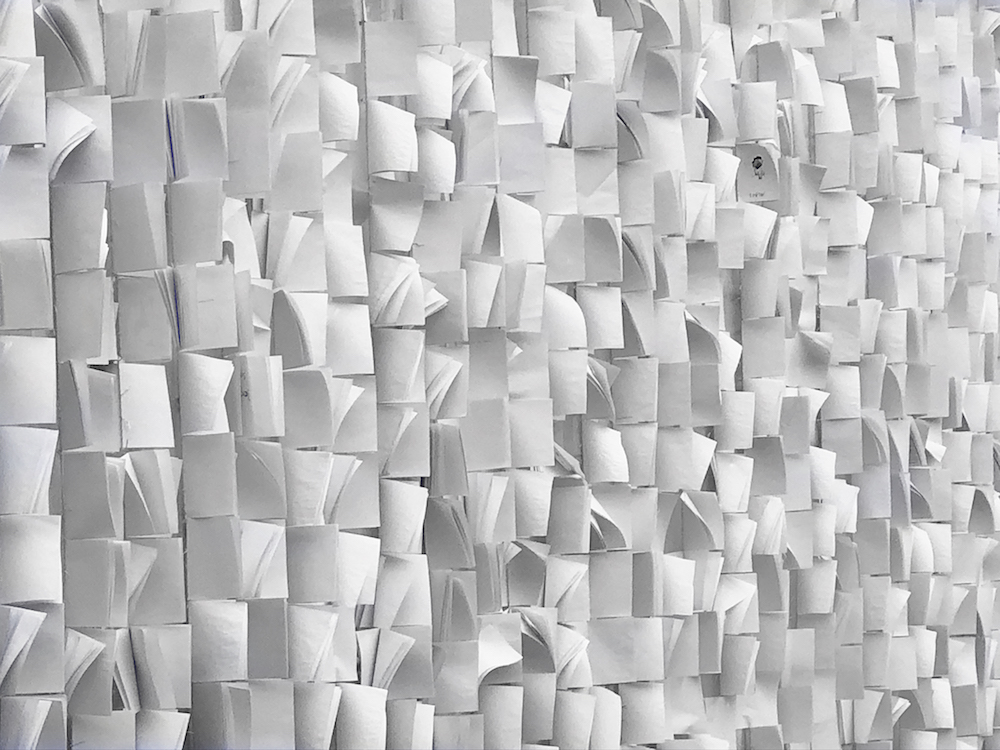
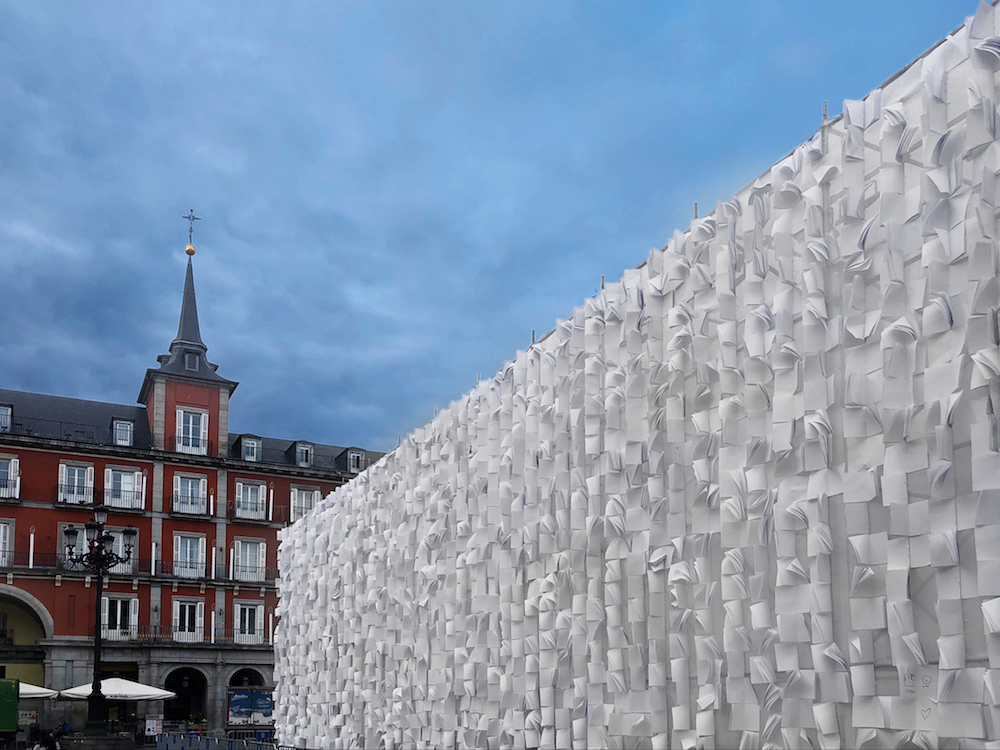
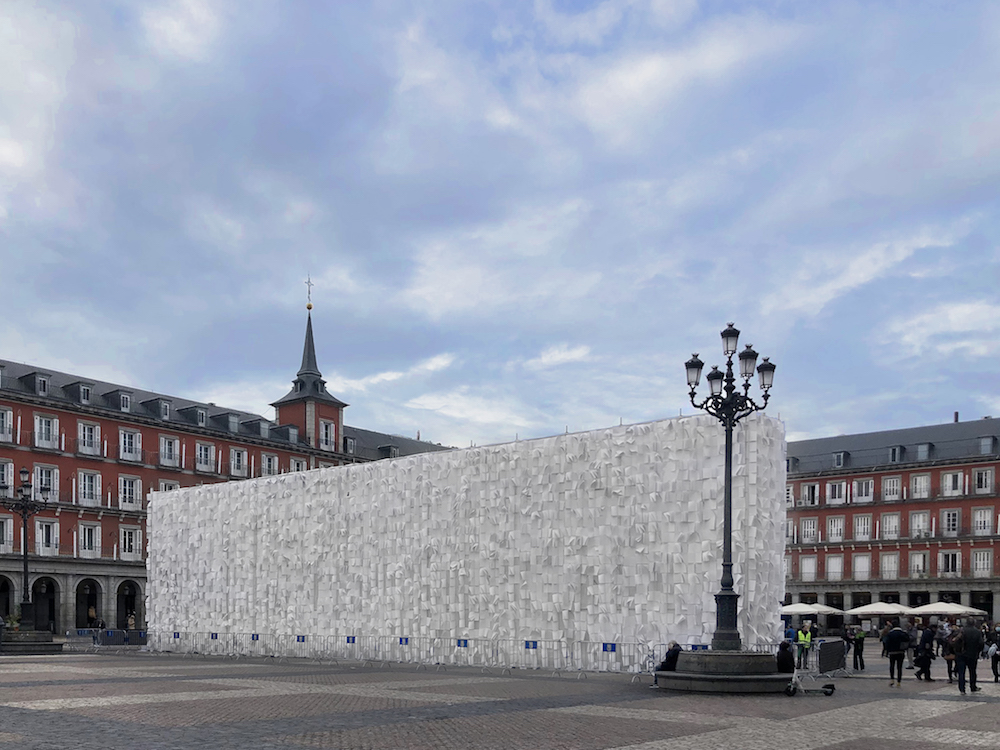
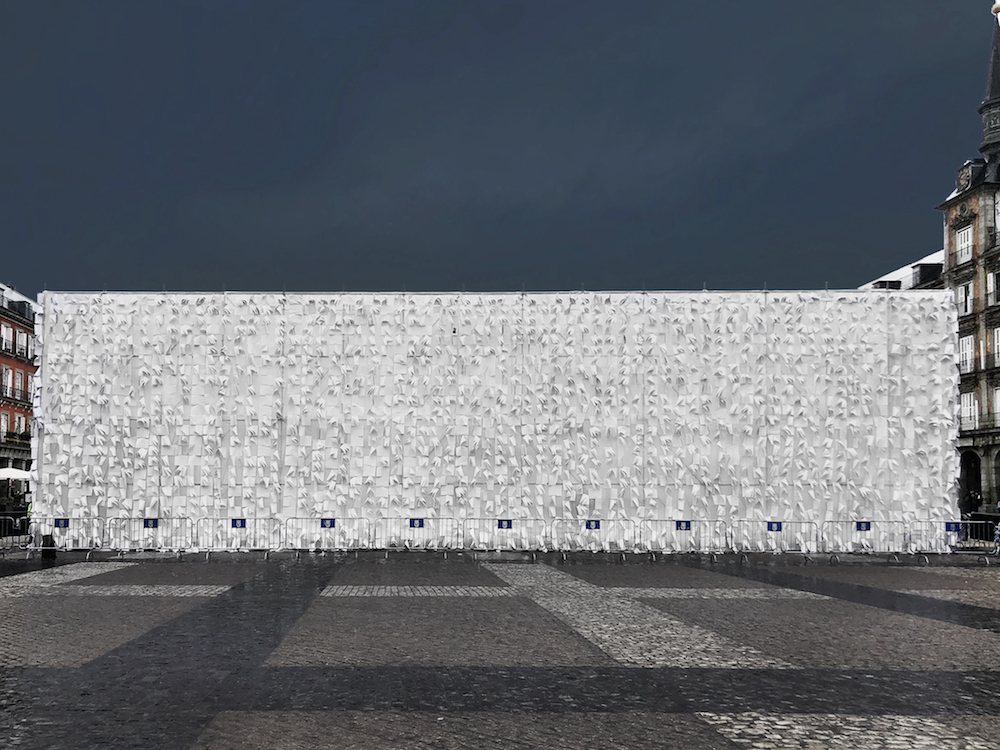
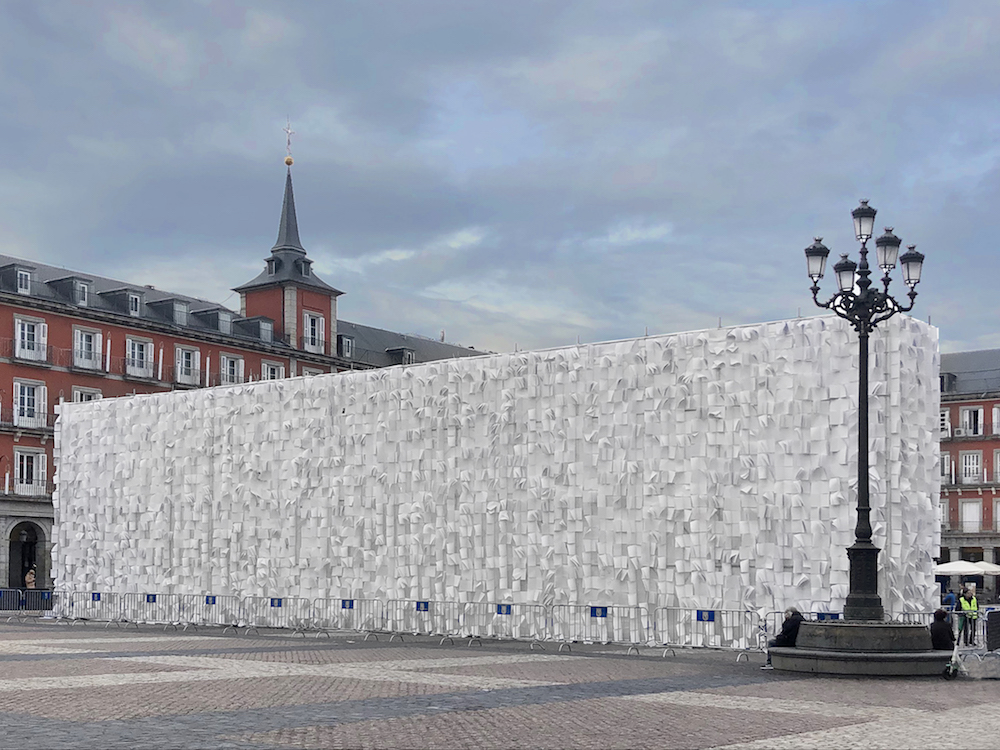
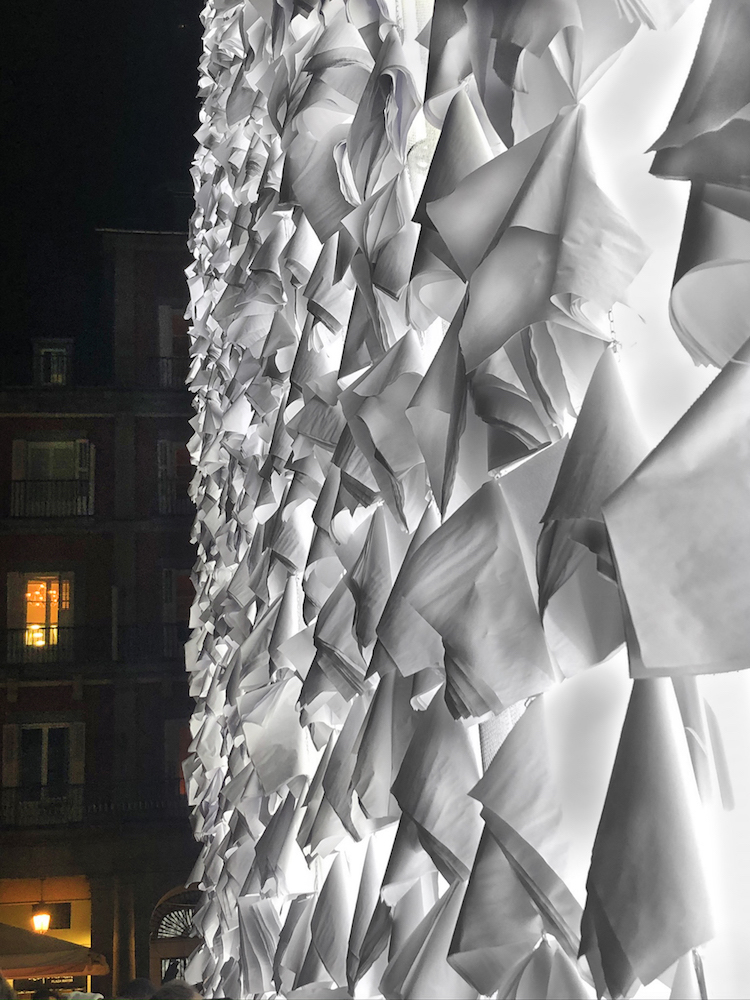
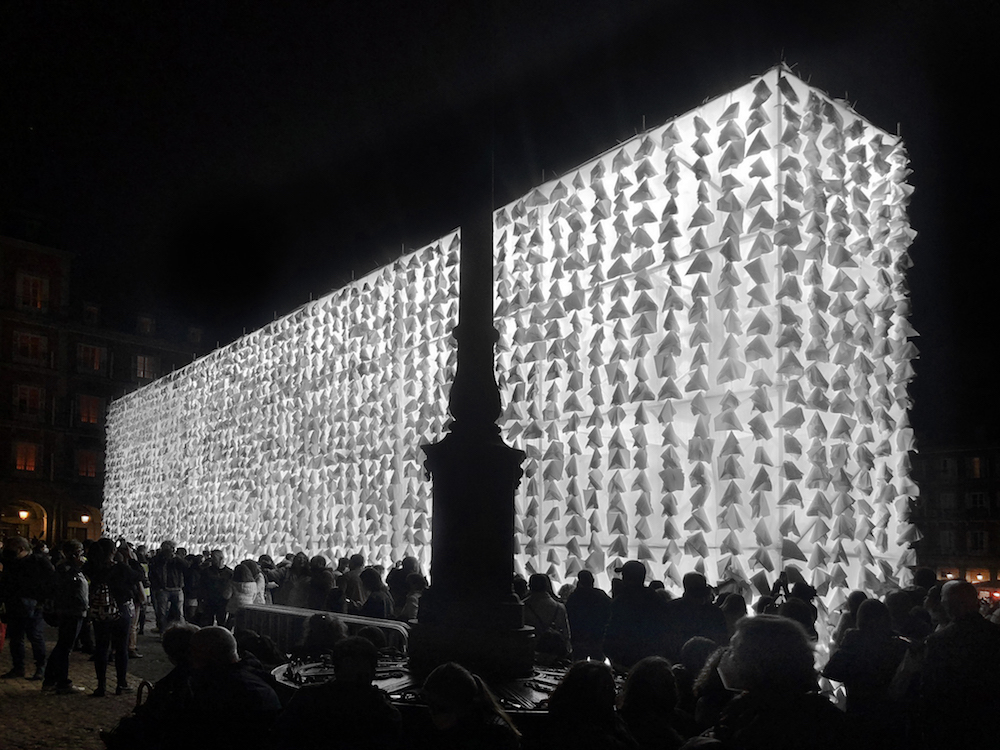
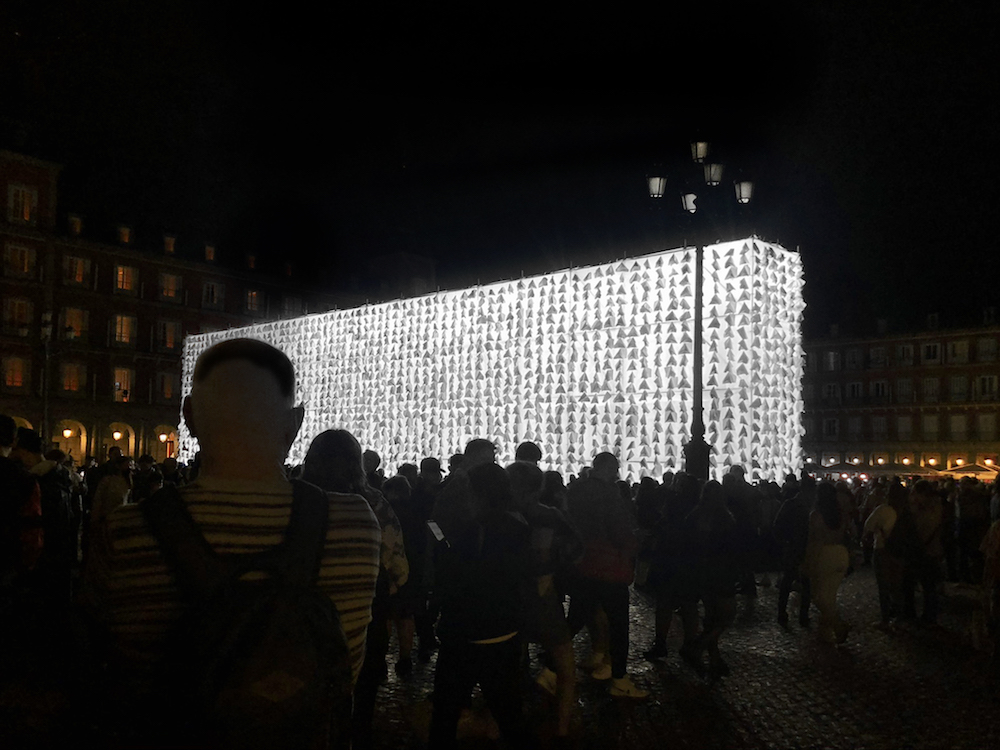
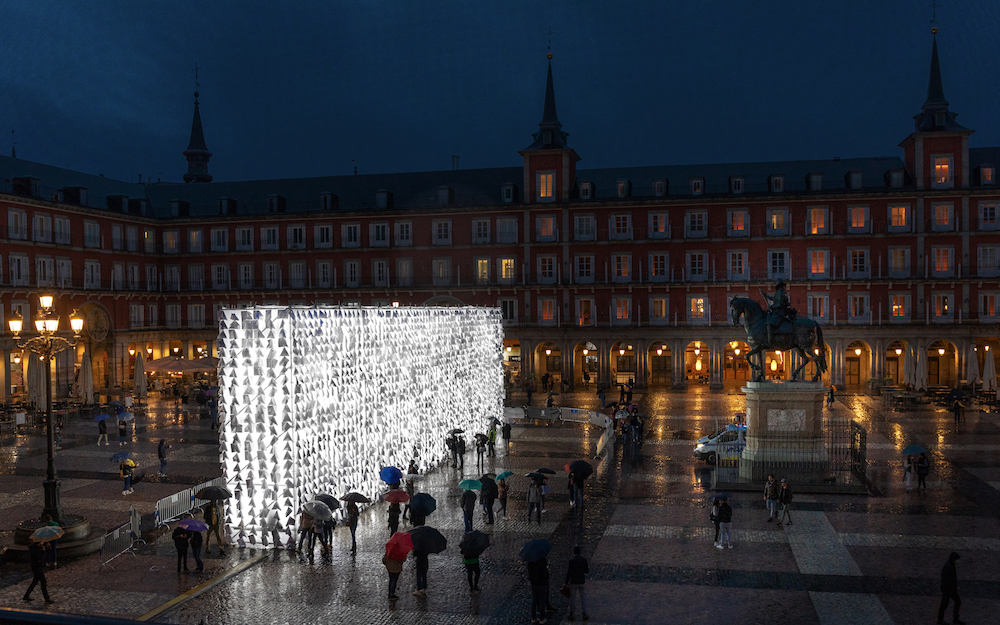
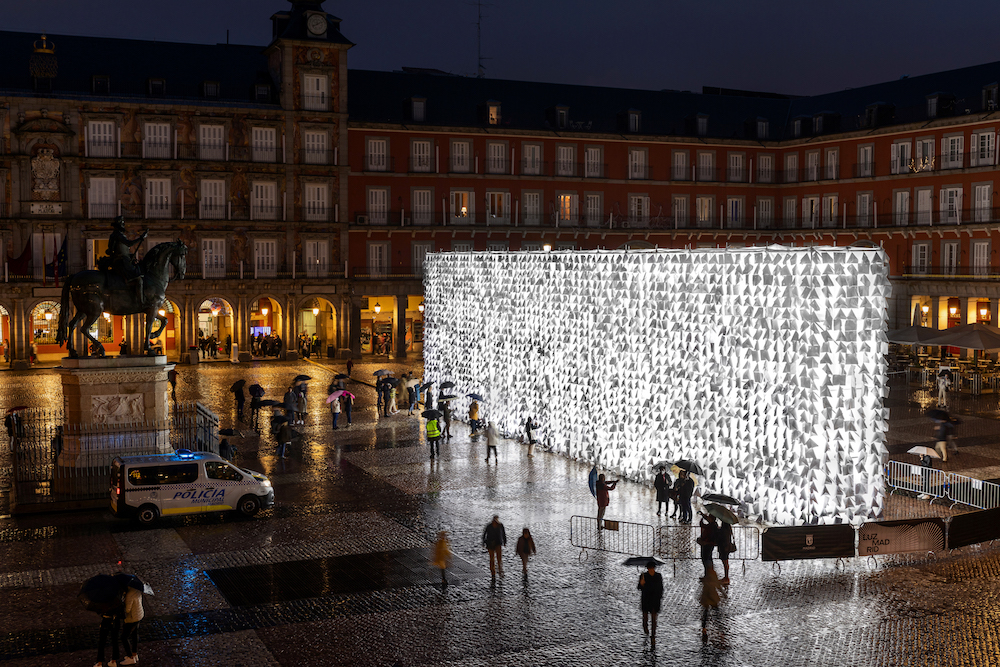
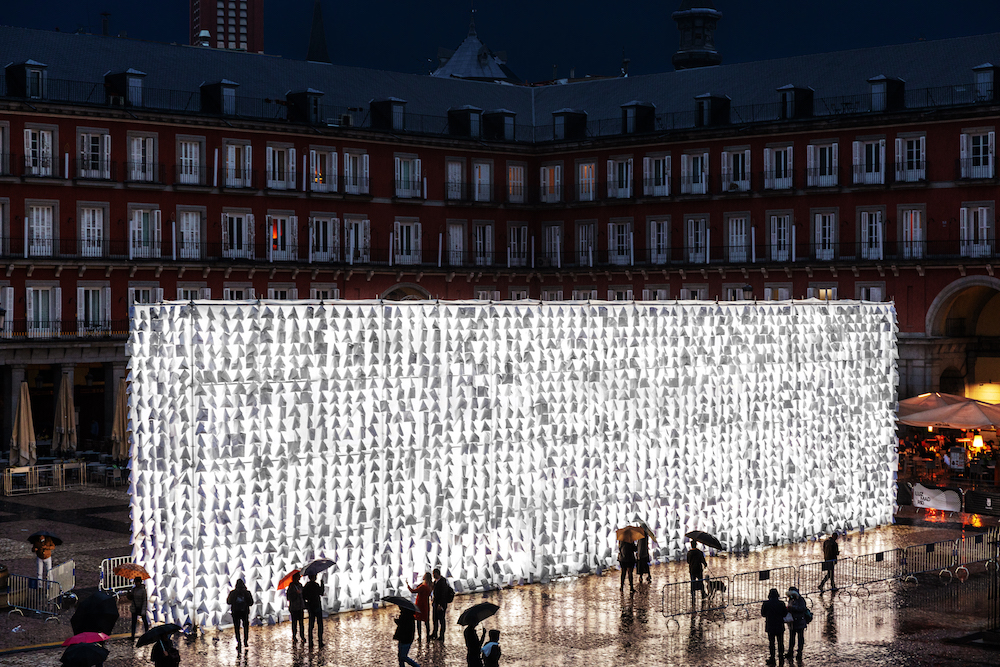
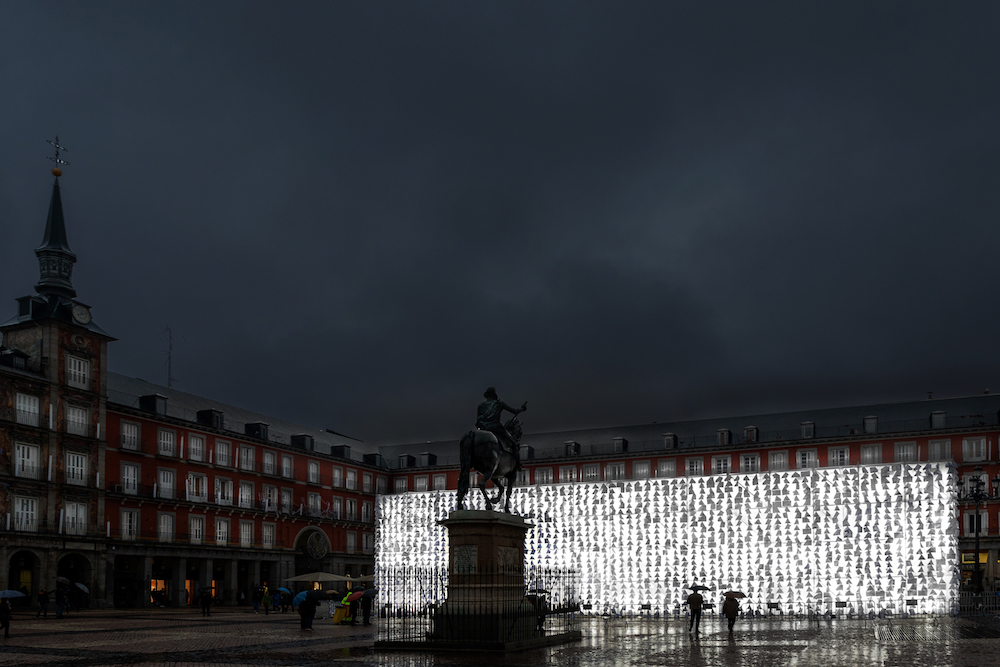
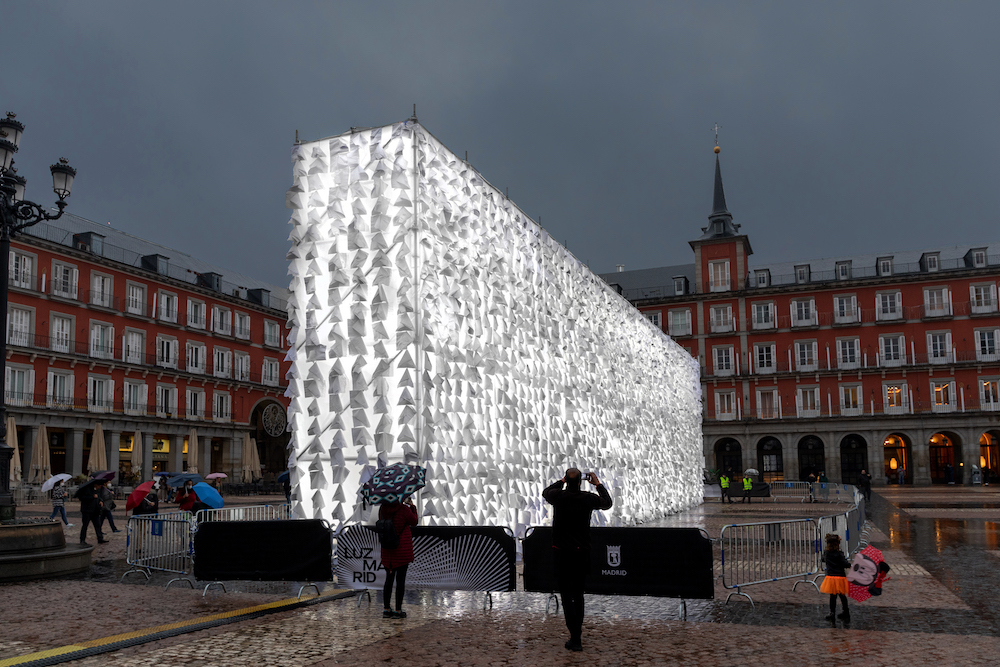
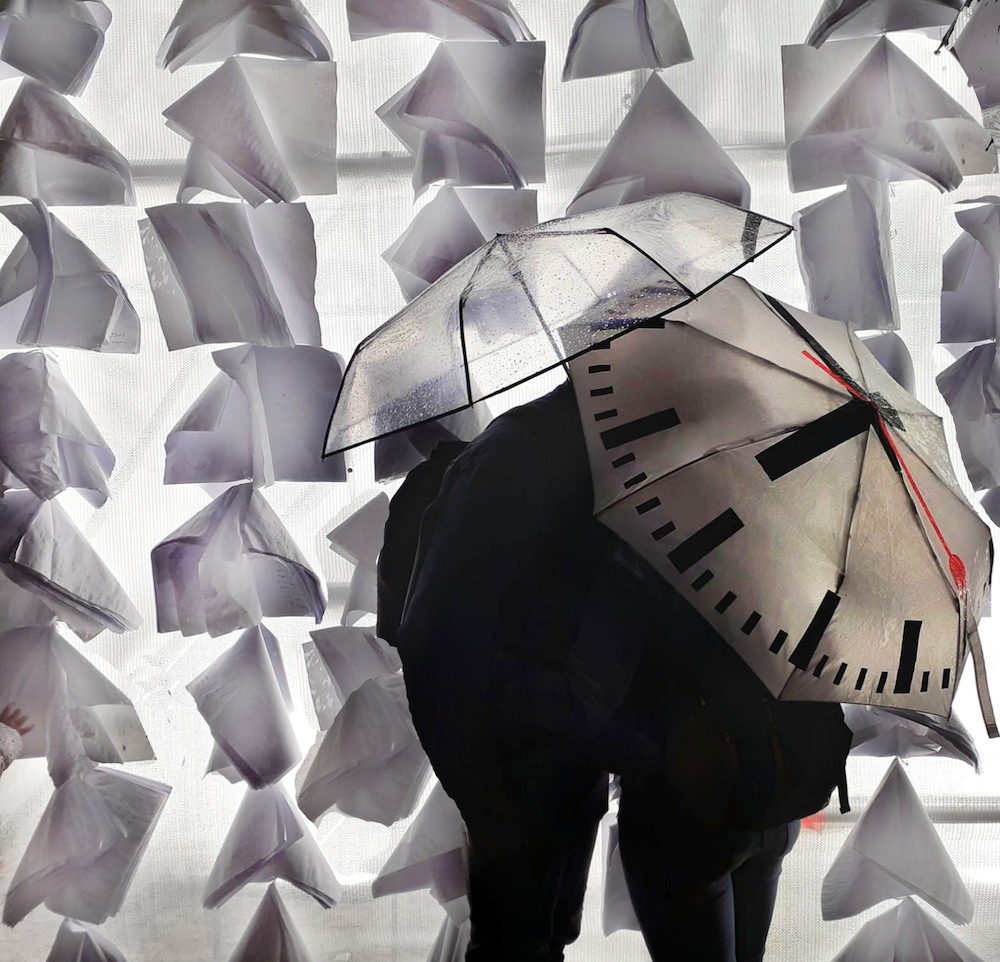
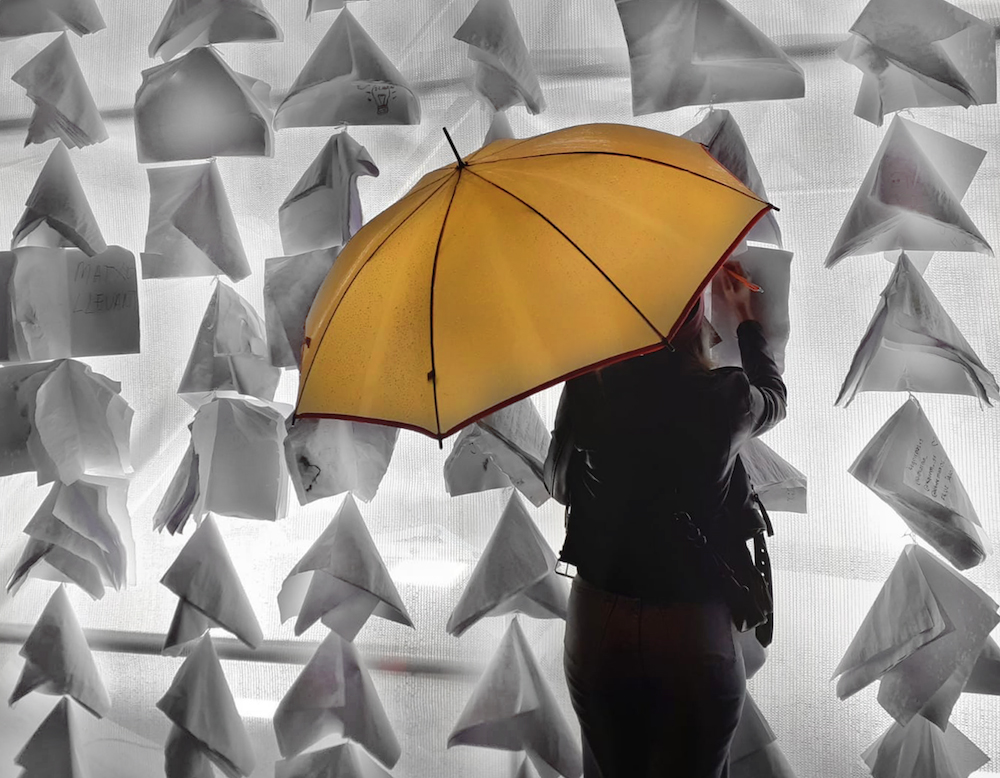
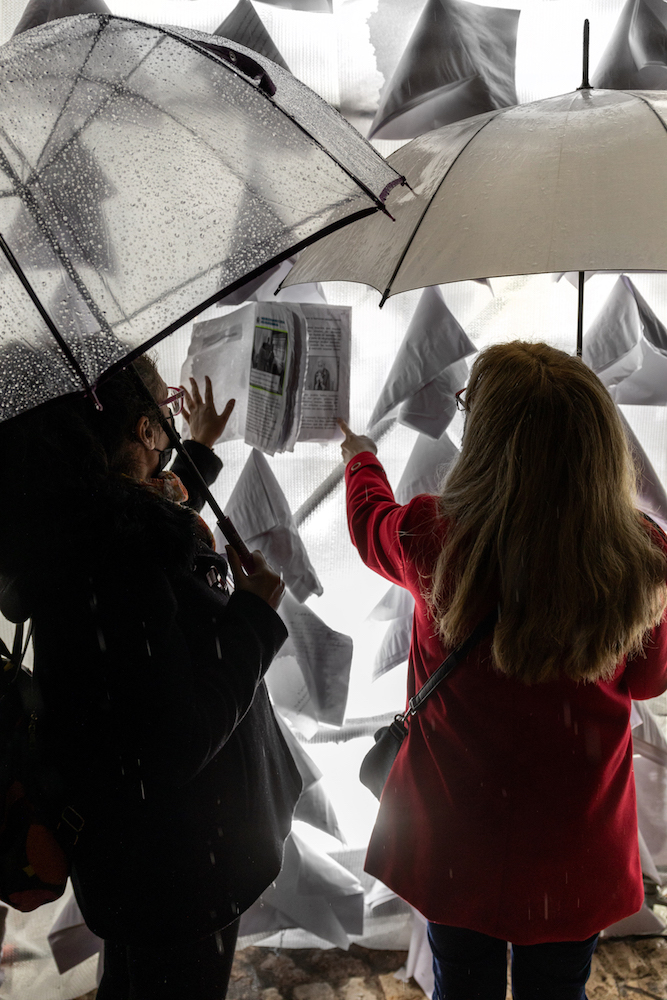
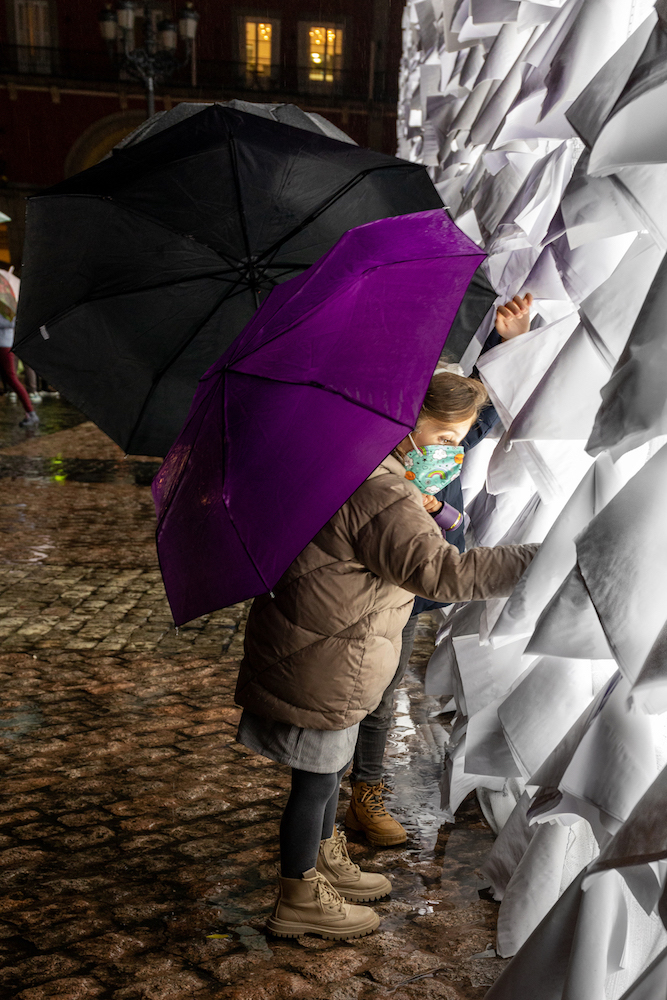
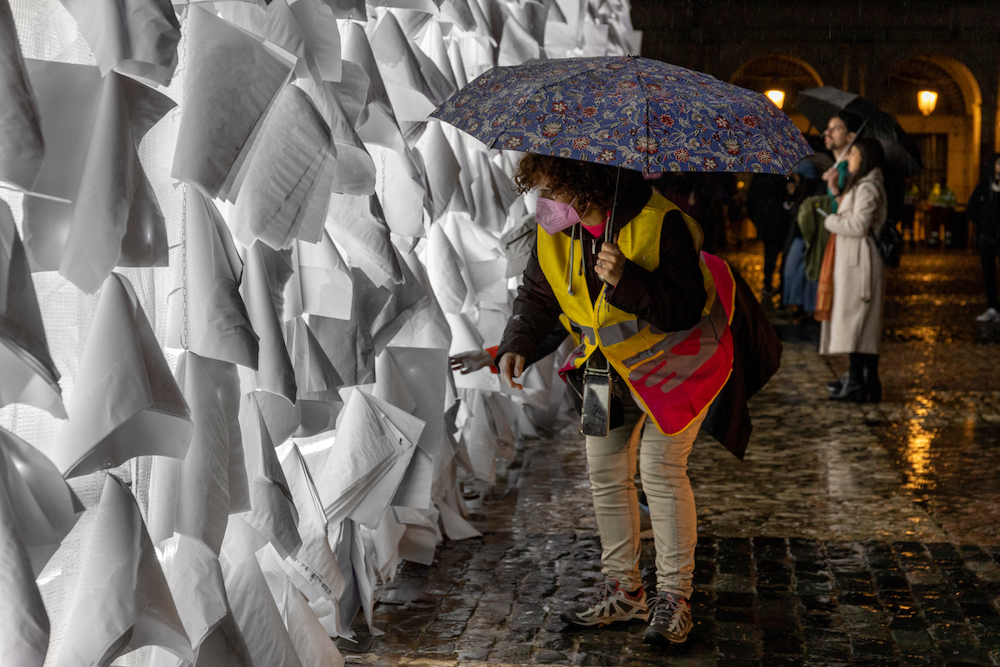
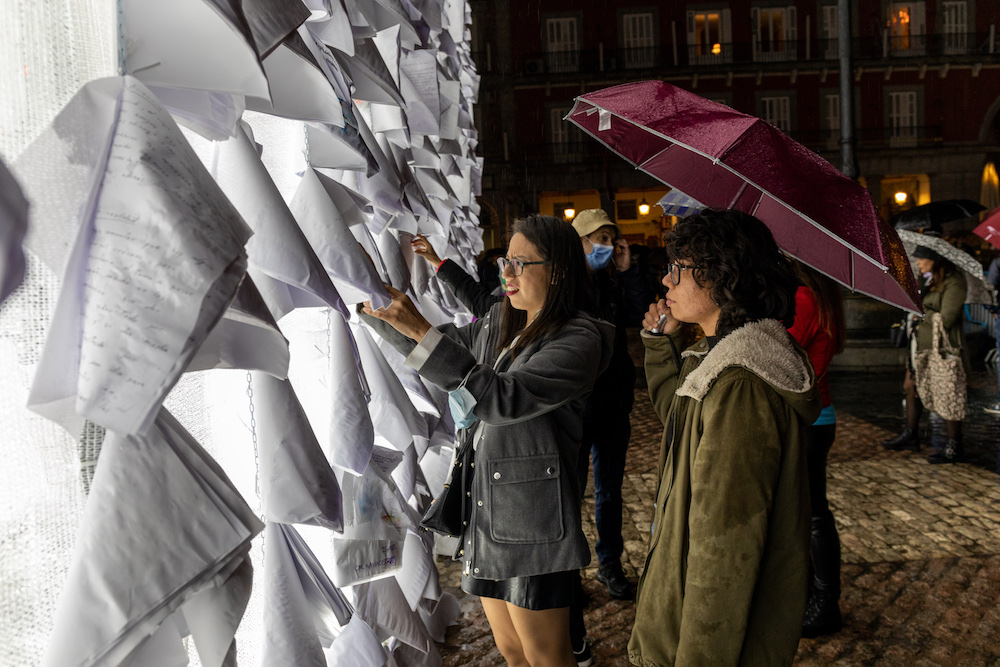
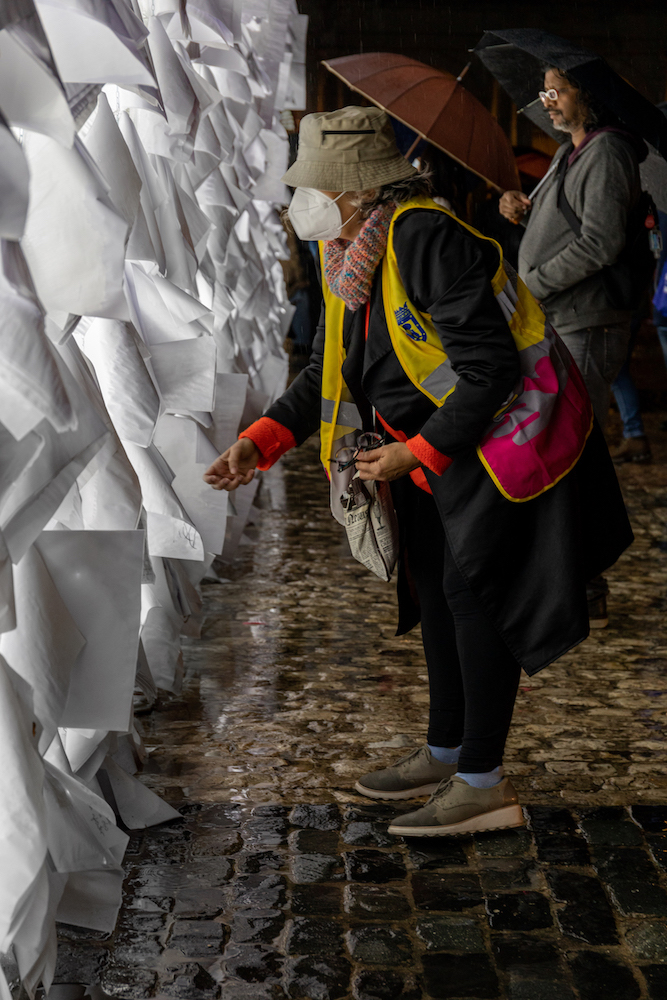
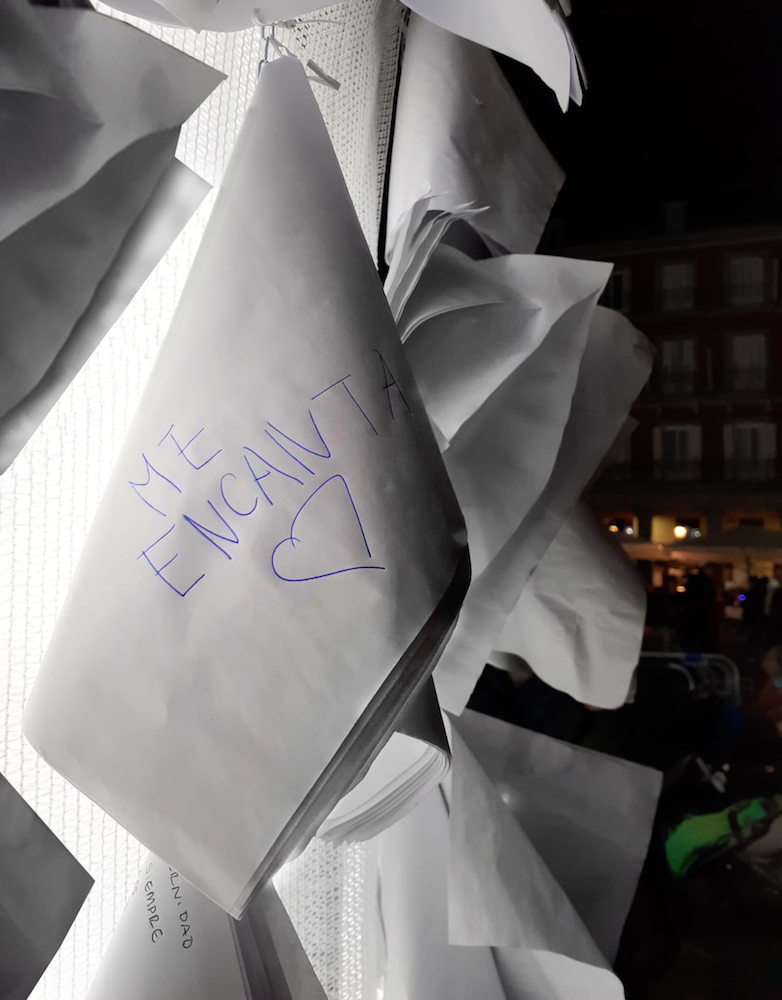
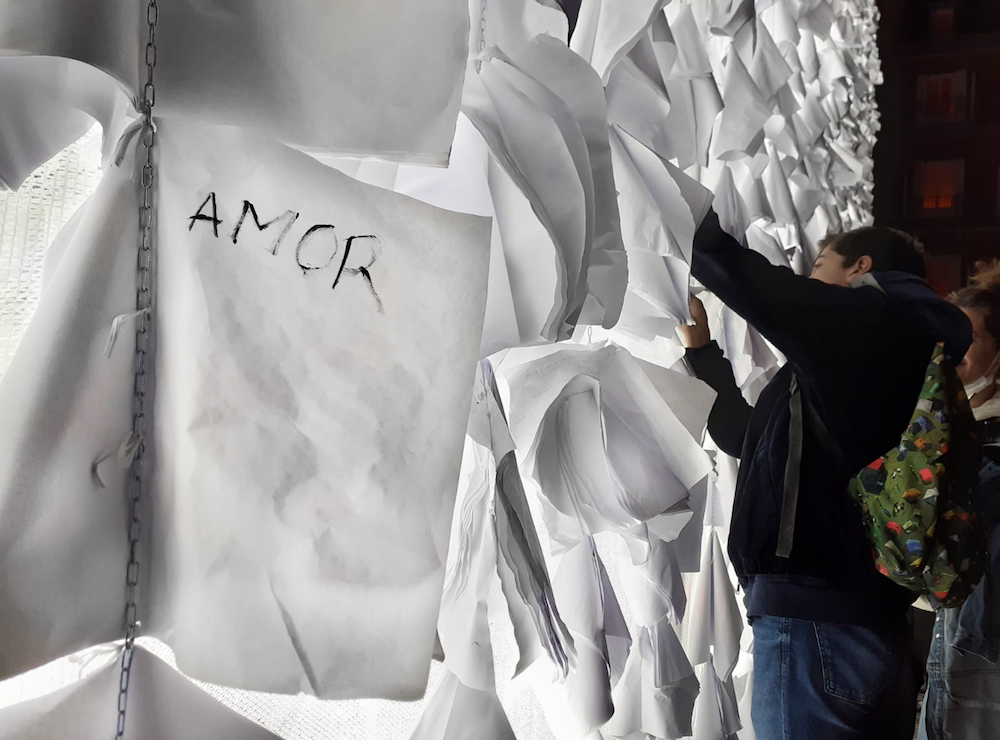
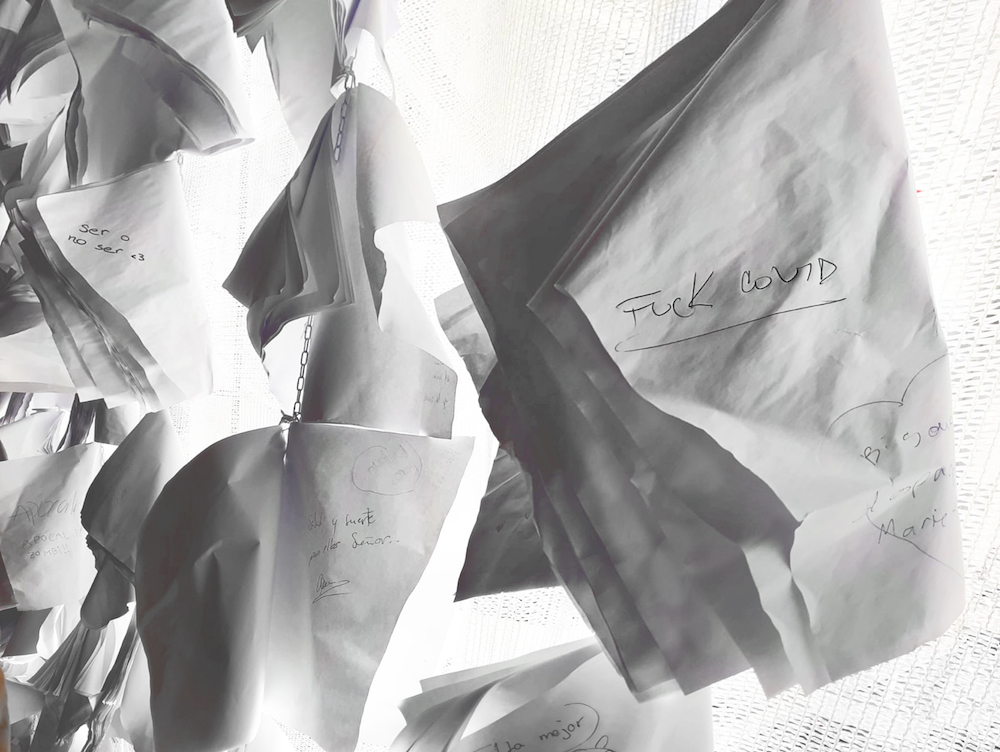
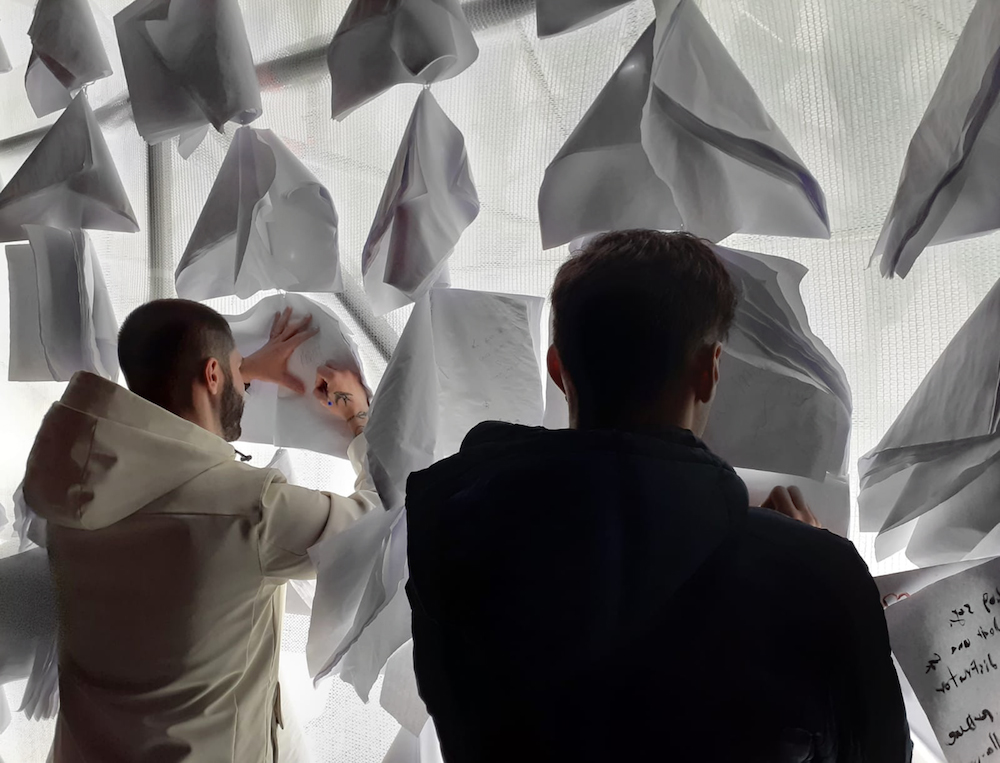
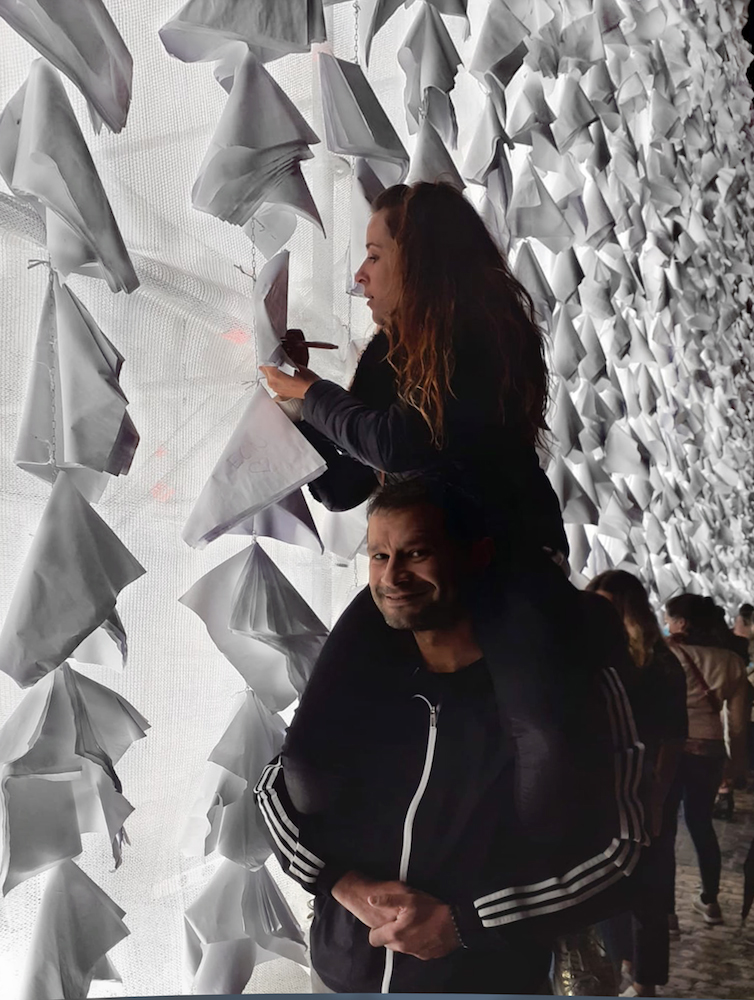
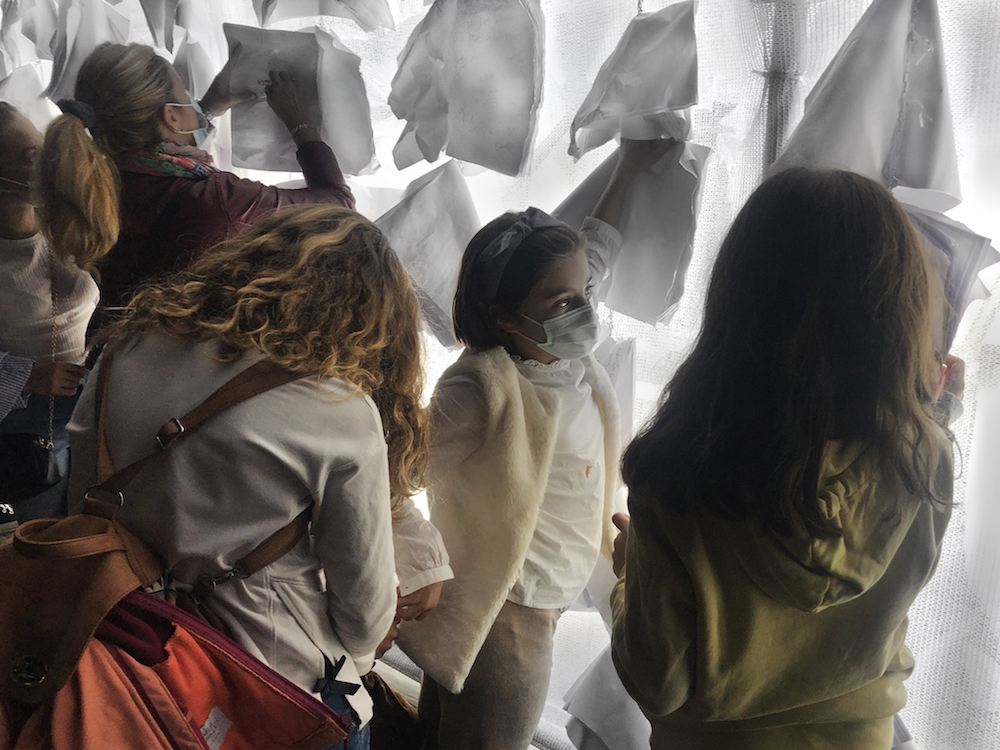
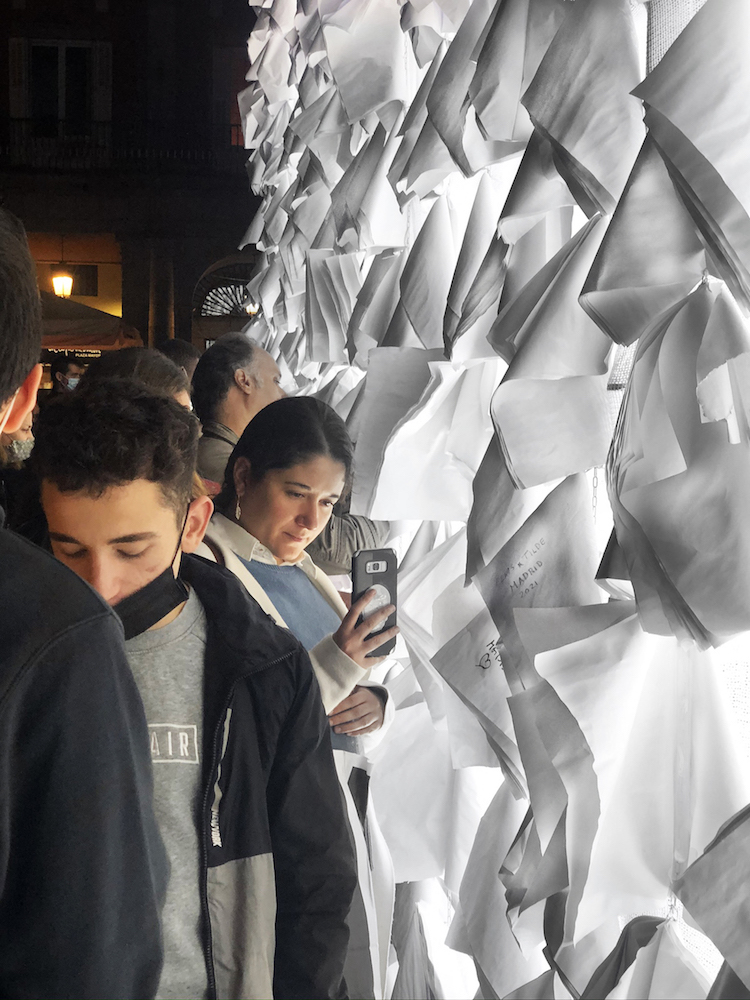
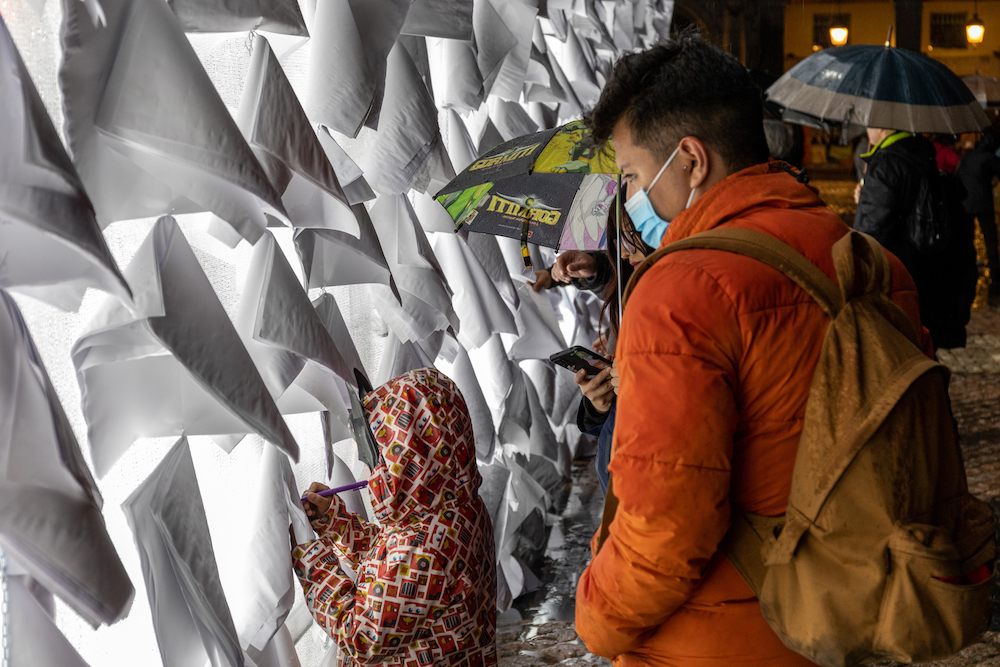
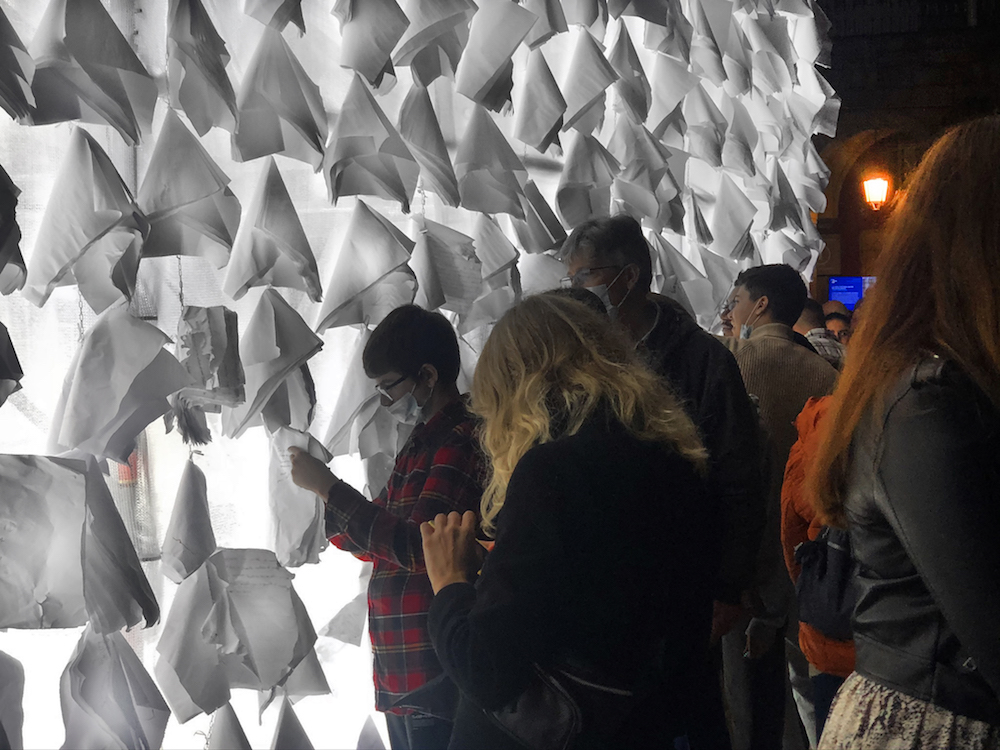
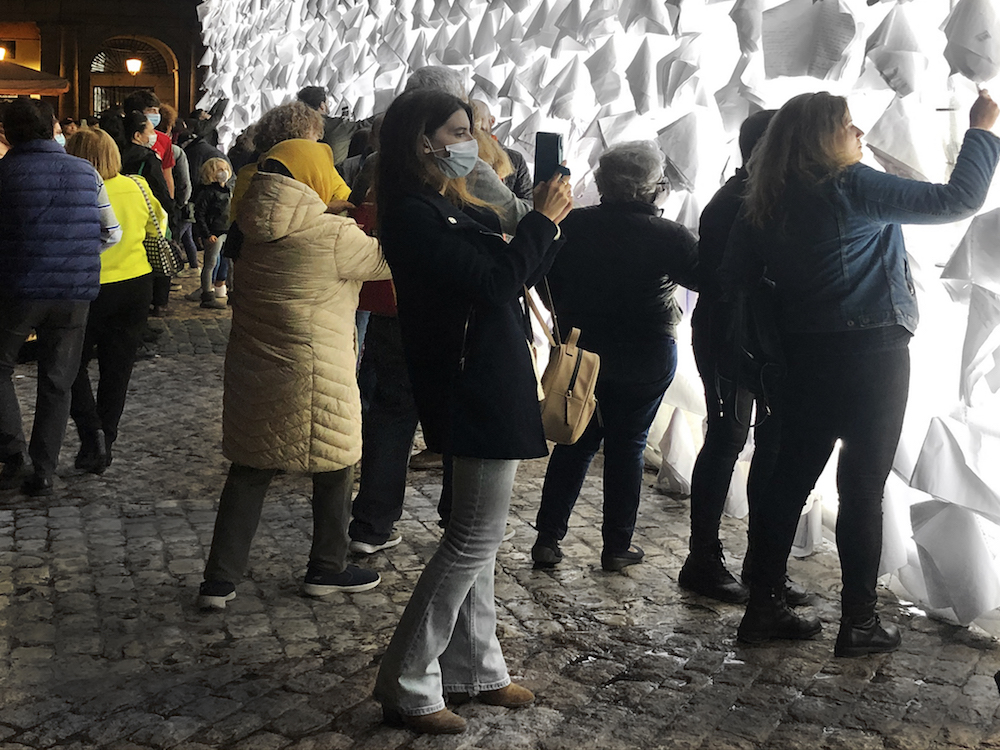
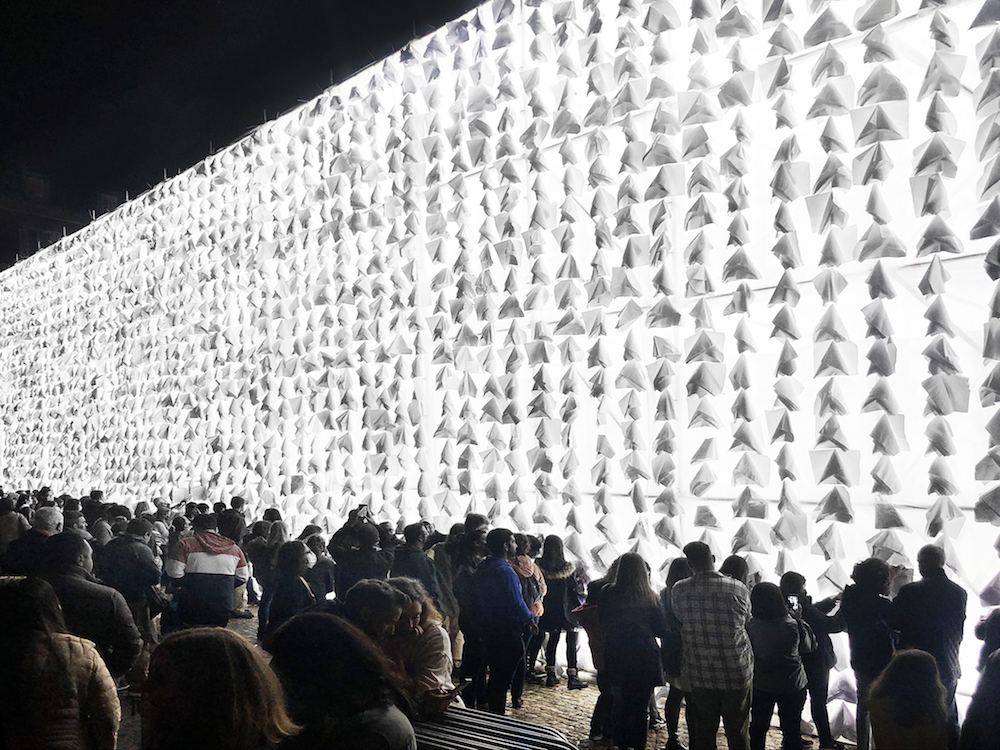
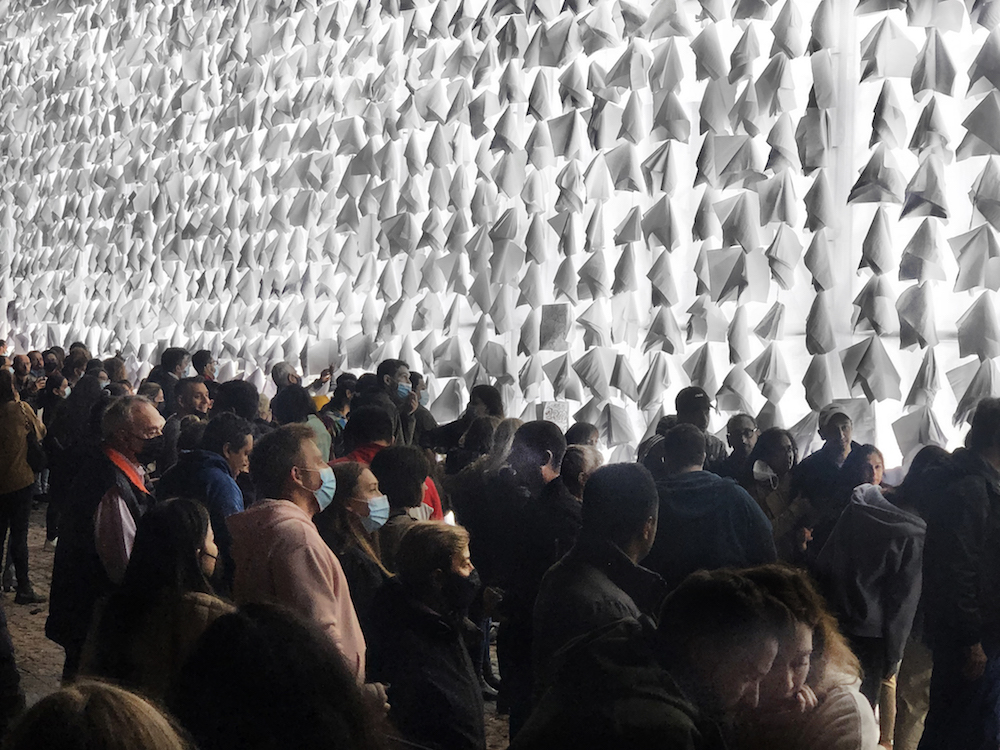
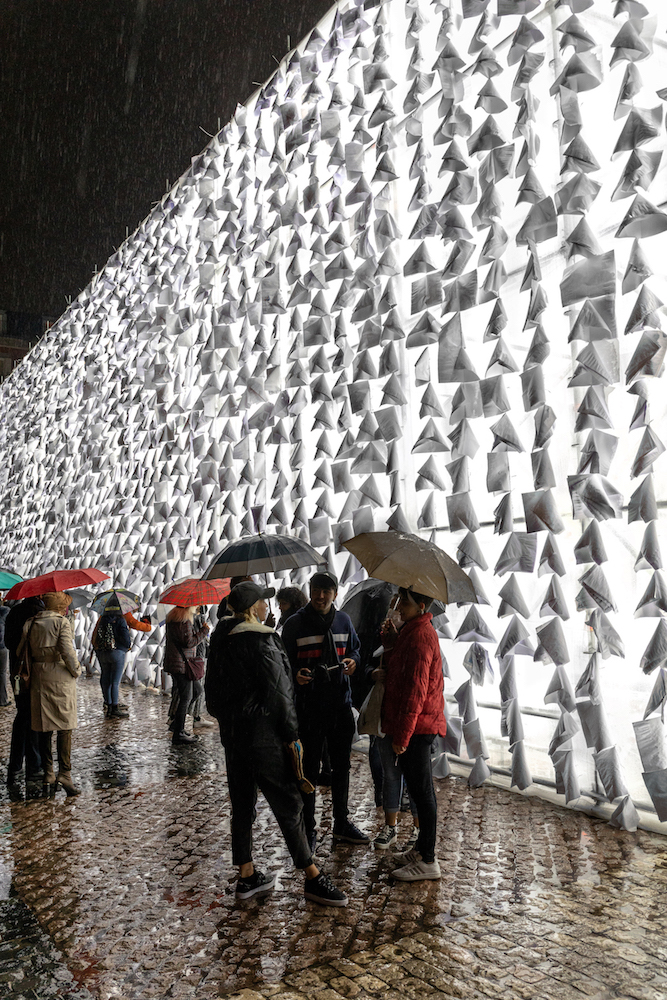
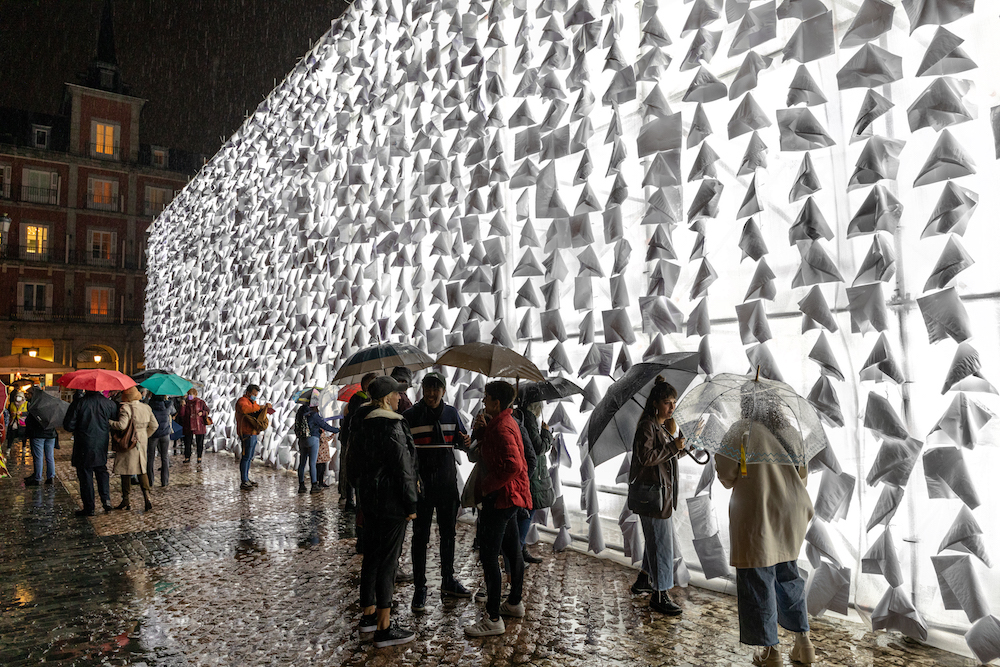
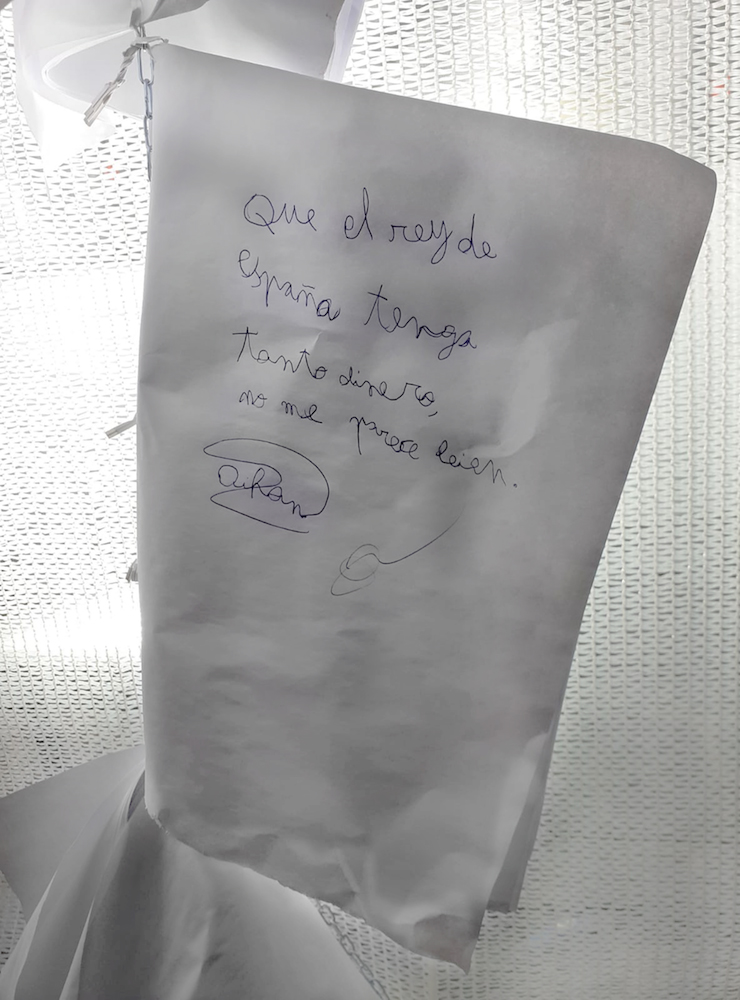
.
.
.
Life Lingers On Blank Pages is a project for LuzMadrid, Madrid’s International Festival of Light.
For the festival’s first edition – which took place last October – and after two years of a pandemic-related standstill, we have produced a large poetic piece made of light and casual sound. A great wall covered with countless notebooks with blank pages which took over the space of Plaza Mayor imposing its overwhelming simplicity on the Baroque architecture around it.
We wanted to create a gigantic white surface for freedom of speech, a collage of anonymous intimate interventions stirred by the wind which offered viewers a myriad of random compositions stemming from collective contributions.
An essential part of this piece was the sound made by the moving pages which was to become a unique constant voice made up of each and every idea and thought expressed upon the moving lighted paper. We relied on the drafts that normally blow through the Plaza Mayor to achieve the free movement of the pages.
In order to shape this Wailing Wall of sorts – built by us in one of the most emblematic parts of Madrid – we put up a giant wall with a scaffold structure measuring 30 x 10 m high and 1 m deep. We covered it with more than 4,000 notebooks made with recycled paper which we arranged meticulously so as to achieve this continuous humongous surface with many intervention layers.
Prior to the installation, over 2,000 notebooks were distributed among Municipal Senior Centers in the city so that these senior citizens could express on them their hopes, fears and reflections during the lockdown. They told us their stories with uncanny detail and others drew as well, in some cases showing great talent. With their letters, poems, accounts, words, images and scribbles, a large panel of lighted memory was erected.
Writing sessions were organized which turned into a time of reunion. Therapists, instructors, technicians and directors were also present to help materialize their accounts. People with disabilities and their caregivers participated as well.
Once the notebooks were installed on the wall, visitors were invited to freely express themselves on the piece, thus completing the blank layers that were yet to be intervened.
We did not foresee the rain which stayed with us during the 3 days our piece was installed. It rained as it had not rain in Madrid in a long time. So, when we opened our piece to the public, the pages had acquired a more sculptural compact appearance so that the wind could not do its job and the sound of the pages could not be heard.
Despite these setbacks, paper beat the rain so visitors could leave their impressions on the piece which was eventually filled to completion.
In order to carry out this complex work, we relied on many people who have not only contributed with their knowledge but also with a great deal of goodwill and creativity.
We want to thank Burna, who was able to put it up exactly as we conceived it. Many thanks to Tres Elefantas Producciones and Ciudadano Kien for including us in the program; to Madrid Destino and the Cultural Office of Madrid City Council for hiring us; to the engineers, lighting technicians, assemblers, security guards, and the forty Municipal Senior Centers belonging to the Department of Families of Madrid City Council which filled it with meaning, as well as the visitors that completed it.
Paloma, Federico, Susana, Fernando, María, Curro, Javier, Cris, Delia, Martina (both), Irene, Oscar… it has been a pleasure to collaborate with you all.
Most of the photos were taken by Manuel Villar, although we have borrowed some from Susana Sánchez and Eva Boj, and, for the first time, we are also showing some of our own.
Time of installation: and installation: 15 days.
Damages: none.
Exhibition time: 3 days.
—————————————-
«La vida continúa en hojas blancas» es un proyecto para LuzMadrid. Festival Internacional de Luz de Madrid.
Para la primera edición del festival, que tuvo lugar el pasado octubre y que ha sido uno de nuestros primeros trabajos después de casi 2 años de parón pandémico, hemos llevado a cabo una pieza de gran tamaño y carácter poético, hecha de luz y sonido casual. Un gran muro cubierto por miles de cuadernos de hojas blancas que invadía el espacio de la Plaza Mayor imponiéndose con su brutal sencillez a la arquitectura barroca del entorno.
Quisimos crear una gigantesca superficie blanca de libre expresión, un collage de intervenciones anónimas e íntimas que el viento moviera al azar ofreciendo al espectador millones de composiciones aleatorias, fruto de las aportaciones colectivas.
Parte esencial de la pieza sería el sonido de las hojas en movimiento, que se convertiría en una voz única y constante, compuesta por todas y cada una de las ideas y pensamientos plasmados en papel Iluminado en movimiento. Contábamos con las corrientes de aire que normalmente cruzan la Plaza Mayor para conseguir que se movieran libremente.
Para dar forma a esta especie de muro de las lamentaciones, que instalamos en uno de los espacios más emblemáticos de la ciudad, construimos una pared gigante con estructura de andamio, las medidas, 30m x 10m de alto y 1m de profundidad, sobre el que colocamos más de 4.000 cuadernos de papel reciclado que, ordenados de manera meticulosa para conseguir esa grandísima superficie continua con muchas capas de intervención.
Previamente a la instalación, más de 2.000 cuadernos fueron distribuidos en Centros Municipales de Mayores de la ciudad y, en ellos, personas de la tercera edad escribieron sobre sus esperanzas, sus miedos, sus reflexiones durante el confinamiento. Nos contaron sus historias con sorprendente meticulosidad y también dibujaron, algunos con gran talento. Con sus cartas, poemas, narraciones, palabras, imágenes y garabatos, se compuso un gran panel de memoria iluminada.
Se organizaron sesiones de escritura, que fueron momentos para el reencuentro. Terapeutas, animadoras, técnicas o directores también participaron, sumándose para hacer visible sus testimonios. También se sumaron personas con discapacidad y los profesionales que les acompañan en su día a día.
Una vez instalados los cuadernos en el muro, se invitó a los visitantes a expresarse libremente en la pieza, completando así las capas blancas que aún quedaban por intervenir.
No contábamos con la lluvia, que nos acompañó durante los 3 días que estuvo la pieza instalada. Cayó agua como hacía tiempo que no pasaba en Madrid, y cuando abrimos la pieza al público, las hojas habían adquirido una apariencia más escultural y compacta por lo que el viento no pudo hacer su trabajo y el sonido de las hojas no pudo escucharse.
A pesar de las dificultades, el papel venció a la lluvia y los visitantes pudieron dejar sus impresiones sobre la pieza, que finalmente quedó bien colmada.
Para llevar a cabo esta compleja pieza, hemos contado con muchas personas que han aportado, no solo sus conocimientos, sino grandes dosis de buena voluntad y creatividad.
Queremos dar las gracias a Burna, que la supo poner en pie tal y como la pensamos, a Tres Elefantas Producciones y Ciudadano Kien por incluirnos en el programa, a Madrid Destino y el Área de Cultura del Ayuntamiento de Madrid por contratarnos, a los ingenieros, iluminadores, montadores, guardias de seguridad, y a los cuarenta Centros Municipales de Mayores del Área del Gobierno de Familias, Igualdad y Bienestar Social del Ayuntamiento de Madrid que la llenaron de sentido, así como a los visitantes que la terminaron de completar.
Paloma, Federico, Susana, Fernando, María, Curro, Javier, Cris, Delia, Martina (las dos), Irene, Oscar… un placer haber podido colaborar con vosotros.
Las imágenes en su mayoría son de Manuel Villar, aunque también le hemos pedido alguna a Susana Sánchez, Eva Boj y, por una vez, incluso nosotros hemos aportado alguna.
Tiempo de montaje: 15 días.
Daños ocasionados: 0.
Permanencia de la intervención: 3 días.

